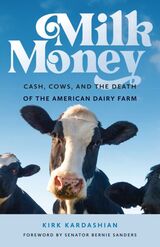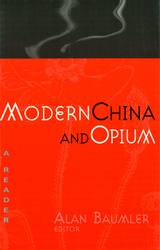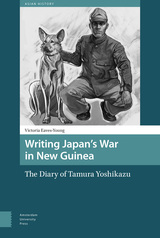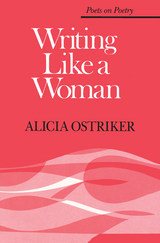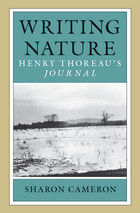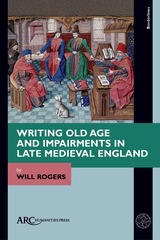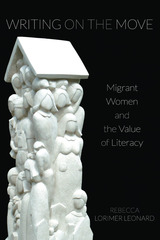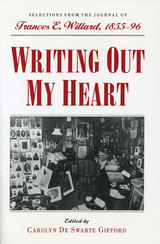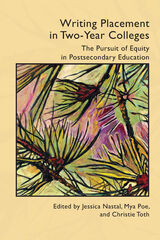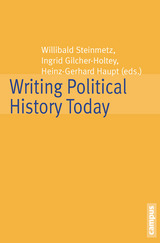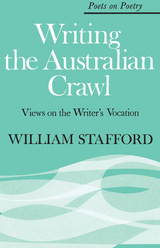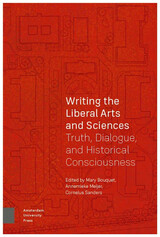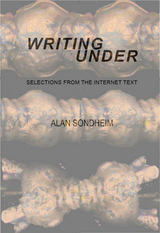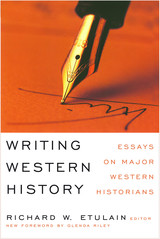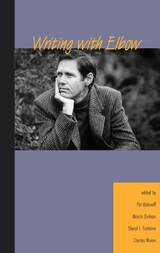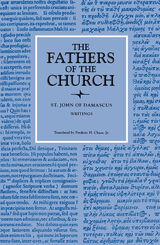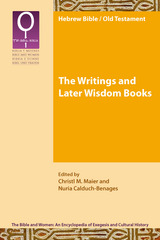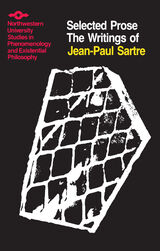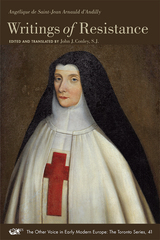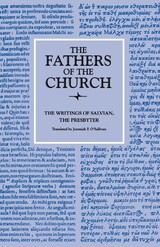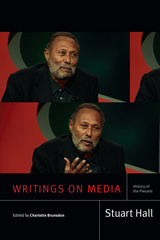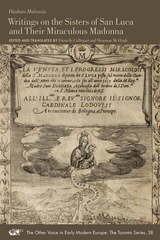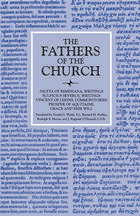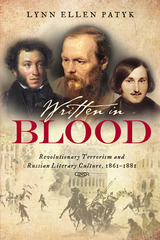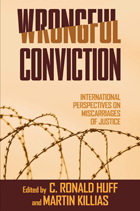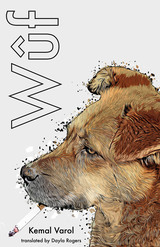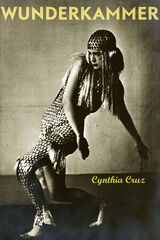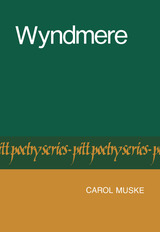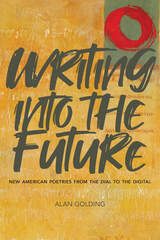 Writing into the Future: New American Poetries from "The Dial" to the Digital
Alan Golding
University of Alabama Press, 2022 A career-spanning collection of essays from a leading scholar of avant-garde poetry
Writing into the Future: New American Poetries from “The Dial” to the Digital collects Alan Golding’s essays on the futures (past and present) of poetry and poetics. Throughout the 13 essays gathered in this collection, Golding skillfully joins literary critique with a concern for history and a sociological inquiry into the creation of poetry. In Golding’s view, these are not disparate or even entirely distinct critical tasks. He is able to fruitfully interrogate canons and traditions, both on the page and in the politics of text, culture, and institution.
A central thread running through the chapters is a longstanding interest in how various versions of the “new” have been constructed, received, extended, recycled, resisted, and reanimated in American poetry since modernism. To chart the new, Golding contends with both the production and the reception of poetry, in addition to analyzing the poems themselves. In a generally chronological order, Golding reconsiders the meaning for contemporary poets of high modernists like Ezra Pound and William Carlos Williams, as well as the influential poetry venues The Dial and The Little Review, where less prominent but still vital poets contested what should come “next.” Subsequent essays track that contestation through The New American Poetry and later anthologies.
Mid-century major figures like Robert Creeley and George Oppen are discussed in their shared concern for the serial poem. Golding’s essays bring us all the way back to the present of the poetic future, with writing on active poets like Rachel Blau DuPlessis, Susan Howe, and Bruce Andrews and on the anticipation of digital poetics in the material texts of L=A=N=G=U=A=G=E writing. Golding charts the work of defining poetry’s future and how we rewrite the past for an unfolding present.
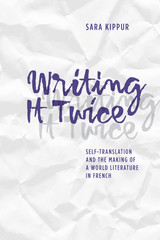 Writing It Twice: Self-Translation and the Making of a World Literature in French
Sara Kippur
Northwestern University Press, 2015 Though the practice of self-translation long predates modernity, it has found new forms of expression in the global literary market of the late twentieth and early twenty-first century. The international renown of self-translating authors Samuel Beckett, Joseph Brodsky, and Vladimir Nabokov has offered motivation to a new generation of writers who actively translate themselves. Intervening in recent debates in world literature and translation studies, Writing It Twice establishes the prominence and vitality of self-translation in contemporary French literature. Because of its intrinsic connection to multiple literary communities, self-translation prompts a reexamination of the aesthetics and politics of reading across national lines. Kippur argues that self-translated works should be understood as the paradigmatic example of world literature and, as such, crucial for interpreting the dynamics of literary circulation into and out of French.
Writing Japan's War in New Guinea: The Diary of Tamura Yoshikazu
Victoria Eaves-Young
Amsterdam University Press, 2020 Tamura Yoshikazu is destined to die on the alien shores of the New Guinea warzone. Devoid of family contact, perplexed by the unfamiliarity of his environment, deprived of even meagre amenities and faced with the spectre of debilitating illness and starvation, this solitary soldier commenced a diary in the early part of 1943. Employed in the hard labour of building airstrips, he is ground down by tedium, disheartened by the now dysfunctional military hierarchy, consumed by grief at the meaningless deaths of comrades, and stripped of any chance of being involved in an aspect of war that he considers heroic and meaningful. Profoundly unsettled by all that appears to be at odds with the kokutai ideology, Tamura employs strategies through the vehicle of his diary to enable him to remain committed to the pathway of death on behalf of the Emperor.
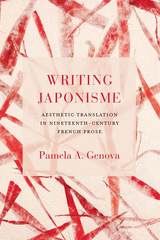 Writing Japonisme: Aesthetic Translation in Nineteenth-Century French Prose
Pamela A. Genova
Northwestern University Press, 2016 In her book, Pamela Genova suggests that as critics move in general from a literal to a more metaphoric understanding and presentation of Japonisme, the mutability of the phenomenon is highlighted in a rich and illuminating manner. By exploring the conditions of the creation of these works, accenting the original aims of the artists, the manipulations carried out by art dealers, gallery owners, and boutique managers, as well as the gestures of explanation, interpretation, and judgment offered by the professional and amateur critics, Japonisme takes on an even more versatile nature. Further, a complex web of correspondence germinates among these artists—both French and Japanese—and their many critics. It is in this light that the truly rich character of Japonisme comes forth, since the undesirability, even the impossibility of the attempt to reduce it to a single genre, style, era, or cultural cadre attests to its elusiveness and its Protean nature. Japonisme does not correspond to a single dictionary definition, no matter how subtle or self-aware that definition might be. By situating the dynamics of Japonisme as a response on the part of French culture to the culture of Japan, we gain a keener sense of the multiplicity of modern French sensibility itself, of how the awareness of a nation’s language, history, and art forms can be creatively reflected in the images of a culture seemingly radically different from its own.
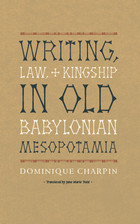 Writing, Law, and Kingship in Old Babylonian Mesopotamia
Dominique Charpin
University of Chicago Press, 2010 Ancient Mesopotamia, the fertile crescent between the Tigris and Euphrates rivers in what is now western Iraq and eastern Syria, is considered to be the cradle of civilization—home of the Babylonian and Assyrian empires, as well as the great Code of Hammurabi. The Code was only part of a rich juridical culture from 2200–1600 BCE that saw the invention of writing and the development of its relationship to law, among other remarkable firsts. Though ancient history offers inexhaustible riches, Dominique Charpin focuses here on the legal systems of Old Babylonian Mesopotamia and offers considerable insight into how writing and the law evolved together to forge the principles of authority, precedent, and documentation that dominate us to this day. As legal codes throughout the region evolved through advances in cuneiform writing, kings and governments were able to stabilize their control over distant realms and impose a common language—which gave rise to complex social systems overseen by magistrates, judges, and scribes that eventually became the vast empires of history books. Sure to attract any reader with an interest in the ancient Near East, as well as rhetoric, legal history, and classical studies, this book is an innovative account of the intertwined histories of law and language.
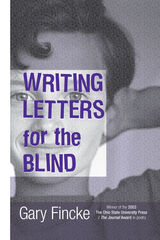 WRITING LETTERS FOR THE BLIND
Gary Fincke
Ohio State University Press, 2003 These poems begin in the coming-of-age moments that change us by forcing recognition of physical weakness, the power of sex, the importance of family, the presence of evil, and the prevalence of mortality. The book opens with narratives taken primarily from childhood and then, divided by long poem sequences, moves to adulthood and confrontation with the identity we acquire through close relationships and the pressures of our appetites, finally ending with what reads as a universal prayer of redemption. Writing Letters for the Blind presents the reader with visions of this world and all its beauty and sordidness, joy and disappointment. This poet reports the breaking news just in from the heart and soul, and the body as well. “My father has taught me the beatitudes of sight,” Fincke tells us, always aware of what we owe to those who brought us here. He stays up through the starry darkness in the insomnia of one who feels it his duty to pay passionate attention, a poet engaged in “the basic defense of simple things.”
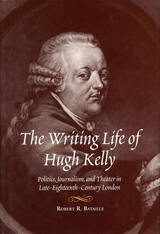 The Writing Life of Hugh Kelly: Politics, Journalism, and Theatre in Late-Eighteenth-Century London
Robert R. Bataille
Southern Illinois University Press, 2000
Robert R. Bataille demonstrates convincingly that between 1767 and 1777, Anglo-Irish writer Hugh Kelly made major contributions in three areas of British culture: politics, journalism, and theater. Bataille shows how all three activities were integrated in Kelly’s life, suggesting that such interrelationships often existed in the rough and ready London culture during the early reign of King George III.
When he discovered several newspaper campaigns that Kelly orchestrated as a paid political propagandist for George III and his ministers, Bataille understood in part how important Kelly was to his era. In his capacity as propagandist, Kelly defended Hanoverian colonial policies on the eve of the American Revolution, served as a key opponent of the radical Wilkites, and promoted the acceptance of the 1774 Quebec Bill, which established, among other things, the right of the recently defeated French citizens of Quebec to maintain the French language.
A belletristic journalist, Kelly published theater reviews and essays that played a major role in shaping the taste of his era. He wrote in defense of the controversial sentimental drama, and whenever he could, he promoted the major theatrical figure of the age, David Garrick. Under his editorship, the newspaper Public Ledger became a leading source of theater information. Seeking to raise the status of the profession of journalism, he wrote essays and articles that provided his middle-class readers with an insider’s view of the operations of the journalist.
Assessing Kelly’s contributions to the novel and drama, Bataille argues that this powerful journalist stands in the vanguard in the larger struggle against traditional attitudes supporting male superiority and aristocratic privilege. Kelly wrote in favor of gender equality and middle-class respectability, striving to inculcate what modern scholars refer to as the values of sensibility. Bataille also argues, however, that Kelly knew his audience. Instrumental in the rise of professional writing and popular culture, he understood that he had to observe the needs of his audience, detecting cultural trends and using the skills of the rhetorician.
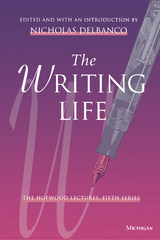 The Writing Life: The Hopwood Lectures, Fifth Series
Nicholas Delbanco
University of Michigan Press, 2000 This collection of essays does not intend to teach its readers to write, nor does it attempt to convince them to take up the pen. Rather, in their respective essays, writers William Kennedy, Robert Hass, Richard Ford, Roger Rosenblatt, Geoffrey Wolff, Diane Johnson, Louise Glück, Philip Levine, and John Barth tell us why literature matters, why it is remarkable to actively take part in advancing one's culture by writing. This volume contributes not only to our understanding of writers and their works, but also to our understanding of the culture in which we live. The essays illustrate how each of our own stories develop, how they become intertwined, how culture itself is created and perpetuated simply by the act of writing such stories.
Originally part of the Hopwood Lecture series at the University of Michigan, these essays were presented in conjunction with the annual awarding of the Hopwood Prizes in creative writing. The internationally recognized awards are granted by the bequest of playwright Avery Hopwood (1884-1928), who sought to encourage student work in the fields of dramatic writing, fiction, poetry, and the essay.
The volume is edited and introduced by Nicholas Delbanco, Robert Frost Collegiate Professor of English Language and Literature and Chair of the Hopwood Awards Committee, University of Michigan. He is also a novelist and author of seventeen books.
Writing Like a Woman
Alicia Ostriker
University of Michigan Press, 1983 "'If we have the habit of freedom and the courage to write exactly as we think,' as Woolf puts it in A Room of One's Own, writing like a woman simply means writing like what one actually is, in sickness and health, richer and poorer, belly and bowels, the consonants and the vowels too. We may have a general sense that women poets are more likely than men, at the present time, to write in detail about their bodies; to take power relationships as a theme; to want to speak with a strong rather than a subdued voice; are less likely to seek distance, more likely to seek intimacy, in poetic tone. But generalization would be foolish here. 'Woman poet,' like 'American poet' or 'French poet' or 'Russian poet,' allows--even insists on--diversity, while implying something valuable in common, some shared language and life, of tremendous importance to the poet and the poet's readers." --Alicia Ostriker
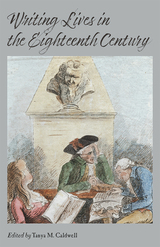 Writing Lives in the Eighteenth Century
Tanya M. Caldwell
Bucknell University Press, 2020 Writing Lives in the Eighteenth Century is a collection of essays on memoir, biography, and autobiography during a formative period for the genre. The essays revolve around recognized male and female figures—returning to the Boswell and Burney circle—but present arguments that dismantle traditional privileging of biographical modes. The contributors reconsider the processes of hero making in the beginning phases of a culture of celebrity. Employing the methodology William Godwin outlined for novelists of taking material “from all sources, experience, report, and the records of human affairs,” each contributor examines within the contexts of their time and historical traditions the anxieties and imperatives of the auto/biographer as she or he shapes material into a legacy. New work on Frances Burney D’Arblay’s son, Alexander, as revealed through letters; on Isabelle de Charriere; on Hester Thrale Piozzi; and on Alicia LeFanu and Frances Burney’s realignment of family biography extend current conversations about eighteenth century biography and autobiography.
Published by Bucknell University Press. Distributed worldwide by Rutgers University Press.
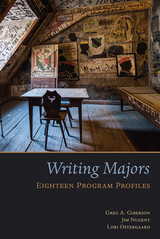 Writing Majors: Eighteen Program Profiles
Greg Giberson
Utah State University Press, 2015 The writing major is among the most exciting scenes in the evolving American university. Writing Majors is a collection of firsthand descriptions of the origins, growth, and transformations of eighteen different programs. The chapters provide useful administrative insight, benchmark information, and even inspiration for new curricular configurations from a range of institutions.
A practical sourcebook for those who are building, revising, or administering their own writing majors , this volume also serves as a historical archive of a particular instance of growth and transformation in American higher education. Revealing bureaucratic, practical, and institutional matters as well as academic ideals and ideologies, each profile includes sections providing a detailed program review and rationale, an implementation narrative, and reflection and prospection about the program.
Documenting eighteen stories of writing major programs in various stages of formation, preservation, and reform and exposing the contingencies of their local and material constitution, Writing Majors speaks as much to the “how to” of building writing major programs as to the larger “what,” “why,” and “how” of institutional growth and change.
Writing Margins: The Textual Construction of Gender in Heian and Kamakura Japan
Terry Kawashima
Harvard University Press, 2001 In texts from the mid-Heian to the early Kamakura periods, certain figures appear to be “marginal” or removed from “centers” of power. But why do we see these figures in this way?
This study first seeks to answer this question by examining the details of the marginalizing discourse found in these texts. Who is portraying whom as marginal? For what reason? Is the discourse consistent? The author next considers these texts in terms of the predilection of modern scholarship, both Japanese and Western, to label certain figures “marginal.” She then poses the question: Is this predilection a helpful tool or does it inscribe modern biases and misconceptions onto these texts?
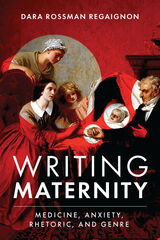 Writing Maternity: Medicine, Anxiety, Rhetoric, and Genre
Dara Rossman Regaignon
Ohio State University Press, 2021 When did mothers start worrying so much? Why do they keep worrying so? Writing Maternity: Medicine, Anxiety, Rhetoric, and Genre answers these questions by identifying the nineteenth-century rhetorical origins of maternal anxiety, inviting readers to think about worrying not as something individual mothers do but as an affect that since Victorian times has defined middle-class motherhood itself. In this book, Dara Rossman Regaignon offers the first comprehensive study of child-rearing advice literature from early-nineteenth-century Britain and argues that the historical emergence of that genre catalyzed a durable shift in which maternal care was identified as maternal anxiety. Tracing the rhetorical circulation of this affect from advice literature through the memoirs of Mary Martha Sherwood (1775–1851) and Catharine Tait (1819–1878), as well as fiction by Charles Dickens, Elizabeth Gaskell, the Brontës, and Charlotte Mary Yonge, Regaignon gives maternal anxiety a literary-rhetorical history. She does this by bringing concepts such as uptake and genre ecology into literary studies from rhetorical genre theory, making a case for a mobile and culturally influential notion of genre. Examining specific case studies on child death, paid childcare, and infant doping, among others, Regaignon argues that the ideology of nurturing motherhood was predicated upon the rhetorical cultivation of maternal anxiety—which has had significant consequences for the experience of motherhood and maternal feeling.
 Writing Mormon History 2: Authors' Stories Behind Their Works
Geisner, Joseph W.
Signature Books, 2024 Like its predecessor, Writing Mormon History, this book delves into the captivating narratives of multiple historians as they unfold the backstories of their various publishing endeavors. The authors detail their journeys in crafting influential books, articles, newspaper pieces, and anthologies that have significantly shaped our comprehension of Mormon history. Beyond the polished final products that readers typically encounter, the book explores the driving forces compelling authors to explore their topics and the sacrifices they make along the way. The volume invites readers to ponder the motivations that fuel an author’s commitment to rigorous research and writing, and sheds light on the substantial time, ranging from minutes to long hours, invested in the sources they cite. Through these narratives, readers gain an appreciation for the dedication and passion that goes into the making of historical scholarship. Whether you're an avid historian, a student of history, a scholar, or an aspiring author, Writing Mormon History 2 offers an important glimpse into the minds of these writers. This anthology provides a unique opportunity to connect with the human stories behind the academic works that have left an indelible mark on our understanding of Mormon history.
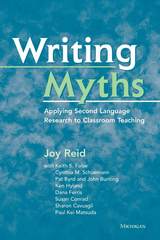 Writing Myths: Applying Second Language Research to Classroom Teaching
Joy Reid with Keith S. Folse, Cynthia M. Schuemann, Pat Byrd and John Bunting, Ken Hyland, Dana Ferris, Susan Conrad, Sharon Cavusgil, Paul Kei Matsuda
University of Michigan Press, 2008 This volume was conceived as a "best practices" resource for writing teachers in the way that Vocabulary Myths by Keith S. Folse is one for reading and vocabulary teachers. It was written to help ensure that writing teachers are not perpetuating the myths of teaching writing. Each author is a practicing teacher who selected his or her "myth" based on classroom experience and expertise. Both the research and pedagogy in this book are based on the newest research in, for example, teacher preparation, EAP and ESP, and corpus linguistics. The myths discussed in this book are: § Teaching vocabulary is not the writing teacher's job. (Keith S. Folse) § Teaching citation is someone else's job. (Cynthia M. Schuemann) § Where grammar is concerned, one size fits all. (Pat Byrd and John Bunting) § Academic writing should be assertive and certain. (Ken Hyland) § Students must learn to correct all their writing errors. (Dana Ferris) § Corpus-based research is too complicated to be useful for writing teachers. (Susan Conrad) § Academic writing courses should focus on paragraph and essay development. (Sharon Cavausgil) § International and U.S. resident ESL writers cannot be taught in the same class. (Paul Kei Matsuda) The book concludes with a discussion of students' myths about academic writing and teaching written by Joy Reid.
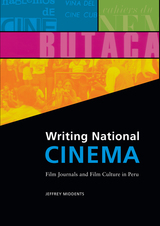 Writing National Cinema: Film Journals and Film Culture in Peru
Jeffrey Middents
Dartmouth College Press, 2009 Writing National Cinema traces the twenty-year history of the Peruvian film journal Hablemos de cine alongside that of Peruvian filmmaking and film culture. Similar to the influential French journal Cahiers du cinéma, Hablemos de cine began with a group of young critics interested in claiming the director’s use of mise-en-scène as the exclusive method of film analysis rather than thematic or star-oriented topics — hence, the title of the publication, derived from their battle cry at post-screening discussions: “Let’s talk about film.” Their critical authority grew with the rise of local filmmaking and the nationalist fervor of the late 1960s and early 1970s. When government sponsorship spurred feature filmmaking in the mid-1970s, their perspective eschewed the politically militant readings that characterized most writing and film from the rest of Latin America at the time. By the 1980s, the critics at Hablemos de cine had helped to engender a commercial, Hollywood-influenced cinematic vision—best exemplified by Peruvian auteur Francisco Lombardi—and stimulated a unique, if isolating, national identity through film. The first book-length study of Peruvian film culture to appear in English, Middents’s work offers thoughtful consideration of the impact of criticism on the visual stylings of a national cinema.
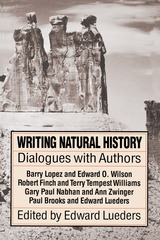 Writing Natural History: Dialogue with Authors
Edward Lueders
University of Utah Press, 1989 Writing Natural History is the edited record of four public dialogues held at the University of Utah in 1988 between eminent writers in the fields of natural history. In these interchanges the writers discussed their traditions, perspectives, values, purposes, techniques, and personal insights. Their conversations, like their work, link the sciences with the humanities in surprising ways, enhancing our understanding and appreciation of both. This volume maintains the vitality of the spoken dialogues and conveys a lively sense of each speaker’s concern with the processes of the natural world and our human position in it.
Half of the authors began as professionals in the natural sciences before becoming recognized for their literary skills; the other half are established writers whose works reflect their vital human affinity with and respect for nature. Writing Natural History will appeal to all readers involved in conservation, nature study, creative writing, environmental issues, the natural sciences, the outdoors, and the ecological politics of Earth.
Authors dialogues feature Barry Lopez and Edward O. Wilson, Robert Finch and Terry Tempest Williams, Gary Paul Nabhan and Ann Zwinger, Paul Brooks and Edward Lueders.
Writing Nature: Henry Thoreau's Journal
Sharon Cameron
University of Chicago Press, 1989 At his death, Henry Thoreau left the majority of his writing unpublished. The bulk of this material is a journal that he kept for twenty-four years. Sharon Cameron's major claim is that this private work (the Journal) was Thoreau's primary work, taking precedence over the books that he published in his lifetime. Her controversial thesis views Thoreau's Journal as a composition that confounds the distinction between public and private—the basis on which our conventional treatment of discourse depends.
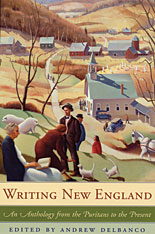 Writing New England: An Anthology from the Puritans to the Present
Edited by Andrew Delbanco
Harvard University Press, 2001 The story of New England writing begins some 400 years ago, when a group of English Puritans crossed the Atlantic believing that God had appointed them to bring light and truth to the New World. Over the centuries since, the people of New England have produced one of the great literary traditions of the world--an outpouring of poetry, fiction, history, memoirs, letters, and essays that records how the original dream of a godly commonwealth has been both sustained and transformed into a modern secular culture enriched by people of many backgrounds and convictions.
Writing New England, edited by the literary scholar and critic Andrew Delbanco, is the most comprehensive anthology of this tradition, offering a full range of thought and style. The major figures of New England literature--from John Winthrop and Anne Bradstreet to Emerson, Hawthorne, Dickinson, and Thoreau, to Robert Frost, Wallace Stevens, Robert Lowell, Anne Sexton, and John Updike--are of course represented, often with fresh and less familiar selections from their works. But Writing New England also samples a wide range of writings including Puritan sermons, court records from the Salem witch trials, Felix Frankfurter's account of the case of Sacco and Vanzetti, William Apess's eulogy for the Native American King Philip, pamphlets and poems of the Revolution and the Civil War, natural history, autobiographical writings of W. E. B. Du Bois and Malcolm X, Mary Antin's account of the immigrant experience, John F. Kennedy's broadcast address on civil rights, and A. Bartlett Giamatti's memoir of a Red Sox fan.
Organized thematically, this anthology provides a collective self-portrait of the New England mind. With an introductory essay on the origins of New England, a detailed chronology, and explanatory headnotes for each selection, the book is a welcoming introduction to a great American literary tradition and a treasury of vivid writing that defines what it has meant, over nearly four centuries, to be a New Englander.
From the Preface:
"Imposing one unitary meaning on New England would be as foolish as it would be unconvincing. Yet one purpose of this book is to convey some sense of New England's continuities and coherence...Not all the writers in this book are major figures (a few are barely known), but all are here because of the bracing freshness with which they describe places, people, ideas, and events to which, even if the subject is familiar, we are re-awakened."
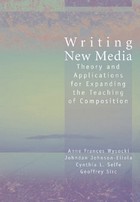 Writing New Media: Theory and Applications for Expanding the Teaching of Composition
Anne Frances Wysocki, Johndan Johnson-Eilola, Cynthia L. Selfe, & Geoffrey Sirc
Utah State University Press, 2004 As new media mature, the changes they bring to writing in college are many and suggest implications not only for the tools of writing, but also for the contexts, personae, and conventions of writing. An especially visible change has been the increase of visual elements-from typographic flexibility to the easy use and manipulation of color and images. Another would be in the scenes of writing-web sites, presentation "slides," email, online conferencing and coursework, even help files, all reflect non-traditional venues that new media have brought to writing. By one logic, we must reconsider traditional views even of what counts as writing; a database, for example, could be a new form of written work. The authors of Writing New Media bring these ideas and the changes they imply for writing instruction to the audience of rhetoric/composition scholars. Their aim is to expand the college writing teacher's understanding of new media and to help teachers prepare students to write effectively with new media beyond the classroom. Each chapter in the volume includes a lengthy discussion of rhetorical and technological background, and then follows with classroom-tested assignments from the authors' own teaching.
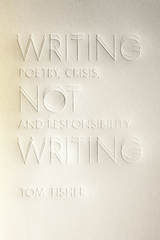 Writing Not Writing: Poetry, Crisis, and Responsibility
Tom Fisher
University of Iowa Press, 2017 The poet George Oppen comments, “There are situations which cannot honorably [be] met by art, and surely no one need fiddle precisely at the moment that the house next door is burning.” To write poetry under such circumstances, he continues, “would be a treason to one’s neighbor.” Committing himself, then, to more direct and conventional forms of response and responsibility, Oppen leaves poetry behind for twenty-five years. The disasters of the 1930s, for Oppen, put poetry into a fundamental question that could not be resolved or overcome. Yet if crisis is continual, then poetry is always turning away from the neighbor in need, always an irresponsible response in a world persistently falling apart.
Writing Not Writing both confirms this question into which crisis puts poetry and explores alternative modes of “response” and “responsibility” that poetry makes possible. Reading the silences of Oppen, Carl Rakosi, and Bob Kaufman, the renunciation of Laura Riding, and other more contemporary instances of poetic abnegation, Tom Fisher explores silence, refusal, and disavowal as political and ethical modes of response in a time of continuous crisis. Through a turn away from writing, these poets offer strategies of refusal and departure that leave anagrammatical hollows behind, activating the negational capacities of writing and aesthetics to disrupt the empire of sense, speech, and agency.
Fisher’s work is both an engaging and detailed analysis of four individual poets who left poetry behind and a theoretically provocative exploration of the political and ethical possibilities of silence, not-doing, and disavowal. In lucid but nuanced terms, Fisher makes the case that, from at least modernism forward, poetry is marked by refusals of speech and sense in order to open possibilities of response outside conventional forms of responsibility.
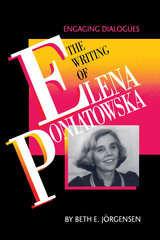 The Writing of Elena Poniatowska: Engaging Dialogues
By Beth E. Jörgensen
University of Texas Press, 1994 Elena Poniatowska is one of Latin America's most distinguished and innovative living writers. Advocacy of women and the poor in their struggle for social and economic justice, denunciation of the repression of that struggle, and a tendency to blur the boundaries between conventional literary forms characterize her writing practice. Asserting that Poniatowska's writing has been uniquely shaped by her experience as a journalist and interviewer, Beth Jörgensen addresses four important texts: Palabras cruzadas (interviews), Hasta no verte Jesús mío (testimonial novel), La noche de Tlatelolco (oral history), and La "Flor de Lis" (novel of development). She also treats related pieces, including Lilus Kikus (short fiction), De noche vienes (short stories), Fuerte es el silencio (chronicles), and several of Poniatowska's essays. Her readings incorporate a variety of critical approaches within a feminist framework.
 The Writing of Melancholy: Modes of Opposition in Early French Modernism
Ross Chambers
University of Chicago Press, 1993 Ross Chambers, an eminent critic of French literature, proposes an original theory of the development of French modernism. His work brings together practical criticism, textual theory, and historical analysis to fashion a new way of thinking about writing and reading as they intersect with history. Along the way, Chambers offers brilliant readings of texts from Madame Bovary to Les Fleurs du mal.
After the failed revolution of 1848, the sense of disillusion that swept through France deeply affected the literature of the time. Chambers argues that literary melancholy and disorientation constituted a symptom of historical conditions rather than, as many other critics contend, a willful resistance to them.
Enriched by careful readings of works by Flaubert, Nerval, Baudelaire, Gautier, and Hugo, this book is a subtle meditation on the powers of writing and reading and a suggestive contribution to current debates over the historical status of literary texts. Originally published in French, the book has been revised and expanded to include a new chapter on Gérard de Nerval's "Sylvie."
Writing Old Age and Impairments in Late Medieval England
Will Rogers
Arc Humanities Press, 2021 The old speaker in Middle English literature often claims to be impaired because of age. This admission is often followed by narratives that directly contradict it, as speakers, such as the Reeve in Chaucer's Canterbury Tales or Amans in Gower's Confessio Amantis, proceed to perform even as they claim debility. More than the modesty topos, this contradiction exists, the book argues, as prosthesis: old age brings with it debility, but discussing age-related impairments augments the old, impaired body, while simultaneously undercutting and emphasizing bodily impairments. This language of prosthesis becomes a metaphor for the works these speakers use to fashion narrative, which exist as incomplete yet powerful sources.
Writing on Drawing: Essays on Drawing Practice and Research
Edited by Steve Garner
Intellect Books, 2008 Increased public and academic interest in drawing and sketching, both traditional and digital, has allowed drawing research to emerge recently as a discipline in its own right. In light of this development, Writing on Drawing presents a collection of essays that reveal a provocative agenda for the field, analyzing the latest work on creativity, education, and thinking from a variety of perspectives. Bringing together contributions by leading artists and researchers, this volume offers consolidation, discussion, and guidance for a previously fragmented discipline. Available for the first time in paperback, it will be an essential resource for artists, scientists, designers, and engineers.
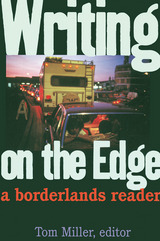 Writing on the Edge: A Borderlands Reader
Edited by Tom Miller
University of Arizona Press, 2003 Twenty miles wide and two thousand long, the U.S.-Mexico borderland is a country unto itself that has been celebrated in the works of many writers—and not just those who call it home. Here artists as disparate as Carlos Fuentes, Maya Angelou, and Allen Ginsberg have found literary inspiration, presenting the region through varied viewpoints that give border writing its unusual scope and texture. This wide-ranging anthology—gathering short stories and essays, song lyrics and poems—offers readers a new appreciation of the border and its literature. Residents of the region may be startled to learn how many passers-by have been struck by this unruly slice of North America, while those living in other parts of the country may be surprised to find it more than a dateline for reports of smuggling and illegal immigration. Collected here are both celebrated and underappreciated gems of American and Mexican literature depicting a region that for some writers represents an exotic land, for others home. Writing on the Edge juxtaposes passages by New Jersey poet William Carlos Williams and native songwriter Flaco Jiménez, British novelist Graham Greene and American poet Demetria Martínez, to show us the border from both sides and from a distance. In all of the selections, La Frontera looms larger than life—an energizing force that frames the lives of the characters living within its boundaries. Included in the book is a literary map of the border highlighting the sites with which each author is identified. As editor Tom Miller observes, the very notion of literature in a region considered an "irrelevant nuisance" allows for more free-ranging creative output." Writing on the Edge sparkles with such creativity and invites readers to enjoy the best of two worlds—and of the world they share.
Print a literary map of the borderlands here!
Writing on the Move: Migrant Women and the Value of Literacy
Rebecca Lorimer Leonard
University of Pittsburgh Press, 2018
Winner, 2019 CCCC Outstanding Book Award
Honorable Mention, 2018 Coalition of the Feminist Scholars in the History of Rhetoric & Composition Winifred Bryan Horner Award
In this book, Rebecca Lorimer Leonard shows how multilingual migrant women both succeed and struggle in their writing contexts. Based on a qualitative study of everyday multilingual writers in the United States, she shows how migrants’ literacies are revalued because they move with writers among their different languages and around the world. Writing on the Move builds a theory of literate valuation, in which socioeconomic values shape how multilingual migrant writers do or do not move forward in their lives. The book details the complicated reality of multilingual literacy, which is lived at the nexus of prejudice, prestige, and power.
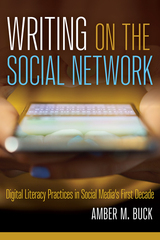 Writing on the Social Network: Digital Literacy Practices in Social Media's First Decade
Amber M. Buck
Utah State University Press, 2023 Writing on the Social Network builds upon traditions in longitudinal writing research to present a longer view of the impact of social media technologies on individuals’ literacy practices. Amber M. Buck considers user experiences and digital literacy practices that developed on these platforms in the first decade of social media and calls for a larger acknowledgment of social network sites as locations where individuals engage in sophisticated and literate activity.
Through qualitative case study research, Buck explores how literate activities on social network sites coalesced around three areas crucial for writing in digital environments: (1) a heightened awareness of audience and an ability to tailor messages to specific audiences; (2) an understanding of how personal data is collected and circulated in online spaces; and (3) a means through which to use the first two skills for self-promotion and self-presentation in both personal and professional settings. She identifies several distinct literacy practices and strategies used by participants to communicate effectively and addresses how these strategies can help writing researchers and internet scholars understand the impact of social media’s first decade and can inform the ways they will research and understand social media’s second decade.
Social media platforms represent important locations where the different influences on writing become visible. Writing on the Social Network is a close study of the rich literate practices individuals have engaged in on social network sites over the last ten years that allows for a better understanding of the role social media plays in shaping digital literacy.
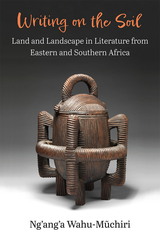 Writing on the Soil: Land and Landscape in Literature from Eastern and Southern Africa
Ng’ang’a Wahu-Muchiri
University of Michigan Press, 2023 Across contiguous nation-states in Eastern Africa, the geographic proximity disguises an ideological complexity. Land has meant something fundamental in the sociocultural history of each country. Those concerns, however, have manifested into varied political events, and the range of struggles over land has spawned a multiplicity of literary interventions. While Kenya and Uganda were both British colonies, Kenya's experience of settler land alienation made for a much more violent response against efforts at political independence. Uganda's relatively calm unyoking from the colonial burden, however, led to a tumultuous post-independence. Tanzania, too, like Kenya and Uganda, resisted British colonial administration—after Germany's defeat in World War 1. In Writing on the Soil, author Ng’ang’a Wahu-Mũchiriargues that representations of land and landscape perform significant metaphorical labor in African literatures, and this argument evolves across several geographical spaces. Each chapter's analysis is grounded in a particular locale: western Kenya, colonial Tanganyika, post-independence Tanzania, Zimbabwe, Nairobi, Dar es Salaam, Anam Ka'alakol (Lake Turkana), Kampala, and Kitgum in Northern Uganda. Moreover, each section contributes to a deeper understanding of the aesthetic choices that authors make when deploying tropes revolving around land, landscape, and the environment. Mũchiri disentangles the numerous connections between geography and geopolitical space on the one hand, and ideology and cultural analysis on the other. This book embodies a multi-layered argument in the sphere of African critical scholarship, while adding to the growing field of African land rights scholarship—an approach that foregrounds the close reading of Africa’s literary canon.
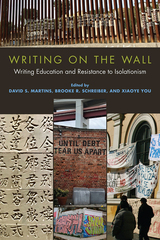 Writing on the Wall: Writing Education and Resistance to Isolationism
edited by David S. Martins, Brooke R. Schreiber & Xiaoye You
Utah State University Press, 2022 The first concerted effort of writing studies scholars to interrogate isolationism in the United States, Writing on the Wall reveals how writing teachers—often working directly with students who are immigrants, undocumented, first-generation, international, and students of color—embody ideas that counter isolationism.
The collection extends existing scholarship and research about the ways racist and colonial rhetorics impact writing education; the impact of translingual, transnational, and cosmopolitan ideologies on student learning and student writing; and the role international educational partnerships play in pushing back against isolationist ideologies. Established and early-career scholars who work in a broad range of institutional contexts highlight the historical connections among monolingualism, racism, and white nationalism and introduce community- and classroom-based practices that writing teachers use to resist isolationist beliefs and tendencies.
“Writing on the wall” serves as a metaphor for the creative, direct action writing education can provide and invokes border spaces as sites of identity expression, belonging, and resistance. The book connects transnational writing education with the fight for racial justice in the US and around the world and will be of significance to secondary and postsecondary writing teachers and graduate students in English, linguistics, composition, and literacy studies.
Contributors: Olga Aksakalova, Sara P. Alvarez, Brody Bluemel, Tuli Chatterji, Keith Gilyard, Joleen Hanson, Florianne Jimenez Perzan, Rebecca Lorimer Leonard, Layli Maria Miron, Tony D. Scott, Kate Vieira, Amy J. Wan
 Writing on Water: The Sounds of Jewish Prayer
Judit Niran Frigyesi
Central European University Press, 2018 Writing on Water grasps the phenomenon of sound in prayer, that is, a meaning in sounds and soundscapes, and a musical essence in the act of praying. The impetus for the book arose from the author’s fieldwork among traditional Jews during the era of communism in Budapest and Prague. In that period the Jewish religion and Jewishness in general were supressed and rituals became semi-secret and turned inward. The book is a witness to these communities and their rituals, but it goes beyond documentation. The uniqueness of the sounds of the rituals compelled the author to try to comprehend how melodies and soundscapes became the sustaining/protective environment, as well as the vehicle, for the expression of a world-orientation—in a situation where open discourse was inconceivable. The book is based on extensive interviews, musical recordings, photographs and scholarly analyses. It is unique in its choice of communities, its wealth of original documents, and its novel interpretation of sound. Writing on Water is creative non-fiction. The presentation is evocative and poetic, but at the same time it transmits knowledge. The book can aid research and serve in courses in philosophy, religion, music, ethnomusicology, anthropology, aesthetics, Jewish studies, folklore, oral history, and performance studies. It is also a work of art and literature.
Writing Out My Heart: Selections from the Journal of Frances E. Willard, 1855-96
Edited by Carolyn De Swarte Gifford
University of Illinois Press, 1995 Frances E. Willard's powerful leadership of the Woman's Christian Temperance Union (WCTU) made her one of the most commanding figures in the reform movements of the nineteenth century. World renowned and a force to be reckoned with, Willard grappled publicly and private with difficult issues, including temperance, slavery, women's rights, and her own sexuality. These selections from her forty-nine-volume journal reveal the private and confidential side of Willard for the first time. She comes to life in these pages--a person of character, passion, and self-determination who came to represent the woman of the dawning era. Supplemented by an in-depth introduction and generous annotations, Writing Out My Heart sheds new light on an extraordinary individual and the lives of women in nineteenth-century America.
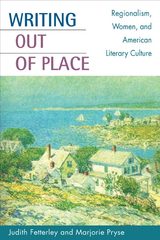 Writing out of Place: Regionalism, Women, and American Literary Culture
Judith Fetterley and Marjorie Pryse
University of Illinois Press, 2002 In Writing out of Place, Judith Fetterley and Marjorie Pryse explore a countertradition of nineteenth–century writing previously ignored by American literary history that challenged the definition of nation and literature that emerged after the Civil War.
Regionalist writers such as Alice Cary, Mary E. Wilkins Freeman, Sarah Orne Jewett, Grace King, Alice Dunbar–Nelson, Sui Sin Far, and Mary Austin present narrators who serve as cultural interpreters for persons often considered "out of place" by urban readers. Critiquing the approaches to regional subjects characteristic of local color, this book gives contemporary readers a vantage point from which to approach regions and regional people in the global economy of our own time.
Reclaiming the ground of "close" reading for texts that have been insufficiently read, Fetterley and Pryse situate textual analyses within larger questions such as the ideology of form, feminist standpoint epistemology, queer theory, intersections of race and class, and narrative empathy. In its combination of the critical and the visionary, Writing out of Place proposes regionalism as a model for narrative connection between texts and readers that has the potential to transform American literary culture. Arguing the need for other models for human development than those produced in heroic stories about men and boys, the authors offer regionalism as a source of unconventional and counterhegemonic fictions that should be passed on to future generations of readers.
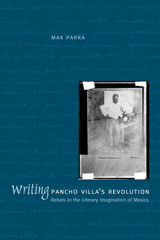 Writing Pancho Villa's Revolution: Rebels in the Literary Imagination of Mexico
By Max Parra
University of Texas Press, 2006 The 1910 Mexican Revolution saw Francisco "Pancho" Villa grow from social bandit to famed revolutionary leader. Although his rise to national prominence was short-lived, he and his followers (the villistas) inspired deep feelings of pride and power amongst the rural poor. After the Revolution (and Villa's ultimate defeat and death), the new ruling elite, resentful of his enormous popularity, marginalized and discounted him and his followers as uncivilized savages. Hence, it was in the realm of culture rather than politics that his true legacy would be debated and shaped. Mexican literature following the Revolution created an enduring image of Villa and his followers. Writing Pancho Villa's Revolution focuses on the novels, chronicles, and testimonials written from 1925 to 1940 that narrated Villa's grassroots insurgency and celebrated—or condemned—his charismatic leadership. By focusing on works by urban writers Mariano Azuela (Los de abajo) and Martín Luis Guzmán (El águila y la serpiente), as well as works closer to the violent tradition of northern Mexican frontier life by Nellie Campobello (Cartucho), Celia Herrera (Villa ante la historia), and Rafael F. Muñoz (¡Vámonos con Pancho Villa!), this book examines the alternative views of the revolution and of the villistas. Max Parra studies how these works articulate different and at times competing views about class and the cultural "otherness" of the rebellious masses. This unique revisionist study of the villista novel also offers a deeper look into the process of how a nation's collective identity is formed.
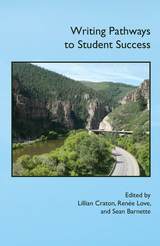 Writing Pathways to Student Success
Lillian Craton
University Press of Colorado, 2017 Teachers of first-year composition courses do essential work. Teaching argumentation and conventions of university-level writing; demystifying citation and punctuation; promoting reading comprehension and analysis. Yet such skills, as important as they are, do not reflect the full scope of our discipline. Some of the best learning in composition coursework relates to students' growth as successful individuals able to live and write in a complex world. Composition instructors demand civil discourse and respect for diversity. They coach students in time management and the creative process. They build up confidence, break down learning obstacles, and promote self-examination. The essays found in Writing Pathways for Student Success, written by and for instructors of college writing, examine life lessons that both students and instructors learn from first-year composition courses. Contributors: Lori Brown, Kathryn Crowther, Casie Fedukovich, Rachel Anya Fomalhaut, Lynée Lewis Gaillet, Christopher Garland, Ruth A. Goldfine, Pamela Henney, Rachel McCoppin, Deborah Mixson-Brookshire, Karen Bishop Morris, Sarah O’Connor, Abigail G. Scheg, Lisa Whalen
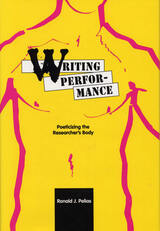 Writing Performance: Poeticizing the Researcher's Body
Ronald J. Pelias
Southern Illinois University Press, 1999
Ronald J. Pelias is concerned with writing about performance, from the everyday performative routines to the texts on stage. He seeks to write performatively, to offer poetic or aesthetic renderings of performance events in order to capture some sense of their nature. In his quest for the spirit of theatrical performances, Pelias asks more of the written word than the word can deliver. Yet the attempt is both desirable—and necessary. To discuss performance without some accounting for its essence as art, he asserts, is at best misleading, at worst, fraud.
Pelias divides his efforts to present performance events into three general categories: "Performing Every Day," "On Writing and Performing," and "Being a Witness." "Performing Every Day" focuses on performances ranging from the daily business of enacting roles to the telling of tales that make life meaningful. It incorporates essays about the ongoing process of presenting oneself in everyday life; the gender script that insists that men enact manly performances; the classroom performances of teachers and students; stories of gender, class, and race that mark identity; and a performance installation entitled "A Day’s Talk."
"On Writing and Performing" examines the written script and performance practices. It includes a description of a struggle between a writer and a performer as they protect their own interests; an intimate look at an apprehensive performer; a short play entitled "The Audition"; and a chronicle of performance process from the perspective of an actor.
"Being a Witness" examines performance from the perspective of the audience and the director: being an audience member; viewing theatre in the context of New York City; directing and being directed by actors’ bodies; and watching The DEF Comedy Jam.
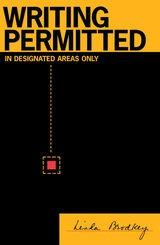 Writing Permitted in Designated Areas Only
Linda Brodkey
University of Minnesota Press, 1996 One teacher's dispatches from the front lines of the culture wars. In the early 1990s, Linda Brodkey ended up on the front page of the New York Times and in the columns of George Will and other conservative pundits. The furor was over the “Writing about Difference” syllabus she helped create at the University of Texas, an effort that came to be one more casualty in the debate over multiculturalism in the academy. Writing Permitted in Designated Areas Only is made up of Brodkey’s dispatches from the front lines of the culture wars. The essays in this book raise provocative questions about the way writing is taught in the United States. Brodkey lambastes conventional composition courses, which since their inception in the mid-nineteenth century have been the site of conflict over what “literacy” really means. She argues that such courses have institutionalized the practice of separating form and content, relegating teachers to the tasks of policing grammar and patrolling the borders of style and literature. Ultimately, this separation of structure and meaning depoliticizes the act of writing, creating an artificial distinction between what is being said and how it is expressed. Comprising specific examples of student work in addition to Brodkey’s own essays, Writing Permitted in Designated Areas Only works against this dynamic. Ranging from personal essay (“Writing on the Bias”) to hard-hitting polemic (“Writing Permitted in Designated Areas Only”) and touching on many of the major issues in the teaching of writing today, this volume explores alternatives to the standard methods for teaching composition. The result is a passionate plea for the loosing of writing to achieve its full power and potential; to unharness writing—and its teachers—from the institutional strictures that stifle both creativity and independent thought.
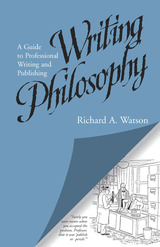 Writing Philosophy: A Guide to Professional Writing and Publishing
Richard A. Watson
Southern Illinois University Press, 1992 Richard A. ("Red") Watson has published fiction, general nonfiction, and scholarly books. His essay "On the Zeedijk," about Descartes in Holland and first published in The Georgia Review, was the lead essay in The Pushcart Prize XV, 1990–1991: Best of the Small Presses. Red knows writing. He also knows academe and has written Writing Philosophy as a kind of survival manual for undergraduates, graduate students, and junior faculty members in philosophy. Also helpful to those in the humanities and the social sciences, the book is a guide to the professional writing and publishing that are essential to an active participation in the conversation and discussion that constitute these professional fields. To the extent that publication is the crucial factor in tenure decisions, it will help the beginning scholar meet tenure criteria. Despite the importance of the oral tradition in philosophy and the influence of the dialogue, many philosophical points are so intricate and complex that they can be advanced, followed, and criticized only if they are written as stepwise arguments for study and contemplation at length and at leisure. Watson provides a set of basic principles and a plan for writing argumentative papers of 1,500 to 15,000 words (3 to 30 printed pages) and books containing a sequence of sustained arguments of 70,000 to 150,000 words (200 to 300 printed pages). Because the first book of most professional philosophers is a revised dissertation, Watson presents a plan for writing that dissertation in such a way that its chapters will serve as publishable articles and the dissertation itself will need very little rewriting as a book. His discussion of the principles of reason, clarity, and argument ranges from such topics as dangling participles and the proper usage of ellipses to matters of categorization and univocity.
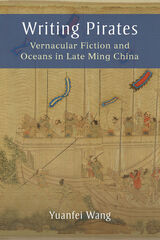 Writing Pirates: Vernacular Fiction and Oceans in Late Ming China
Yuanfei Wang
University of Michigan Press, 2021 In Writing Pirates, Yuanfei Wang connects Chinese literary production to emerging discourses of pirates and the sea. In the late Ming dynasty, so-called “Japanese pirates” raided southeast coastal China. Hideyoshi invaded Korea. Europeans sailed for overseas territories, and Chinese maritime merchants and emigrants founded diaspora communities in Southeast Asia. Travel writings, histories, and fiction of the period jointly narrate pirates and China’s Orient in maritime Asia. Wang shows that the late Ming discourses of pirates and the sea were fluid, ambivalent, and dialogical; they simultaneously entailed imperialistic and personal narratives of the “other”: foreigners, renegades, migrants, and marginalized authors. At the center of the discourses, early modern concepts of empire, race, and authenticity were intensively negotiated. Connecting late Ming literature to the global maritime world, Writing Pirates expands current discussions of Chinese diaspora and debates on Sinophone language and identity.
Writing Placement in Two-Year Colleges: The Pursuit of Equality in Postsecondary Education
Jessica Nastal
University Press of Colorado, 2023 Writing Placement in Two-Year Colleges brings together two-year college teacher-scholar-activists from across the U.S. to share stories, strategies, and data about local efforts at reforming writing placement assessment to advance educational access and equity. The chapters in this edited collection help faculty and writing program administrators navigate the shifting landscape of placement in the 2020s. Contributors demonstrate how two-year colleges have addressed local and state-level pressures for reform, especially at a time when the nation has been rocked by the COVID-19 pandemic with its inequitable economic, social, and physical toll.
Writing Political History Today
Edited by Willibald Steinmetz, Ingrid Gilcher-Holtey, and Heinz-Gerhard Haupt
Campus Verlag, 2013 In recent years political history has been rediscovered by historians. In this volume the contributors approach the new political history in a constructivist way, conceiving the political as a communicative space whose boundaries are constantly reconfigured through acts of verbal, visual, and sometimes violent communication. Writing Political History Today is organized into four sections, focusing on politics and the political as contested concepts; boundary disputes between the political and other spheres; the question whether violence is a means, an object, or the end of political communication; and on a future agenda for writing political history.
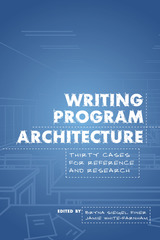 Writing Program Architecture: Thirty Cases for Reference and Research
Bryna Siegel Finer
Utah State University Press, 2017 Writing Program Architecture offers an unprecedented abundance of information concerning the significant material, logistical, and rhetorical features of writing programs. Presenting the realities of thirty diverse and award-winning programs, contributors to the volume describe reporting lines, funding sources, jurisdictions, curricula, and other critical programmatic matters and provide insight into their program histories, politics, and philosophies. Each chapter opens with a program snapshot that includes summary demographic and historical information and then addresses the profile of the WPA, program conception, population served, funding, assessment, technology, curriculum, and more. The architecture of the book itself makes comparison across programs and contexts easy, not only among the programs described in each chapter but also between the program in any given chapter and the reader’s own program. An online web companion to the book includes access to the primary documents that have been of major importance to the development or sustainability of the program, described in a “Primary Document” section of each chapter. The metaphor of architecture allows us to imagine the constituent parts of a writing program as its foundation, beams, posts, scaffolding—the institutional structures that, alongside its people, anchor a program to the ground and keep it standing. The most extensive resource on program structure available to the field, Writing Program Architecture illuminates structural choices made by leaders of exemplary programs around the United States and provides an authoritative source of standard practice that a WPA might use to articulate programmatic choices to higher administration. Contributors: Susan Naomi Bernstein, Remica Bingham-Risher, Brent Chappelow, Malkiel Choseed, Angela Clark-Oates, Patrick Clauss, Emily W. Cosgrove, Thomas Deans, Bridget Draxler, Leigh Ann Dunning, Greg A. Giberson, Maggie Griffin Taylor, Paula Harrington, Sandra Jamieson, Marshall Kitchens, Michael Knievel, Amy Lannin, Christopher LeCluyse, Sarah Liggett, Deborah Marrott, Mark McBeth, Tim McCormack, John McCormick, Heather McGrew, Heather McKay, Heidi A. McKee, Julianne Newmark, Lori Ostergaard, Joannah Portman-Daley, Jacqueline Preston, James P. Purdy, Ben Rafoth, Dara Regaignon, Nedra Reynolds, Shirley Rose, Bonnie Selting, Stacey Sheriff, Steve Simpson, Patricia Sullivan, Kathleen Tonry, Sanford Tweedie, Meg Van Baalen-Wood, Shevaun Watson, Christy I. Wenger, Lisa Wilkinson, Candace Zepeda
 Writing, Publishing, and Reading Local Gazetteers in Imperial China, 1100-1700
Joseph R. Dennis
Harvard University Press, 2015 This book is the definitive study of imperial Chinese local gazetteers, one of the most important sources for premodern Chinese studies. Methodologically innovative, it represents a major contribution to the history of books, publishing, reading, and society.
By examining how gazetteers were read, Joseph R. Dennis illustrates their significance in local societies and national discourses. His analysis of how gazetteers were initiated and produced reconceptualizes the geography of imperial Chinese publishing. Whereas previous studies argued that publishing, and thus cultural and intellectual power, were concentrated in the southeast, Dennis shows that publishing and book ownership were widely dispersed throughout China and books were found even in isolated locales. Adding a dynamic element to our earlier understanding of the publishing industry, Dennis tracks the movements of manuscripts to printers and print labor to production sites. By reconstructing printer business zones, he demonstrates that publishers operated across long distances in trans-regional markets. He also creates the first substantial data set on publishing costs in early modern China—a foundational breakthrough in understanding the world of Chinese books. Dennis’s work reveals areas for future research on newly-identified regional publishing centers and the economics of book production.
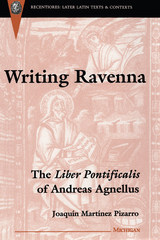 Writing Ravenna: The Liber Pontificalis of Andreas Agnellus
Joaquin Martinez Pizarro
University of Michigan Press, 1995 The subject of Writing Ravenna is the Liber Pontificalis Ecclesiae Ravennatis, composed by Agnellus Andreas, a priest of Ravenna, between 830 and 845 C.E. The Liber Pontificalis has often been studied as a source for ecclesiastical and art history, but hardly ever as a literary creation, in spite of its originality and importance.
Writing Ravenna is an attempt to deal with this work's literary significance and specifically with what it tells us about the creation and circulation of narrative in the Early Middle Ages. The book's first chapter analyzes the ways in which the local and international interests of the Ravenna clergy are reflected in the design, genre, and narrative rhetoric of the Liber. The second chapter characterizes the specific textuality, given that the Liber was composed for oral delivery. The final chapter offers translations of the four most interesting narrative sequences in the Liber, followed by full analyses of sources, narrative technique, and ideological aims.
Writing Ravenna will be of interest to a broad spectrum of scholars, including art historians, scholars of late antiquity and the Early Middle Ages, religious historians, and literary critics.
Joaquin Martinez Pizarro is Associate Professor of English, State University of New York at Stony Brook. He is also the author of A Rhetoric of the Scene: Dramatic Narrative in the Early Middle Ages.
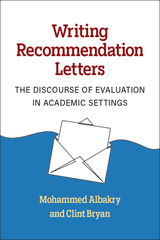 Writing Recommendation Letters: The Discourse of Evaluation in Academic Settings
Mohammed Albakry and Clint Bryan
University of Michigan Press, 2024 Even though reading and writing recommendation letters is one of the essential service tasks of the professorial life of academics, there are few resources to train graduate students and junior academics on how to draft a successful recommendation letter for different academic purposes. Writing Recommendation Letters draws linguistic and rhetorical principles from close to a thousand real-world examples of academic letters of recommendation. As a result, the research that informs the pedagogy is extensive, current, and highly relevant to the discourse of evaluation in academic settings with findings that have implications for genre-based writing instruction, English for Academic Purposes (EAP), and teaching of academic literacies. The authors are two experienced college professors who regularly teach graduate students and mentor young academics, so the reflection questions and instructor suggestions they provide were designed for today’s university classroom. The result is an instructive book that translates academic discourse structures and principles into accessible language, supplying authentic examples and ample writing practice. Key Features - Readers will learn the theoretical context that defines the genre of letters of recommendation.
- The book highlights the similarities and differences between the three different types of letters of recommendation: letters written for graduate admission, letters written in support of fellowship applications, and letters written to support obtaining a faculty position.
- Chapters on different aspects of linguistic and rhetorical features discuss presenting the applicants' credentials, highlighting the strengths of their character, accentuating and downplaying certain traits, as well as the pros and cons of boilerplate language and the use of customary frames for opening and closing.
- Readers will see real-world examples of actual letters of recommendation to see how seasoned faculty build the case for the applicant.
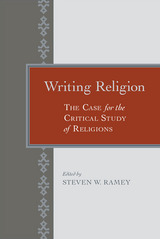 Writing Religion: The Case for the Critical Study of Religion
Edited by Steven W. Ramey
University of Alabama Press, 2015 In 2002, the University of Alabama's Department of Religious Studies established the annual Aronov Lecture Series to showcase the works of nationally recognized scholars of religion capable of reflecting on issues of wide relevance to scholars from across the humanities and social sciences. Writing Religion: The Case for the Critical Study of Religion is an edited collection of essays that highlights critical contributions from the first ten Aronov lecturers.
Section one of the volume, “Writing Discourses,” features essays by Jonathan Z. Smith, Bruce Lincoln, and Ann Pellegrini that illustrate how critical study enables the analysis of discourses in society and history. Section two, “Riting Social Formations,” includes pieces by Arjun Appadurai, Judith Plaskow, and Nathan Katz that reference both the power of rites to construct society and the act of riting as a form of disciplining that both prescribes and proscribes. The writings of Tomoko Masuzawa, Amy-Jill Levine, Aaron W. Hughes, and Martin S. Jaffee appear in section three, “Righting the Discipline.” They emphasize the correction of movements within the academic study of religion.
Steven W. Ramey frames the collection with a thoughtful introduction that explores the genesis, development, and diversity of critical analysis in the study of religion. An afterword by Russell McCutcheon reflects on the critical study of religion at the University of Alabama and rounds out this superb collection.
The mission of the Department of Religious Studies is to “avoid every tendency toward confusing the study of religion with the practice of religion.” Instruction about—rather than in—religion is foundational to the department’s larger goal of producing knowledge of the world and its many practices and systems of beliefs. Infused with this spirit, these fascinating essays, which read like good conversations with learned friends, offer significant examples of each scholar’s work. Writing Religion will be of value to graduate students, advanced undergraduates, and scholars interested in the study of religion from a critical perspective.
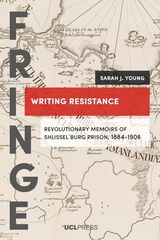 Writing Resistance: Revolutionary Memoirs of Shlissel´burg Prison, 1884-1906
Sarah J. Young
University College London, 2021 The first extended study in English of the revolutionary memoirs from Shlissel’burg Fortress.
In 1884, sixty-eight prisoners convicted of terrorism and revolutionary activity were transferred to a new maximum-security prison at Shlissel´burg Fortress near St. Petersburg. Inhuman conditions in the prison caused severe mental and physical deterioration among the prisoners, and over half died. However, the survivors fought back to reform the prison and improve the inmates’ living conditions. Their memoirs enshrined their experience in revolutionary mythology and served as an indictment of the Tsarist autocracy’s loss of moral authority. This book features three of these memoirs—translated into English for the first time—as well as an introductory essay that analyzes the memoirs’ construction of a collective narrative of resilience, resistance, and renewal. The first extended study of these memoirs in English, this book uncovers an important episode in the history of political imprisonment. It will be of interest to scholars and students of the Russian revolution, carceral history, penal practice and behaviors, and prison and life writing.
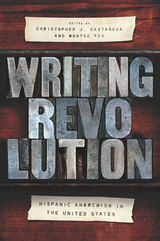 Writing Revolution: Hispanic Anarchism in the United States
Edited by Christopher J. Castañeda and Montse Feu
University of Illinois Press, 2019 In the late nineteenth through mid-twentieth centuries, the anarchist effort to promote free thought, individual liberty, and social equality relied upon an international Spanish-language print network. These channels for journalism and literature promoted anarchist ideas and practices while fostering transnational solidarity and activism from Buenos Aires to Los Angeles to Barcelona. Christopher J. Castañeda and Montse Feu edit a collection that examines many facets of Spanish-language anarchist history. Arranged chronologically and thematically, the essays investigate anarchist print culture's transatlantic origins; Latina/o labor-oriented anarchism in the United States; the anarchist print presence in locales like Mexico's borderlands and Steubenville, Ohio; the history of essential publications and the individuals behind them; and the circulation of anarchist writing from the Spanish-American War to the twenty-first century.Contributors: Jon Bekken, Christopher Castañeda, Jesse Cohn, Sergio Sánchez Collantes, María José Domínguez, Antonio Herrería Fernández, Montse Feu, Sonia Hernández, Jorell A. Meléndez-Badillo, Javier Navarro Navarro, Michel Otayek, Mario Martín Revellado, Susana Sueiro Seoane, Kirwin R. Shaffer, Alejandro de la Torre, and David Watson
 Writing Revolution in Latin America: From Martí to García Márquez to Bolaño
Juan E. De Castro
Vanderbilt University Press, 2019 PROSE Awards Literature Subject Category Winner, 2020
In the politically volatile period from the 1960s through the end of the twentieth century, Latin American authors were in direct dialogue with the violent realities of their time and place. Writing Revolution in Latin America is a chronological study of the way revolution and revolutionary thinking is depicted in the fiction composed from the eye of the storm.
From Mexico to Chile, the gradual ideological evolution from a revolutionary to a neoliberal mainstream was a consequence of, on the one hand, the political hardening of the Cuban Revolution beginning in the late 1960s, and, on the other, the repression, dictatorships, and economic crises of the 1970s and beyond. Not only was socialist revolution far from the utopia many believed, but the notion that guerrilla uprisings would lead to an easy socialism proved to be unfounded. Similarly, the repressive Pinochet dictatorship in Chile led to unfathomable tragedy and social mutation.
This double-edged phenomenon of revolutionary disillusionment became highly personal for Latin American authors inside and outside Castro's and Pinochet's dominion. Revolution was more than a foreign affair, it was the stuff of everyday life and, therefore, of fiction.
Juan De Castro's expansive study begins ahead of the century with José Martí in Cuba and continues through the likes of Mario Vargas Llosa in Peru, Gabriel García Márquez in Colombia, and Roberto Bolaño in Mexico (by way of Chile). The various, often contradictory ways the authors convey this precarious historical moment speaks in equal measure to the social circumstances into which these authors were thrust and to the fundamental differences in the ways they themselves witnessed history.
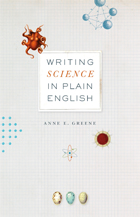 Writing Science in Plain English
Anne E. Greene
University of Chicago Press, 2013 Scientific writing is often dry, wordy, and difficult to understand. But, as Anne E. Greene shows in Writing Science in Plain English,writers from all scientific disciplines can learn to produce clear, concise prose by mastering just a few simple principles.
This short, focused guide presents a dozen such principles based on what readers need in order to understand complex information, including concrete subjects, strong verbs, consistent terms, and organized paragraphs. The author, a biologist and an experienced teacher of scientific writing, illustrates each principle with real-life examples of both good and bad writing and shows how to revise bad writing to make it clearer and more concise. She ends each chapter with practice exercises so that readers can come away with new writing skills after just one sitting.
Writing Science in Plain English can help writers at all levels of their academic and professional careers—undergraduate students working on research reports, established scientists writing articles and grant proposals, or agency employees working to follow the Plain Writing Act. This essential resource is the perfect companion for all who seek to write science effectively.
 Writing Science in Plain English, Second Edition
Anne E. Greene
University of Chicago Press, 2025 An updated edition of the essential guide for all scientists—from undergraduates to senior scholars—who want to produce prose that anyone can understand.
Scientific writing is often dry, wordy, and difficult to understand. But, as biologist and experienced teacher of scientific writing Anne E. Greene shows in Writing Science in Plain English, writers from all scientific disciplines can learn to produce clear, concise prose by mastering just a few simple principles. This short, focused guide presents roughly a dozen such principles based on what readers need to understand complex information, including concrete subjects, strong verbs, consistent terms, organized paragraphs, and correct sentence structure. Greene illustrates each principle with real-life examples of both good and bad writing and shows how bad writing might be improved. She ends each chapter with revision exercises (and provides suggested answers in a separate key) so that readers can come away with new writing skills after just one sitting. To help readers understand the grammatical terms used in the book, an appendix offers a refresher course on basic grammar.
For this second edition, Greene has incorporated the latest research on what makes writing effective and engaging and has revised or replaced exercises and exercise keys where needed. She has also added new features that make it easier to navigate the book. A new resource for instructors who use Writing Science in Plain English in their classes is a free, online teacher’s guide. Drawn from Greene’s long experience teaching students how to write science clearly, the teacher’s guide provides additional lectures, assignments, and activities that will inform and enliven any class.
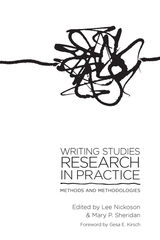 Writing Studies Research in Practice: Methods and Methodologies
Edited by Lee Nickoson and Mary P. Sheridan, Foreword by Gesa E. Kirsch
Southern Illinois University Press, 2012 An essential reference for students and scholars exploring the methods and methodologies of writing research. What does it mean to research writing today? What are the practical and theoretical issues researchers face when approaching writing as they do? What are the gains or limitations of applying particular methods, and what might researchers be overlooking? These questions and more are answered by the writing research field’s leading scholars in Writing Studies Research in Practice: Methods and Methodologies. Editors Nickoson and Sheridan gather twenty chapters from leaders in writing research, spanning topics from ethical considerations for researchers, quantitative methods, and activity analysis to interviewing and communitybased and Internet research. While each chapter addresses a different subject, the volume as a whole covers the range of methodologies, technologies, and approaches—both old and new—that writing researchers use, and examines the ways in which contemporary writing research is understood, practiced, and represented. An essential reference for experienced researchers and an invaluable tool to help novices understand research methods and methodologies, Writing Studies Research in Practice includes established methods and knowledge while addressing the contemporary issues, interests, and concerns faced by writing researchers today.
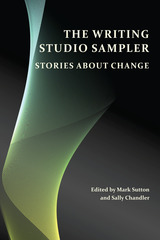 The Writing Studio Sampler: Stories about Change
Mark Sutton
University Press of Colorado, 2018 The Writing Studio Sampler presents interrelated, cross-referenced essays illustrating writing studio methodologies. Drawing on foundational work by Rhonda Grego and Nancy Thompson, writing studios engage mentored student workshop groups in collaborative reflection and inquiry into the writing done by student participants, their past experiences learning to write, and the pedagogical practices for teaching writing at their institution. These extended, recursive reflections lead not only to improved writing but also to the chance for institutional critique. Representing a wide range of institutional types and sites, the authors in this collection describe how specific studio programs were created, how they evolved in response to particular institutional contexts, and how they worked to meet the needs and purposes of students, faculty, and the institution. Each chapter includes detailed examples and extensive contextual background designed to support readers in adapting Studio to their own institutional context.
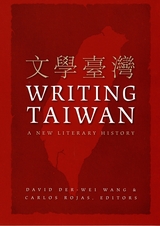 Writing Taiwan: A New Literary History
David Der-wei Wang and Carlos Rojas, eds.
Duke University Press, 2007 Writing Taiwan is the first volume in English to examine the entire span of modern Taiwan literature, from the first decades of the twentieth century to the present. In this collection, leading literary scholars based in Taiwan and the United States consider prominent Taiwanese authors and works in genres including poetry, travel writing, and realist, modernist, and postmodern fiction. The diversity of Taiwan literature is signaled by the range of authors treated, including Yang Chichang, who studied Japanese literature in Tokyo in the early 1930s and wrote all of his own poetry and fiction in Japanese; Li Yongping, an ethnic Chinese born in Malaysia and educated in Taiwan and the United States; and Liu Daren, who was born in mainland China and effectively exiled from Taiwan in the 1970s on account of his political activism. Because the island of Taiwan spent the first half of the century as a colony of Japan and the second half in an umbilical relationship to China, its literature challenges basic assumptions about what constitutes a “national literature.” Several contributors directly address the methodological and epistemological issues involved in writing about “Taiwan literature.” Other contributors investigate the cultural and political grounds from which specific genres and literary movements emerged. Still others explore themes of history and memory in Taiwan literature and tropes of space and geography, looking at representations of boundaries as well as the boundary-crossing global flows of commodities and capital. Like Taiwan’s history, modern Taiwan literature is rife with conflicting legacies and impulses. Writing Taiwan reveals a sense of its richness and diversity to English-language readers. Contributors. Yomi Braester, Sung-sheng Yvonne Chang, Fangming Chen, Lingchei Letty Chen, Chaoyang Liao, Ping-hui Liao, Joyce C. H. Liu, Kim-chu Ng, Carlos Rojas, Xiaobing Tang, Ban Wang, David Der-wei Wang, Gang Gary Xu, Michelle Yeh, Fenghuang Ying
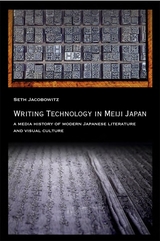 Writing Technology in Meiji Japan: A Media History of Modern Japanese Literature and Visual Culture
Seth Jacobowitz
Harvard University Press, 2015 Writing Technology in Meiji Japan boldly rethinks the origins of modern Japanese language, literature, and visual culture from the perspective of media history. Drawing upon methodological insights by Friedrich Kittler and extensive archival research, Seth Jacobowitz investigates a range of epistemic transformations in the Meiji era (1868–1912), from the rise of communication networks such as telegraph and post to debates over national language and script reform. He documents the changing discursive practices and conceptual constellations that reshaped the verbal, visual, and literary regimes from the Tokugawa era. These changes culminate in the discovery of a new vernacular literary style from the shorthand transcriptions of theatrical storytelling (rakugo) that was subsequently championed by major writers such as Masaoka Shiki and Natsume Sōseki as the basis for a new mode of transparently objective, “transcriptive” realism. The birth of modern Japanese literature is thus located not only in shorthand alone, but within the emergent, multimedia channels that were arriving from the West. This book represents the first systematic study of the ways in which media and inscriptive technologies available in Japan at its threshold of modernization in the late nineteenth to early twentieth century shaped and brought into being modern Japanese literature.
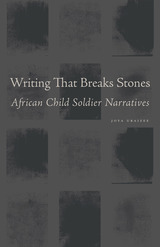 Writing That Breaks Stones: African Child Soldier Narratives
Joya Uraizee
Michigan State University Press, 2020 Writing That Breaks Stones: African Child Soldier Narratives is a critical examination of six memoirs and six novels written by and about young adults from Africa who were once child soldiers. It analyzes not only how such narratives document the human rights violations experienced by these former child soldiers but also how they connect and disconnect from their readers in the global public sphere. It draws on existing literary scholarship about novels and memoirs as well as on the fieldwork conducted by social scientists about African children in combat situations. Writing That Breaks Stones groups the twelve narratives into categories and analyzes each segment, comparing individually written memoirs with those written collaboratively, and novels whose narratives are fragmented with those that depict surreal landscapes of misery. It concludes that the memoirs focus on a lone individual’s struggles in a hostile environment, and use repetition, logical contradictions, narrative breaks, and reversals of binaries in order to tell their stories. By contrast, the novels use narrative ambiguity, circularity, fragmentation, and notions of dystopia in ways that call attention to the child soldiers’ communities and environments. All twelve narratives depict the child soldier’s agency and culpability somewhat ambiguously, effectively reflecting the ethical dilemmas of African children in combat.
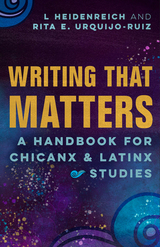 Writing that Matters: A Handbook for Chicanx and Latinx Studies
L Heidenreich and Rita E. Urquijo-Ruiz
University of Arizona Press, 2024 Have you ever wanted a writing and research manual that centered Chicanx and Latinx scholarship? Writing that Matters does just that.
While it includes a brief history of the roots of the fields of Chicanx literature and history, Writing that Matters emphasizes practice: how to research and write a Chicanx or Latinx history paper; how to research and write a Chicanx or Latinx literature or cultural studies essay; and how to conduct interviews, frame pláticas, and conduct oral histories. It also includes a brief chapter on nomenclature and a grammar guide. Each chapter includes questions for discussion, and all examples from across the subfields are from noted Chicanx and Latinx scholars. Women’s and queer scholarship and methods are not addressed in a separate chapter but are instead integral to the work.
For years Professors Heidenreich and Urquijo-Ruiz waited for a writing and research manual that was rooted in critical Chicanx and Latinx studies. Now, they have crafted one.
Writing the Australian Crawl
William Stafford
University of Michigan Press, 1978 Stafford's advice to beginning poets has become a favorite text in writing programs
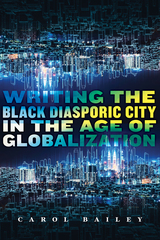 Writing the Black Diasporic City in the Age of Globalization
Carol Bailey
Rutgers University Press, 2023 Writing the Black Diasporic City in the Age of Globalization theorizes the city as a generative, “semicircular” social space, where the changes of globalization are most profoundly experienced. The fictive accounts analyzed here configure cities as spaces where movement is simultaneously restrictive and liberating, and where life prospects are at once promising and daunting. In their depictions of the urban experiences of peoples of African descent, writers and other creative artists offer a complex set of renditions of twentieth- and twenty-first-century Black urban citizens’ experience in European or Euro-dominated cities such as Boston, London, New York, and Toronto, as well as Global South cities such as Accra, Kingston, and Lagos—that emerged out of colonial domination, and which have emerged as hubs of current globalization. Writing the Black Diasporic City draws on critical tools of classical postcolonial studies as well as those of globalization studies to read works by Ama Ata Aidoo, Amma Darko, Marlon James, Cecil Foster, Zadie Smith, Michael Thomas, Chika Unigwe, and other contemporary writers. The book also engages the television series Call the Midwife, the Canada carnival celebration Caribana, and the film series Small Axe to show how cities are characterized as open, complicated spaces that are constantly shifting. Cities collapse boundaries, allowing for both haunting and healing, and they can sever the connection from kin and community, or create new connections.
 Writing the Caribbean in Magazine Time
Katerina Gonzalez Seligmann
Rutgers University Press, 2021 Writing the Caribbean in Magazine Time examines literary magazines generated during the 1940s that catapulted Caribbean literature into greater international circulation and contributed significantly to social, political, and aesthetic frameworks for decolonization, including Pan-Caribbean discourse. This book demonstrates the material, political, and aesthetic dimensions of Pan-Caribbean literary discourse in magazine texts by Suzanne and Aimé Césaire, Nicolás Guillén, José Lezama Lima, Alejo Carpentier, George Lamming, Derek Walcott and their contemporaries. Although local infrastructure for book production in the insular Caribbean was minimal throughout the twentieth century, books, largely produced abroad, have remained primary objects of inquiry for Caribbean intellectuals. The critical focus on books has obscured the canonical centrality of literary magazines to Caribbean literature, politics, and social theory. Up against the imperial Goliath of the global book industry, Caribbean literary magazines have waged a guerrilla pursuit for the terms of Caribbean representation.
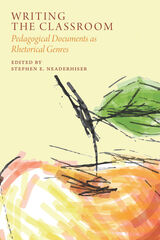 Writing the Classroom: Pedagogical Documents as Rhetorical Genres
edited by Stephen E. Neaderhiser
Utah State University Press, 2022 Writing the Classroom explores how faculty compose and use pedagogical documents to establish classroom expectations and teaching practices, as well as to articulate the professional identities they perform both inside and outside the classroom.
The contributors to this unique collection employ a wide range of methodological frameworks to demonstrate how pedagogical genres—even ones as seemingly straightforward as the class syllabus—have lives extending well beyond the classroom as they become part of how college teachers represent their own academic identities, advocate for pedagogical values, and negotiate the many external forces that influence the act of teaching. Writing the Classroom shines a light on genres that are often treated as two-dimensional, with purely functional purposes, arguing instead that genres like assignment prompts, course proposals, teaching statements, and policy documents play a fundamental role in constructing the classroom and the broader pedagogical enterprise within academia.
Writing the Classroom calls on experienced teachers and faculty administrators to critically consider their own engagement with pedagogical genres and offers graduate students and newer faculty insight into the genres that they may only now be learning to inhabit as they seek to establish their personal teacherly identities. It showcases the rhetorical complexity of the genres written in the service of pedagogy not only for students but also for the many other audiences within academia that have a role in shaping the experience of teaching.
Contributors: Michael Albright, Lora Arduser, Lesley Erin Bartlett, Logan Bearden, Lindsay Clark, Dana Comi, Zack K. De Piero, Matt Dowell, Amy Ferdinandt Stolley, Mark A. Hannah, Megan Knight, Laura R. Micciche, Cindy Mooty, Dustin Morris, Kate Navickas, Kate Nesbit, Jim Nugent, Lori A. Ostergaard, Cynthia Pengilly, Jessica Rivera-Mueller, Christina Saidy, Megan Schoen, Virginia Schwarz, Christopher Toth
 Writing the Future: Perspectives on Nationally Competitive Scholarships
Suzanne McCray
University of Arkansas Press, 2025 Writing the Future: Perspectives on Nationally Competitive Scholarships offers a timely and nuanced exploration of fellowships advising. This volume brings together experienced practitioners, scholars, and scholarship foundation representatives to reflect on a rapidly evolving landscape—one shaped by shifting student demographics, emergent technologies, and renewed commitments to student success across a broad spectrum. The essays in this collection engage deeply with the developmental, rhetorical, and institutional dimensions of nationally competitive awards advising. Topics include appreciative advising, writing strategies, and the complexities of guiding students as they envision and articulate aspirational futures. Contributors examine how fellowship applications serve as tools for student growth, knowledge transfer, and reflection. They also explore how advisors can navigate the tensions between authenticity, institutional representation, and the demands of prestige-based selection processes. Several chapters offer practical guidance on writing effective nomination letters, engaging in selection processes as external reviewers, and cultivating advising practices that are both ethical and empowering. A concluding chapter on NAFA’s history situates these contributions within a broader narrative of professionalization and purpose in the field. Ideal for new and seasoned advisors alike—as well as faculty, administrators, and foundation partners—this volume affirms the transformative potential of a fellowships advising process that centers on student agency, fosters critical reflection, and reimagines what access to competitive awards can and should mean.
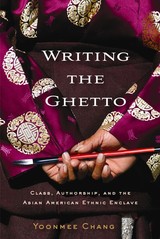 Writing the Ghetto: Class, Authorship, and the Asian American Ethnic Enclave
Chang, Yoonmee
Rutgers University Press, 2010 In the United States, perhaps no minority group is considered as "model" or successful as the Asian American community. Rather than living in ominous "ghettoes," Asian Americans are described as residing in positive-sounding "ethnic enclaves." Writing the Ghetto helps clarify the hidden or unspoken class inequalities faced by Asian Americans, while insightfully analyzing the effect such notions have had on their literary voices.
Yoonmee Chang examines the class structure of Chinatowns, Koreatowns, Little Tokyos, and Little Indias, arguing that ghettoization in these spaces is disguised. She maintains that Asian American literature both contributes to and challenges this masking through its marginalization by what she calls the "ethnographic imperative." Chang discusses texts from the late nineteenth century to the present, including those of Sui Sin Far, Winnifred Eaton, Monica Sone, Fae Myenne Ng, Chang-rae Lee, S. Mitra Kalita, and Nam Le. These texts are situated in the contexts of the Chinese Exclusion Era, Japanese American internment during World War II, the globalization of Chinatown in the late twentieth century, the Vietnam War, the 1992 Los Angeles riots, and the contemporary emergence of the "ethnoburb."
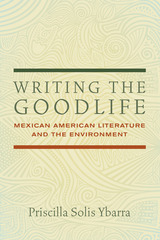 Writing the Goodlife: Mexican American Literature and the Environment
Priscilla Solis Ybarra
University of Arizona Press, 2016 Winner of the Western Literature Association’s 2017 Thomas J. Lyon Book Award in Western American Literary and Cultural Studies Mexican American literature brings a much-needed approach to the increasingly urgent challenges of climate change and environmental injustice. Although current environmental studies work to develop new concepts, Writing the Goodlife looks to long-established traditions of thought that have existed in Mexican American literary history for the past century and a half. During that time period, Mexican American writing consistently shifts the focus from the environmentally destructive settler values of individualism, domination, and excess toward the more beneficial refrains of community, non-possessiveness, and humility. The decolonial approaches found in these writings provide rich examples of mutually respectful relations between humans and nature, an approach that Priscilla Solis Ybarra calls “goodlife” writing.
Goodlife writing has existed for at least the past century, Ybarra contends, but Chicana/o literary history’s emphasis on justice and civil rights eclipsed this tradition and hidden it from the general public’s view. Likewise, in ecocriticism, the voices of people of color most often appear in deliberations about environmental justice. The quiet power of goodlife writing certainly challenges injustice, to be sure, but it also brings to light the decolonial environmentalism heretofore obscured in both Chicana/o literary history and environmental literary studies.
Ybarra’s book takes on two of today’s most discussed topics—the worsening environmental crisis and the rising Latino population in the United States—and puts them in literary-historical context from the U.S.-Mexico War up to today’s controversial policies regarding climate change, immigration, and ethnic studies. This book uncovers 150 years’ worth of Mexican American and Chicana/o knowledge and practices that inspire hope in the face of some of today’s biggest challenges.
Writing the Liberal Arts and Sciences: Truth, Dialogue, and Historical Consciousness
Mary Bouquet
Amsterdam University Press, 2021 Starting from informal cross-disciplinary conversations between colleagues, this volume is the result of an experiment in understanding the standpoints and methodologies of others in a multidisciplinary setting. At its heart are the core values of a liberal arts education: intellectual curiosity and the ability to communicate across borders. Written with the aim of communicating academic content to non-specialists, the essays interweave narratives about truth with various kinds of dialogue and the importance of historical consciousness. Together they illustrate the power of writing as a tool for strengthening a scholarly community.
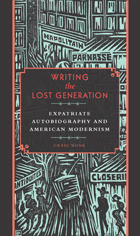 Writing the Lost Generation: Expatriate Autobiography and American Modernism
Craig Monk
University of Iowa Press, 2008 Members of the Lost Generation, American writers and artists who lived in Paris during the 1920s, continue to occupy an important place in our literary history. Rebelling against increased commercialism and the ebb of cosmopolitan society in early twentieth-century America, they rejected the culture of what Ernest Hemingway called a place of “broad lawns and narrow minds.”
Much of what we know about these iconic literary figures comes from their own published letters and essays, revealing how adroitly they developed their own reputations by controlling the reception of their work. Surprisingly the literary world has paid less attention to their autobiographies.
In Writing the Lost Generation, Craig Monk unlocks a series of neglected texts while reinvigorating our reading of more familiar ones. Well-known autobiographies by Malcolm Cowley, Ernest Hemingway, and Gertrude Stein are joined here by works from a variety of lesser-known—but still important—expatriate American writers, including Sylvia Beach, Alfred Kreymborg, Samuel Putnam, and Harold Stearns. By bringing together the self-reflective works of the Lost Generation and probing the ways the writers portrayed themselves, Monk provides an exciting and comprehensive overview of modernist expatriates from the United States.
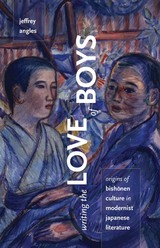 Writing the Love of Boys: Origins of Bishonen Culture in Modernist Japanese Literature
Jeffrey Angles
University of Minnesota Press, 2010 Despite its centuries-long tradition of literary and artistic depictions of love between men, around the fin de siècle Japanese culture began to portray same-sex desire as immoral. Writing the Love of Boys looks at the response to this mindset during the critical era of cultural ferment between the two world wars as a number of Japanese writers challenged the idea of love and desire between men as pathological.
Jeffrey Angles focuses on key writers, examining how they experimented with new language, genres, and ideas to find fresh ways to represent love and desire between men. He traces the personal and literary relationships between contemporaries such as the poet Murayama Kaita, the mystery writers Edogawa Ranpo and Hamao Shiro, the anthropologist Iwata Jun’ichi, and the avant-garde innovator Inagaki Taruho.
Writing the Love of Boys shows how these authors interjected the subject of male–male desire into discussions of modern art, aesthetics, and perversity. It also explores the impact of their efforts on contemporary Japanese culture, including the development of the tropes of male homoeroticism that recur so often in Japanese girls’ manga about bishonen love.
 Writing the Oral Tradition: Oral Poetics and Literate Culture in Medieval England
Mark C. Amodio
University of Notre Dame Press, 2005 "This is a splendid, rewarding book destined to reshape critical thinking about medieval poetry in English. Amodio combines groundbreaking theory with a deep, wide-ranging command of relevant scholarship to offer a uniquely inclusive perspective on an enormous and disparate collection of Old and Middle English poetry." —John Miles Foley, University of Missouri, Columbia
“This is a well-conceived, well-structured, and well-written book that fills a significant gap in current scholarly discourse. Amodio is extremely well-informed about current oral theory, and presents a beautifully integrated thesis. This clear-sighted and provocative book both promises and delivers much.” —Andy Orchard, University of Toronto
Mark Amodio's book focuses on the influence of the oral tradition on written vernacular verse produced in England from the fifth to the fifteenth century. His primary aim is to explore how a living tradition articulated only through the public, performance voices of pre-literate singers came to find expression through the pens of private, literate authors. Amodio argues that the expressive economy of oral poetics survives in written texts because, throughout the Middle Ages, literacy and orality were interdependent, not competing, cultural forces. After delving into the background of the medieval oral-literate matrix, Writing the Oral Tradition develops a model of non-performative oral poetics that is a central, perhaps defining, component of Old English vernacular verse. Following the Norman Conquest, oral poetics lost its central position and became one of many ways to articulate poetry. Contrary to many scholars, Amodio argues that oral poetics did not disappear but survived well into the post-Conquest period. It influenced the composition of Middle English verse texts produced from the twelfth to the fourteenth century because it offered poets an affectively powerful and economical way to articulate traditional meanings. Indeed, fragments of oral poetics are discoverable in contemporary prose, poetics, and film as they continue to faithfully emit their traditional meanings.
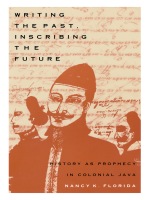 Writing the Past, Inscribing the Future: History as Prophecy in Colonial Java
Nancy K. Florida
Duke University Press, 1995 Located at the juncture of literature, history, and anthropology, Writing the Past, Inscribing the Future charts a strategy of how one might read a traditional text of non-Western historical literature in order to generate, with it, an opening for the future. This book does so by taking seriously a haunting work of historical prophecy inscribed in the nineteenth century by a royal Javanese exile—working through this writing of a colonized past to suggest the reconfiguration of the postcolonial future that this history itself apparently intends. After introducing the colonial and postcolonial orientalist projects that would fix the meaning of traditional writing in Java, Nancy K. Florida provides a nuanced translation of this particular traditional history, a history composed in poetry as the dream of a mysterious exile. She then undertakes a richly textured reading of the poem that discloses how it manages to escape the fixing of "tradition." Adopting a dialogic strategy of reading, Florida writes to extend—as the work’s Javanese author demands—this history’s prophetic potential into a more global register.
Babad Jaka Tingkir, the historical prophecy that Writing the Past, Inscribing the Future translates and reads, is uniquely suited for such a study. Composing an engaging history of the emergence of Islamic power in central Java around the turn of the sixteenth century, Babad Jaka Tingkir was written from the vantage of colonial exile to contest the more dominant dynastic historical traditions of nineteenth-century court literature. Florida reveals how this history’s episodic form and focus on characters at the margins of the social order work to disrupt the genealogical claims of conventional royal historiography—thus prophetically to open the possibility of an alternative future.
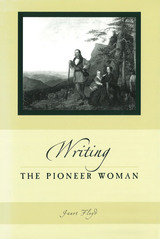 Writing the Pioneer Woman
Janet Floyd
University of Missouri Press, 2002
Focusing on a series of autobiographical texts, published and private, well known and obscure, Writing the Pioneer Woman examines the writing of domestic life on the nineteenth-century North American frontier. In an attempt to determine the meanings found in the pioneer woman's everyday writings—from records of recipes to descriptions of washing floors—Janet Floyd explores domestic details in the autobiographical writing of British and Anglo-American female emigrants.
Floyd argues that the figure of the pioneer housewife has been a significant one within general cultural debates about the home and the domestic life of women, on both sides of the Atlantic. She looks at the varied ideological work performed by this figure over the last 150 years and at what the pioneer woman signifies and has signified in national cultural debates concerning womanhood and home.
The autobiographies under discussion are not only of homemaking but also of emigration. Equally, these texts are about the enterprise of emigration, with several of them written to advise prospective emigrants. Using the insights of diaspora and migration theory, Floyd shows that these writings portray a far subtler role for the pioneer woman than is suggested by previous scholars, who often see her either as participating directly in the overall domestication of colonial space or as being strictly marginal to that process.
Written in response to the highly critical discussion of the attitudes and activities of female "civilizers" within "New" Western history and postcolonial studies, Writing the Pioneer Woman will be a valuable addition to the burgeoning discussion of the literature of domesticity.
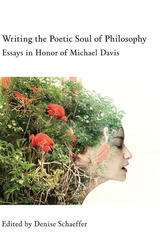 Writing the Poetic Soul of Philosophy: Essays in Honor of Michael Davis
Denise Schaeffer
St. Augustine's Press, 2017 What is it about the nature of “soul” that makes it so difficult to adequately capture its complexity in a strictly discursive account? Why do some of the most profound human experiences elude our attempts to theorize them? How can a written document do justice to the dynamic activity of thinking, as opposed to merely presenting a collection of thoughts-as-artifacts? Finally, what can we learn about the activity of philosophizing, and about the human soul, by reflecting on the possibilities and limitations of writing? These concerns, in various forms and in different registers, have preoccupied Michael Davis throughout his distinguished career. This volume is in honor of, and in dialogue with, Davis’s work, which spans ancient philosophy and literature, continental philosophy and political philosophy. It includes original essays by numerous distinguished scholars in the fields of philosophy and political science. The remarkable range and caliber of the contributions attest to the breadth and depth of Davis’s influence. The essays in Part I of the volume explore the nature of soul through the lens of tragedy. Part II consists of three essays that explore the human longing for perfect knowledge and completion—and the obstacles to the fulfilment of that longing—in relation to the divine. In Part III, the essays address the distinctive challenges of the political sphere and philosophy’s relation to it. And while the relationship between philosophy and poetry is an implicit theme throughout the volume, the essays in Part IV focus directly on philosophy’s aestheticizing tendencies. Many different philosophical and literary works are discussed throughout these chapters, including ancient works such as Plato’s Republic, Euthydemus and Laws, Homer’s Iliad, and Euripides’ Trojan Women, as well as works by modern philosophers such as Rousseau, Kant, Hegel, Kierkegaard and Nietzsche. In addition, three essays analyze some of Shakespeare’s plays in relation to the thought of Plato and Machiavelli. All of the essays are thematically linked by a common thread as they attend to the poetic dimension of philosophical thinking. Michael Davis is Professor of Philosophy at Sarah Lawrence College, where he has taught since 1977 and has been the Sarah Yates Exley Chair in Teaching Excellence (2003-2005). He has also taught on the graduate faculty at Fordham University and the New School for Social Research. He is the author of numerous articles and books, which include: Ancient Tragedy and the Origins of Modern Science; The Poetry of Philosophy: On Aristotle’s Poetics; The Politics of Philosophy: A Commentary on Aristotle’s Politics; The Autobiography of Philosophy; Rousseau’s The Reveries of the Solitary Walker; Wonderlust: Ruminations on Liberal Education; and The Soul of the Greeks: An Inquiry. He is also co-translator (with Seth Benardete) of Aristotle’s On Poetics. Contributors include: Abraham Anderson, Jonathan Badger, Robert Berman, Ronna Burger, Kenneth DeLuca, Gwenda-lin Grewal, Scott Hemmenway, Paul Kirkland, Mary Nichols, Denise Schaeffer, Paul Stern, Richard Velkley, Lisa Pace Vetter, Ann Ward, Lee Ward, Catherine Zuckert and Michael Zuckert. About the Editor: Denise Schaeffer is Professor of Political Science at the College of the Holy Cross. She is the author of Rousseau on Education, Freedom and Judgment and contributing co-editor (with Christopher Dustin) of Socratic Philosophy and Its Others. She is co-editor (with Gregory McBrayer and Mary P. Nichols) of the Focus Philosophical Library edition of Plato’s Euthydemus, for which she authored the Introduction and co-authored the Interpretive Essay.
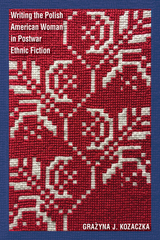 Writing the Polish American Woman in Postwar Ethnic Fiction
Grazyna J. Kozaczka
Ohio University Press, 2019 Winner of the 2019 Oskar Halecki Prize (Polish American Historical Association) Though often unnoticed by scholars of literature and history, Polish American women have for decades been fighting back against the patriarchy they encountered in America and the patriarchy that followed them from Poland. Through close readings of several Polish American and Polish Canadian novels and short stories published over the last seven decades, Writing the Polish American Woman in Postwar Ethnic Fiction traces the evolution of this struggle and women’s efforts to construct gendered and classed ethnicity. Focusing predominantly on work by North American born and immigrant authors that represents the Polish American Catholic tradition, Grażyna J. Kozaczka puts texts in conversation with other American ethnic literatures. She positions ethnic gender construction and performance at an intersection of social class, race, and sex. She explores the marginalization of ethnic female characters in terms of migration studies, theories of whiteness, and the history of feminist discourse. Writing the Polish American Woman in Postwar Ethnic Fiction tells the complex story of how Polish American women writers have shown a strong awareness of their oppression and sought empowerment through resistive and transgressive behaviors.
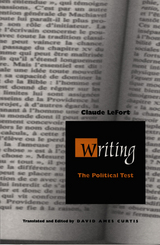 Writing: The Political Test
Claude Lefort
Duke University Press, 2000 Writing involves risks—the risk that one will be misunderstood, the risk of being persecuted, the risks of being made a champion for causes in which one does not believe, this risk of inadvertently supporting a reader’s prejudices, to name a few. In trying to give expression to what is true, the writer must “clear a passage within the agitated world of passions,” an undertaking that always to some extent fails: writers are never the master of their own speech.
In Writing: The Political Test, France’s leading political philosopher, Claude Lefort, illuminates the process by which writers negotiate difficult path to free themselves from the ideological and contextual traps that would doom their attempts to articulate a new vision. Lefort examines writers whose works provide special insights into this problem of risk, both literary artists and political philosophers. Among them are Salman Rushdie, Sade, Tocqueville,m Machiavelli, Leo Strauss, Orwell, Kant, Robespierre, Guizot, and Pierre Clastres. In Tocqueville, for example, Lefort finds that the author’s improvisatory and open-ended expression represents the character of the democratic experience. Orwell’s work on totalitarianism shows up the totalitarian subject’s complicity in this political regime. And Rushdie is remarkable for his solid attack on relativism. With the character and fate of the political forms of modernity, democracy, and totalitarianism a central theme, Lefort concludes with some reflections on the collapse of the Soviet Union.
This intriguing and accessible exploration of literature’s political aspects and political philosophy’s literary ones will be welcomed by those who have been stymied by current efforts to bridge these two fields. Taken together, the essays in this volume also stand as an intellectual autobiography of Lefort, making it an excellent introduction to his work for less experience students of political theory or philosophy.
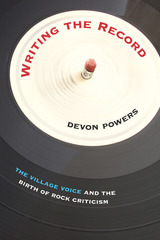 Writing the Record: The Village Voice and the Birth of Rock Criticism
Devon Powers
University of Massachusetts Press, 2013 During the mid-1960s, a small group of young journalists made it their mission to write about popular music, especially rock, as something worthy of serious intellectual scrutiny. Their efforts not only transformed the perspective on the era's music but revolutionized how Americans have come to think, talk, and write about popular music ever since.
In Writing the Record, Devon Powers explores this shift by focusing on The Village Voice, a key publication in the rise of rock criticism. Revisiting the work of early pop critics such as Richard Goldstein and Robert Christgau, Powers shows how they stood at the front lines of the mass culture debates, challenging old assumptions and hierarchies and offering pioneering political and social critiques of the music. Part of a college-educated generation of journalists, Voice critics explored connections between rock and contemporary intellectual trends such as postmodernism, identity politics, and critical theory. In so doing, they became important forerunners of the academic study of popular culture that would emerge during the 1970s.
Drawing on archival materials, interviews, and insights from media and cultural studies, Powers not only narrates a story that has been long overlooked but also argues that pop music criticism has been an important channel for the expression of public intellectualism. This is a history that is particularly relevant today, given the challenges faced by criticism of all stripes in our current media environment. Powers makes the case for the value of well-informed cultural criticism in an age when it is often suggested that "everyone is a critic."
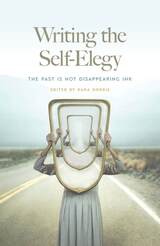 Writing the Self-Elegy: The Past Is Not Disappearing Ink
Edited by Kara Dorris
Southern Illinois University Press, 2023 An innovative roadmap to facing our past and present selves
Honest, aching, and intimate, self-elegies are unique poems focusing on loss rather than death, mourning versions of the self that are forgotten or that never existed. Within their lyrical frame, multiple selves can coexist—wise and naïve, angry and resigned—along with multiple timelines, each possible path stemming from one small choice that both creates new selves and negates potential selves. Giving voice to pain while complicating personal truths, self-elegies are an ideal poetic form for our time, compelling us to question our close-minded certainties, heal divides, and rethink our relation to others.
In Writing the Self-Elegy, poet Kara Dorris introduces us to this prismatic tradition and its potential to forge new worlds. The self-elegies she includes in this anthology mix autobiography and poetics, blending craft with race, gender, sexuality, ability and disability, and place—all of the private and public elements that build individual and social identity. These poems reflect our complicated present while connecting us to our past, acting as lenses for understanding, and defining the self while facilitating reinvention. The twenty-eight poets included in this volume each practice self-elegy differently, realizing the full range of the form. In addition to a short essay that encapsulates the core value of the genre and its structural power, each poet’s contribution concludes with writing prompts that will be an inspiration inside the classroom and out. This is an anthology readers will keep close and share, exemplifying a style of writing that is as playful as it is interrogative and that restores the self in its confrontation with grief.
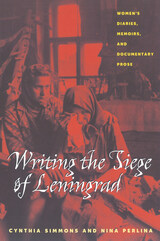 Writing the Siege of Leningrad: Womens Diaries Memoirs and Documentary Prose
Cynthia Simmons
University of Pittsburgh Press, 2005
Silver Winner, ForeWord Magazine Book of the Year, History
From September 1941 until January 1944, Leningrad suffered under one of the worst sieges in the history of warfare. At least one million civilians died, many during the terribly cold first winter. Bearing the brunt of this hardship—and keeping the city alive through their daily toil and sacrifice—were the women of Leningrad. Yet their perspective on life during the siege has been little examined.
Cynthia Simmons and Nina Perlina have searched archival holdings for letters and diaries written during the siege, conducted interviews with survivors, and collected poetry, fiction, and retrospective memoirs written by the blokadnitsy (women survivors) to present a truer picture of the city under siege. In simple, direct, even heartbreaking language, these documents tell of lost husbands, mothers, children; meager rations often supplemented with sawdust and other inedible additives; crime, cruelty, and even cannibalism. They also relate unexpected acts of kindness and generosity; attempts to maintain cultural life through musical and dramatic performances; and provide insight into a group of ordinary women reaching beyond differences in socioeconomic class, ethnicity, and profession in order to survive in extraordinary times.
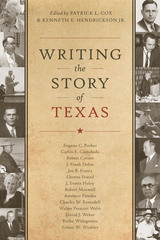 Writing the Story of Texas
Edited by Patrick L. Cox and Kenneth E. Hendrickson Jr.
University of Texas Press, 2013 The history of the Lone Star state is a narrative dominated by larger-than-life personalities and often-contentious legends, presenting interesting challenges for historians. Perhaps for this reason, Texas has produced a cadre of revered historians who have had a significant impact on the preservation (some would argue creation) of our state’s past. An anthology of biographical essays, Writing the Story of Texas pays tribute to the scholars who shaped our understanding of Texas’s past and, ultimately, the Texan identity. Edited by esteemed historians Patrick Cox and Kenneth Hendrickson, this collection includes insightful, cross-generational examinations of pivotal individuals who interpreted our history. On these pages, the contributors chart the progression from Eugene C. Barker’s groundbreaking research to his public confrontations with Texas political leaders and his fellow historians. They look at Walter Prescott Webb’s fundamental, innovative vision as a promoter of the past and Ruthe Winegarten’s efforts to shine the spotlight on minorities and women who made history across the state. Other essayists explore Llerena Friend delving into an ambitious study of Sam Houston, Charles Ramsdell courageously addressing delicate issues such as racism and launching his controversial examination of Reconstruction in Texas, Robert Cotner—an Ohio-born product of the Ivy League—bringing a fresh perspective to the field, and Robert Maxwell engaged in early work in environmental history.
 Writing the Thames
Christina Hardyment
Bodleian Library Publishing, 2016 From Arthur Conan Doyle to Charles Dickens, Colin Dexter to Kenneth Grahame, writers and artists have often taken inspiration from the Thames. Gathering poetry, artwork, and short excerpts from longer prose, Writing the Thames includes chapters on topics that dominate in literary and artistic depictions of the Thames, from historical events like Julius Caeser’s crossing in 55 BCE and Elizabeth I’s stand against the Spanish at Tilbury to the explorations of the topographers who mapped and drew the river to the many authors, including Thomas More, Francis Bacon, William Morris, and Henry James, who enjoyed riverside retreats. A chapter on boats features the frenetic rowers from Zuleika Dobson, a camping tale from Three Men in a Boat, and the story of William Hogarth’s impulsive five-day trip down the river with four inebriated friends. Some of the best-loved children’s literature has also been inspired by the Thames, including The Wind in the Willows.
Beautifully illustrated with seventy full-color illustrations, this book tells the river’s remarkable story through art, poetry, and prose, while celebrating the writers who helped form its enduring legacy.
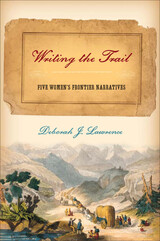 Writing the Trail: Five Women's Frontier Narratives
Deborah Lawrence
University of Iowa Press, 2006 For a long time, the American West was mainly identified with white masculinity, but as more women’s narratives of westward expansion came to light, scholars revised purely patriarchal interpretations. Writing the Trail continues in this vein by providing a comparative literary analysis of five frontier narratives---Susan Magoffin’s Down the Santa Fe Trail and into Mexico, Sarah Royce’s A Frontier Lady, Louise Clappe’s The Shirley Letters, Eliza Farnham’s California, In-doors and Out, and Lydia Spencer Lane’s I Married a Soldier---to explore the ways in which women’s responses to the western environment differed from men’s.Throughout their very different journeys---from an eighteen-year-old bride and self-styled “wandering princess” on the Santa Fe Trail, to the mining camps of northern California, to garrison life in the Southwest---these women moved out of their traditional positions as objects of masculine culture. Initially disoriented, they soon began the complex process of assimilating to a new environment, changing views of power and authority, and making homes in wilderness conditions.Because critics tend to consider nineteenth-century women’s writings as confirmations of home and stability, they overlook aspects of women’s textualizations of themselves that are dynamic and contingent on movement through space. As the narratives in Writing the Trail illustrate, women’s frontier writings depict geographical, spiritual, and psychological movement. By tracing the journeys of Magoffin, Royce, Clappe, Farnham, and Lane, readers are exposed to the subversive strength of travel writing and come to a new understanding of gender roles on the nineteenth-century frontier.
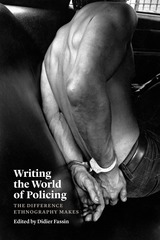 Writing the World of Policing: The Difference Ethnography Makes
Edited by Didier Fassin
University of Chicago Press, 2017 As policing has recently become a major topic of public debate, it was also a growing area of ethnographic research. Writing the World of Policing brings together an international roster of scholars who have conducted fieldwork studies of law enforcement in disadvantaged urban neighborhoods on five continents. How, they ask, can ethnography illuminate the role of the police in society? Are there important aspects of policing that are not captured through interviews and statistics? And how can the study of law enforcement shed light on the practice of ethnography? What might studying policing teach us about the epistemological and ethical challenges of participant observation? Beyond these questions of crucial interest for criminology and, more generally, the social sciences, Writing the World of Policing provides a timely discussion of one of the most problematic institutions in contemporary society.
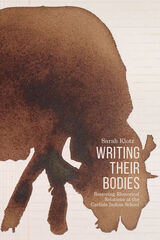 Writing Their Bodies: Restoring Rhetorical Relations at the Carlisle Indian School
Sarah Klotz
Utah State University Press, 2020 Between 1879 and 1918, the Carlisle Indian Industrial School housed over 10,000 students and served as a prototype for boarding schools on and off reservations across the continent. Writing Their Bodies analyzes pedagogical philosophies and curricular materials through the perspective of written and visual student texts created during the school’s first three-year term. Using archival and decolonizing methodologies, Sarah Klotz historicizes remedial literacy education and proposes new ways of reading Indigenous rhetorics to expand what we know about the Native American textual tradition.
This approach tracks the relationship between curriculum and resistance and enumerates an anti-assimilationist methodology for teachers and scholars of writing in contemporary classrooms. From the Carlisle archive emerges the concept of a rhetoric of relations, a set of Native American communicative practices that circulates in processes of intercultural interpretation and world-making. Klotz explores how embodied and material practices allowed Indigenous rhetors to maintain their cultural identities in the off-reservation boarding school system and critiques the settler fantasy of benevolence that propels assimilationist models of English education.
Writing Their Bodies moves beyond language and literacy education where educators standardize and limit their students’ means of communication and describes the extraordinary expressive repositories that Indigenous rhetors draw upon to survive, persist, and build futures in colonial institutions of education.
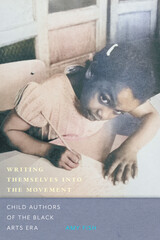 Writing Themselves into the Movement: Child Authors of the Black Arts Era
Amy Fish
University of Massachusetts Press, 2024 Between 1967 and 1972, a previously obscure group of authors entered the US cultural spotlight. During this five-year period, at least thirty anthologies of poetry and prose by African American, Latinx, Asian American, and Native American children came out of adult-led workshops, classrooms, and sites of juvenile incarceration. Mass-market publishers, independent imprinters, and local mimeograph machines produced volumes with titles such as I Am Somebody! and The Me Nobody Knows: Children’s Voices from the Ghetto. These young writers actively participated in the Black Arts Movement, and some collaborated with well-known adult authors, most prominently June Jordan. Their anthologies gained national media coverage, occasionally became bestsellers, were quoted by James Baldwin, and even inspired a hit Broadway musical. While writings by children had long attracted adult attention, this flurry of youth writing and publishing was distinguished by the widespread belief that children of color from poor and working-class neighborhoods were uniquely able to speak truth about American racism and inequality.
Focusing on Black and Latinx youth authorship within New York City, and using deep archival research and elegant close readings, Amy Fish examines child-authored texts of this era within the context of their literary production and reception. These young writers were often supervised and edited by white adults, raising concerns about the authenticity and agency of their voices. Fish contends that young authors themselves shared these concerns and that they employed savvy rhetorical strategies of address, temporality, and trope to self-consciously interrogate the perils and possibilities of their adult-influenced work. Young writers thus contributed to the era’s important debates about the nature of authorship and readership within a racist society, while also using their writing as an intimate occasion of self-discovery.
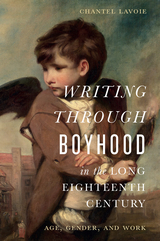 Writing through Boyhood in the Long Eighteenth Century: Age, Gender, and Work
Chantel Lavoie
University of Delaware Press, 2024 Writing through Boyhood in the Long Eighteenth Century explores how boyhood was constructed in different creative spaces that reflected the lived experience of young boys through the long eighteenth century—not simply in children’s literature but in novels, poetry, medical advice, criminal broadsides, and automaton exhibitions. The chapters encompass such rituals as breeching, learning to read and write, and going to school. They also consider the lives of boys such as chimney sweeps and convicted criminals, whose bodily labor was considered their only value and who often did not live beyond boyhood. Defined by a variety of tasks, expectations, and objectifications, boys—real, imagined, and sometimes both—were subject to the control of their elders and were used as tools in the cause of civil society, commerce, and empire. This book argues that boys in the long eighteenth century constituted a particular kind of currency, both valuable and expendable—valuable because of gender, expendable because of youth.
Writing Through Writer's Block: Lessons from Modern American Fiction
Aaron Colton
University of Iowa Press, 2025 Recent fiction is teeming with blocked writers: from John Updike’s Henry Bech to Stephen King’s Paul Sheldon and Mike Noonan. From David Foster Wallace’s Mark Nechtr to the autofictional figures of Jordan Castro, Salvador Plascencia, Nam Le, Ben Lerner, Sheila Heti, and Andrew Martin. Writing Through Writer’s Block offers the first book-length analysis of the archetype of the blocked writer. From the scenes of writer’s block enacted in these fictions, we gather pedagogical lessons that are germane to writers of all kinds—creative and academic, advanced and novice—and particularly useful for the growing contingency of faculty whose teaching responsibilities lie in both literature and academic writing.
 Writing Together: Building Social Writing Opportunities for Graduate Students
Rachael Cayley, Fiona Coll, and Daniel Aureliano Newman
University of Michigan Press, 2025 In recent years, graduate writing programs have increasingly paid attention to the benefits of writing initiatives that harness the power of peer presence, interaction, and collectivity. These social-by-design writing initiatives—which could be boot camps, writing groups, write-alongs, retreats, peer review sessions, or show-up-and-write gatherings—rely on two central contentions: that graduate writers need support with the practical challenges of writing productivity and that writing alongside others can be a transformative experience for graduate writers. Social writing opportunities offer uniquely dynamic environments in which graduate students can develop their writing processes.
Writing Together gathers accounts from graduate writing professionals about how social writing programs are imagined and delivered. It surveys the motivations, rationales, evaluation strategies, and structures that underpin these initiatives in order to create a practical resource for writing professionals who wish to establish or refine their own offerings. Rather than presenting “how to” approaches, the book presents “how we” accounts that enable readers to learn from the creative practices and experiences of others. By capturing a range of experiences, institutional models, and forms of social writing support, Writing Together explains the thinking behind social writing initiatives and the processes through which those initiatives have been assessed. It demonstrates that social writing practices are not just a means to an end, but an end in themselves—that writing together is a great way to write and a promising basis for graduate writing pedagogy and professional development.
Writing Under: Selections From the Internet Text
Alan Sondheim
West Virginia University Press, 2012 Alan Sondheim’s Writing Under explores and examines what happens to writing as it takes place on and through the networked computer. Sondheim began experimenting with artistic and philosophical writing using computers in the early 1970s. Since 1994, he has explored the possibilities of writing on the Internet, whether using blogs, web pages, e–mails, virtual worlds, or other tools. The sum total of Sondheim’s writing online is entitled “The Internet Text.” Writing Under selects from this work to provide insight into how writing takes place today and into the unique practices of a writer. The selections range from philosophical musings, to technical explorations of writing practice, to poetic meditations on the writer online. This work expands our understanding of writing today and charts a path for writing’s future.
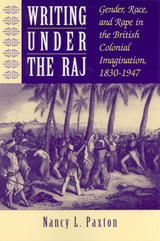 Writing Under the Raj: Gender, Race, and Rape in the British Colonial Imagination, 1830-1947
Nancy L. Paxton
Rutgers University Press, 1999 Writing Under the Raj is the first study to challenge the long-held critical assumption that the rape of colonizing women by colonized men was the first, or the only, rape script in British colonial literature. Nancy Paxton asks why rape disappears in British literature about English domestic life in the 1790s and charts its reappearance in British literature about India written between 1830 and 1947. Paxton displays the hybrid qualities of familiar novels like Kipling’s Kim and Forster’s A Passage to India by situating them in a richly detailed cultural context that reveals the dynamic relationship between metropolitan British literature and novels written by men and women who lived in the colonial contact zone of British India throughout this period.
Drawing on current feminist and gender theory as well as a wide range of historical and cultural sources, Paxton identifies four different “scripts” about interracial and intraracial rape that appear in novels about India during the period of British rule. Surveying more than thirty canonized and popular Anglo-Indian novels, Paxton shows how the treatment of rape reflects basic conflicts in the social and sexual contracts defining British and Indian women’s relationship to the nation state throughout the period. This study reveals how and why novels written after the Indian Uprising of 1857 popularized the theme of English women victimized by Indian men. Paxton demonstrates how all these novels reflect unresolved ideological and symbolic conflicts in British ideas about sex, violence, and power.
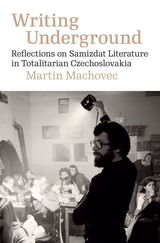 Writing Underground: Reflections on Samizdat Literature in Totalitarian Czechoslovakia
Martin Machovec
Karolinum Press, 2019 In this collection of writings produced between 2000 and 2018, the pioneering literary historian of the Czech underground, Martin Machovec, examines the multifarious nature of the underground phenomenon. After devoting considerable attention to the circle surrounding the band The Plastic People of the Universe and their manager, the poet Ivan M. Jirous, Machovec turns outward to examine the broader concept of the underground, comparing the Czech incarnation not only with the movements of its Central and Eastern European neighbors, but also with those in the world at large. In one essay, he reflects on the so-called Půlnoc Editions, which published illegal texts in the darkest days of the late forties and early fifties. In other essays, Machovec examines the relationship between illegal texts published at home (samizdat) and those smuggled out to be published abroad (tamizdat), as well as the range of literature that can be classified as samizdat, drawing attention to movements frequently overlooked by literary critics. In his final, previously unpublished essay, Machovec examines Jirous’s “Report on the Third Czech Musical Revival” not as a merely historical document, but as literature itself.
 Writing Vietnam, Writing Life: Caputo, Heinemann, O'Brien, Butler
Tobey C. Herzog
University of Iowa Press, 2008 Philip Caputo, Larry Heinemann, Tim O'Brien, and Robert Olen Butler: four young midwestern Americans coming of age during the 1960s who faced a difficult personal decision—whether or not to fight in Vietnam. Each chose to participate. After coming home, these four veterans became prizewinning authors telling the war stories and life stories of soldiers and civilians. The four extended conversations included in Writing Vietnam, Writing Life feature revealing personal stories alongside candid assessments of each author's distinct roles as son, soldier, writer, and teacher of creative writing. As Tobey Herzog's thoughtful interviews reveal, these soldier-authors have diverse upbringings, values, interests, writing careers, life experiences, and literary voices. They hold wide-ranging views on, among other things, fatherhood, war, the military, religion, the creative process, the current state of the world, and the nature of both physical and moral courage. For each author, the conversation and richly annotated chronology provide an overview of the writer's life, the intersection of memory and imagination in his writing, and the path of his literary career. Together, these four life stories also offer mini-tableaux of the fascinating and troubling time of 1960s and 1970s America. Above all, the conversations reveal that each author is linked forever to the Vietnam War, the country of Vietnam, and its people.
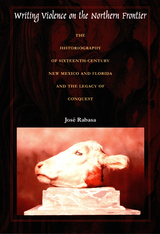 Writing Violence on the Northern Frontier: The Historiography of Sixteenth-Century New Mexico and Florida and the Legacy of Conquest
José Rabasa
Duke University Press, 2000 In Writing Violence on the Northern Frontier José Rabasa examines the conjunction between writing and violence that defined the sixteenth-century Spanish conquest of the Americas (particularly North America) and in doing so, he reveals why this conjunction remains relevent and influential today. Rabasa elaborates a critique of Spanish legislation that prescribed forms of converting Indians to Christianity and subjecting them to Spanish rule, which was referred to by some as “peaceful conquest.” He argues that the oxymoronic nature of this term demands an oppositional mode of inquiry based on an understanding of violence that expands beyond acts of war to include symbolism, interpretation, legislation, and other speech acts that he refers to as the “force of law.”
To advance his argument Rabasa analyzes visual and verbal representations, colonialist programs, and the theories of colonization that informed the historiography of sixteenth-century New Mexico and Florida, which includes the territory from the Pacific coast to Kansas, and from present-day Florida to Tennessee and Arkansas. Using little-known materials from the northern borderlands of Spanish imperial expansion, Rabasa works to complicate notions of violence and their relationship to writing. Understood in juxtaposition with modern texts on postcolonial theory, his description of the dual function of these colonial texts—to represent material acts of violence and to act as violence itself—also emphasizes the lingering effects of this phenomenon in contemporary intellectual work and everyday life. In this way Writing Violence on the Northern Frontier serves not only as an explanation of what colonialist texts do but also instigates new ways of thinking about colonial discourse.
This book will interest scholars of colonial studies and early North American history, as well as a broader audience interested in interdisciplinary perspectives on the topic of racial, ethnic, and literary violences.
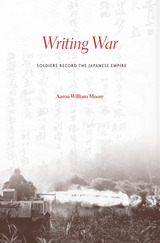 Writing War: Soldiers Record the Japanese Empire
Aaron William Moore
Harvard University Press, 2013 Historians have made widespread use of diaries to tell the story of the Second World War in Europe but have paid little attention to personal accounts from the Asia-Pacific Theater. Writing War seeks to remedy this imbalance by examining over two hundred diaries, and many more letters, postcards, and memoirs, written by Chinese, Japanese, and American servicemen from 1937 to 1945, the period of total war in Asia and the Pacific. As he describes conflicts that have often been overlooked in the history of World War II, Aaron William Moore reflects on diaries as tools in the construction of modern identity, which is important to our understanding of history.
Any discussion of war responsibility, Moore contends, requires us first to establish individuals as reasonably responsible for their actions. Diaries, in which men develop and assert their identities, prove immensely useful for this task. Tracing the evolution of diarists’ personal identities in conjunction with their battlefield experience, Moore explores how the language of the state, mass media, and military affected attitudes toward war, without determining them entirely. He looks at how propaganda worked to mobilize soldiers, and where it failed. And his comparison of the diaries of Japanese and American servicemen allows him to challenge the assumption that East Asian societies of this era were especially prone to totalitarianism. Moore follows the experience of soldiering into the postwar period as well, and considers how the continuing use of wartime language among veterans made their reintegration into society more difficult.
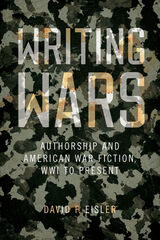 Writing Wars: Authorship and American War Fiction, WWI to Present
David F. Eisler
University of Iowa Press, 2022 Choice Outstanding Academic Title
2024 Senators Bob and Elizabeth Dole Biennial Award for Distinguished Book in Veterans Studies, winner
Who writes novels about war? For nearly a century after World War I, the answer was simple: soldiers who had been there. The assumption that a person must have experienced war in the flesh in order to write about it in fiction was taken for granted by writers, reviewers, critics, and even scholars.
Contemporary American fiction tells a different story. Less than half of the authors of contemporary war novels are veterans. And that’s hardly the only change. Today’s war novelists focus on the psychological and moral challenges of soldiers coming home rather than the physical danger of combat overseas. They also imagine the consequences of the wars from non-American perspectives in a way that defies the genre’s conventions. To understand why these changes have occurred, David Eisler argues that we must go back nearly fifty years, to the political decision to abolish the draft. The ramifications rippled into the field of cultural production, transforming the foundational characteristics— authorship, content, and form—of the American war fiction genre.
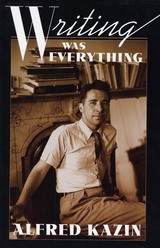 Writing Was Everything
Alfred Kazin
Harvard University Press, 1995 For more than sixty years Alfred Kazin has been one of the most eloquent witnesses to the literary life of the mind in America. Writing Was Everything is a summation of that life, a story of coming of age as a writer and critic that is also a vibrant cultural drama teeming with such characters as Hart Crane and Allen Ginsberg, Simone Weil and Flannery O'Connor, Hannah Arendt and Robert Lowell, Edmund Wilson and George Orwell.
A deft blend of autobiography, history, and criticism that moves from New York in the 1930s to wartime England to the postwar South, Writing Was Everything emerges as a reaffirmation of literature in an age of deconstruction and critical dogma. In his encounters with books, Kazin shows us how great writing matters and how it involves us morally, socially, and personally on the deepest level. Whether reflecting on modernism, southern fiction, or black, Jewish, and New Yorker writing or reliving the work of Richard Wright, Saul Bellow, and John Cheever, he gives a penetrating, moving account of literature observed and lived. In his life as a critic, Kazin personifies the lesson that living and writing are necessarily intimate.
Writing Was Everything encapsulates the lively wit and authority of this timeless critic's unmistakable voice. It stands as clear testimony to Kazin's belief that "literature is not theory but, at best, the value we can give to our experience, which in our century has been and remains beyond the imagination of mankind."
 Writing West Virginia: Place, People, and Poverty in Contemporary Literature from the Mountain State
Boyd Creasman
University of Tennessee Press, 2015 With their stirring depictions of a proud people striving for fulfillment in a land of natural beauty and economic hardship, West Virginia authors have produced a body of work that is worthy of study and of celebration. In Writing West Virginia, Boyd Creasman examines the fiction and poetry of eight accomplished writers—Davis Grubb, Mary Lee Settle, Breece D’J Pancake, Denise Giardina, Irene McKinney, Ann Pancake, Jayne Anne Phillips, and Pinckney Benedict—who exemplify the rich but often overlooked literary heritage of the Mountain State.
Creasman identifies the varied ways in which these writers have grappled with the dynamics of place, socioeconomic class, and gender. For Settle, this expression has taken the form of historical novels chronicling the development of the state from its British settlement to the rise of the coal industry and the creation of a wealthy, industrial class. For other authors, the struggle against poverty and lack of opportunity has been a central concern. From the male protagonists of Grubb and Breece Pancake, searching for ways to assert their masculinity when they cannot find gainful employment, to the strong, independent women of McKinney, Giardina, and Ann Pancake, the characters in West Virginia literature have fought to transcend the challenges and limitations of living in the most Appalachian of states. In the recent fiction of Phillips and Benedict, elements of magical realism and fantasy are employed to create the possibility of transcendence for their characters, shifting the focus from landscape to dreamscape and thereby suggesting exciting new directions for Appalachian literature.
Despite the remarkable talent of these writers, only a handful of book-length critical studies have focused on them, and none have considered them as a group. Writing West Virginia helps fill this gap in literary scholarship while opening up new paths for further exploration.
Boyd Creasman is a professor of English and vice president for academic affairs at West Virginia Wesleyan College, where he won a number of teaching awards and taught Appalachian literature for fifteen years. He has published scholarly articles in journals such as Studies in Humanities, Studies in Short Fiction, and Appalachian Journal.
Writing Western History: Essays on Major Western Historians
Richard W. Etulain
University of Nevada Press, 2002 Historians of the American West are indebted to the pioneering scholars of the late nineteenth and early twentieth centuries such as Frederick Jackson Turner, Walter Prescott Webb, and Herbert Eugene Bolton. Etulain gathers essays by contemporary historians on ten of these early writers to survey of the evolution of a scholarly field.
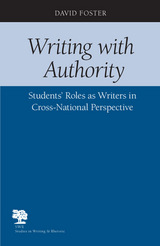 Writing with Authority: Students' Roles as Writers In Cross-National Perspective
David Foster
Southern Illinois University Press, 2006 Writing with Authority: Students’ Roles as Writers in Cross-National Perspective offers a comparison of student writers in two university cultures—one German and one American—as the students learn to connect their writing to academic content. David Foster demonstrates the effectiveness of using cross-cultural comparisons to assess differences in literacy activities and suggests teaching approaches that will help American students better develop their roles as writers in knowledge-based communities. He proposes that American universities make stronger efforts to nurture the autonomy of American undergraduates as learner-writers and to create apprenticeship experiences that more closely reflect the realities of working in the academic community. This comparative analysis identifies crucial differences in the ways German and American students learn to become academic writers, emphasizing two significant issues: the importance of self-directed, long-term planning and goal setting in developing knowledge-based projects and the impact of time structures on students’ writing practices. Foster suggests that students learn to write as knowledge makers, using cumulative, recursive task development as reflexive writing practices. He argues for the full integration of extended, self-managed, knowledge-based writing tasks into the American undergraduate curriculum from the onset of college study. A cross-national perspective offers important insights into the conditions that influence novice writers, Foster says, including secondary preparations and transitions to postsecondary study. Foster proposes that students be challenged to write transformatively—to master new forms of authorship and authority based on self-directed planning, researching, and writing in specific academic communities. The text also addresses contested issues of power relations in students’ roles as academic writers and their perception of personal authority and freedom as writers. A course model incorporates significant, self-directed writing projects to help students build sustainable roles as transformative writers, outlines “change goals” to help teachers develop curricular structures that support cumulative writing projects across the undergraduate curriculum, and shows how teachers can develop self-directed writing projects in a variety of program environments.
Writing With Elbow
edited by Pat Belanoff, Marcia Dickson, Sheryl I. Fontaine, & Charles Moran
Utah State University Press, 2002 Writing with Elbow is a volume written by leading scholars now working in the field of composition who trace their own scholarship to foundational work done by Peter Elbow over the last thirty years. The book is in that sense a celebration. But it is more than that, too. Elbow and process writing are not without their critics, and the essays collected in Writing with Elbow also test him, extend his work, explore his intellectual forebears, address his critics and contexts, and complicate his legacy across a wide range of issues in current composition research and practice. A thoughtful, comprehensive retrospective on Peter Elbow's legacy,
Writing with Elbow is a must-read collection for composition scholars, teachers, English educationists, and graduate students.
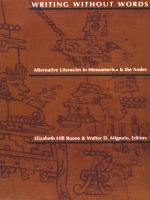 Writing Without Words: Alternative Literacies in Mesoamerica and the Andes
Elizabeth Hill Boone and Walter D. Mignolo, eds.
Duke University Press, 1994 The history of writing, or so the standard story goes, is an ascending process, evolving toward the alphabet and finally culminating in the "full writing" of recorded speech. Writing without Words challenges this orthodoxy, and with it widespread notions of literacy and dominant views of art and literature, history and geography. Asking how knowledge was encoded and preserved in Pre-Columbian and early colonial Mesoamerican cultures, the authors focus on systems of writing that did not strive to represent speech. Their work reveals the complicity of ideology in the history of literacy, and offers new insight into the history of writing. The contributors--who include art historians, anthropologists, and literary theorists--examine the ways in which ancient Mesoamerican and Andean peoples conveyed meaning through hieroglyphic, pictorial, and coded systems, systems inseparable from the ideologies they were developed to serve. We see, then, how these systems changed with the European invasion, and how uniquely colonial writing systems came to embody the post-conquest American ideologies. The authors also explore the role of these early systems in religious discourse and their relation to later colonial writing. Bringing the insights from Mesoamerica and the Andes to bear on a fundamental exchange among art history, literary theory, semiotics, and anthropology, the volume reveals the power contained in the medium of writing. Contributors. Elizabeth Hill Boone, Tom Cummins, Stephen Houston, Mark B. King, Dana Leibsohn, Walter D. Mignolo, John Monaghan, John M. D. Pohl, Joanne Rappaport, Peter van der Loo
 Writing Women in Central America: Gender and the Fictionalization of History
Laura Barbas-Rhoden
Ohio University Press, 2003 What is the relationship between history and fiction in a place with a contentious past? And of what concern is gender in the telling of stories about that past?
Writing Women in Central America explores these questions as it considers key Central American texts. This study analyzes how authors appropriate history to confront the rhetoric of the state, global economic powers, and even dissident groups within their own cultures. Laura Barbas-Rhoden winds a common thread in the literary imaginations of Claribel Alegría, Rosario Aguilar, Gioconda Belli, and Tatiana Lobo and shows how these writers offer provocative supplements to the historical record.
Writing Women in Central America considers more than a dozen narratives in which the authors craft their own interpretations of history to make room for women, indigenous peoples, and Afro-Latin Americans. Some of the texts reveal silences in the narratives of empire- and nation-building. Others reinterpret events to highlight the struggle of marginalized peoples for dignity and humanity in the face of oppression. All confront the ways in which stories have been told about the past.
Yet ultimately, Professor Barbas-Rhoden asserts, all concern the present and the future. As seen in Writing Women in Central America, though their fictions are historical, the writers direct their readers beyond the present toward a more just future for all who live in Central America.
Writing Women in Jacobean England
Barbara Kiefer Lewalski
Harvard University Press, 1993 When was feminism born—in the 1960s, or in the 1660s? For England, one might answer: the early decades of the seventeenth century. James I was King of England, and women were expected to be chaste, obedient, subordinate, and silent. Some, however, were not, and these are the women who interest Barbara Lewalski—those who, as queens and petitioners, patrons and historians, and poets took up the pen to challenge and subvert the repressive patriarchal ideology of Jacobean England.
Setting out to show how these women wrote themselves into their culture, Lewalski rewrites Renaissance history to include some of its most compelling—and neglected—voices. In these women, Lewalski identifies an early challenge to the dominant culture—and an ongoing challenge to our understanding of the Renaissance world.
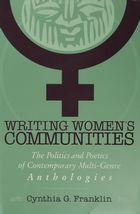 Writing Women's Communities: The Politics and Poetics of Contemporary Multi-Genre Anthologies
Cynthia G. Franklin
University of Wisconsin Press, 1997 Beginning in the 1980s, a number of popular and influential anthologies organized around themes of shared identity—Nice Jewish Girls, This Bridge Called My Back, Home Girls, and others—have brought together women’s fiction and poetry with journal entries, personal narratives, and transcribed conversations. These groundbreaking multi-genre anthologies, Cynthia G. Franklin demonstrates, have played a crucial role in shaping current literary studies, in defining cultural and political movements, and in building connections between academic and other communities.
Exploring intersections and alliances across the often competing categories of race, class, gender, and sexuality, Writing Women’s Communities contributes to current public debates about multiculturalism, feminism, identity politics, the academy as a site of political activism, and the relationship between literature and politics.
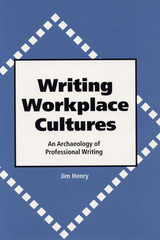 Writing Workplace Cultures: An Archaeology of Professional Writing
Jim Henry
Southern Illinois University Press, 2000
In Writing Workplace Cultures: An Archaeology of Professional Writing, Jim Henry analyzes eighty-three workplace writing ethnographies composed over seven years in a variety of organizations. He views the findings as so many shards in an archaeology on professional writing at the beginning of the twenty-first century.
These ethnographies were composed by either practicing or aspiring writers participating in a Master’s program in professional writing and editing. Henry solicited the writers' participation in "informed intersubjective research" focused on issues and questions of their own determination. Most writers studied their own workplace, composing "auto-ethnographies" that problematize these workplaces' local cultures even as they depict writing practices within them.
Henry establishes links between current professional writing practices and composition instruction as both were shaped by national economic development and local postsecondary reorganization throughout the twentieth century. He insists that if we accept basic principles of social constructionism, the text demonstrates ways in which writers "write" workplace cultures to produce goods and services whose effects go far beyond the immediate needs of its clients.
 Writing Wrongs
W.D. King
Temple University Press, 1997 Wallace Shawn usually appears in our mind's eye as the consummate eccentric actor: the shy literature teacher in Clueless; the diabolically rational villain in The Princess Bride; or as the eponymous protagonist of Vanya on 42nd Street. Few of us realize, however, that Shawn is also one of today's most provocative and political playwrights.
Writing Wrongs: The Work of Wallace Shawn is a close and personal look into the life and literary work of the man whom Joseph Papp called "a dangerous writer." As the son of the late William Shawn, renowned editor of The New Yorker, Wallace Shawn was born into privilege and trained to thoroughly liberal values, but his plays relentlessly question the liberal faith in individualism and common decency. In an uncompromising way that is all his own, Shawn registers the shock of the new.
In works such as Aunt Dan and Lemon, My Dinner with Andre, and The Designated Mourner, he wrenches out of place all of the usual, comfortable mechanisms by which we operate as audiences. Perhaps our discomfort and struggle to understand a play might provoke some change in the way we see ourselves and behave in relation to others -- but Shawn offers little in the way of solace.
W.D. King's incisive critiques of the plays and inquiry into the life and times of their author develop a portrait of Shawn as a major figure in contemporary theater.
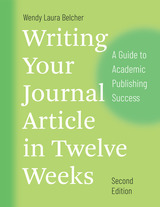 Writing Your Journal Article in Twelve Weeks, Second Edition: A Guide to Academic Publishing Success
Wendy Laura Belcher
University of Chicago Press, 2019 “Wow. No one ever told me this!” Wendy Laura Belcher has heard this countless times throughout her years of teaching and advising academics on how to write journal articles. Scholars know they must publish, but few have been told how to do so. So Belcher made it her mission to demystify the writing process. The result was Writing Your Journal Article in Twelve Weeks, which takes this overwhelming task and breaks it into small, manageable steps. For the past decade, this guide has been the go-to source for those creating articles for peer-reviewed journals. It has enabled thousands to overcome their anxieties and produce the publications that are essential to succeeding in their fields.
With this new edition, Belcher expands her advice to reach beginning scholars in even more disciplines. She builds on feedback from professors and graduate students who have successfully used the workbook to complete their articles. A new chapter addresses scholars who are writing from scratch. This edition also includes more targeted exercises and checklists, as well as the latest research on productivity and scholarly writing.
Writing Your Journal Article in Twelve Weeks is the only reference to combine expert guidance with a step-by-step workbook. Each week, readers learn a feature of strong articles and work on revising theirs accordingly. Every day is mapped out, taking the guesswork and worry out of writing. There are tasks, templates, and reminders. At the end of twelve weeks, graduate students, recent PhDs, postdoctoral fellows, adjunct instructors, junior faculty, and international faculty will feel confident they know that the rules of academic publishing and have the tools they need to succeed.
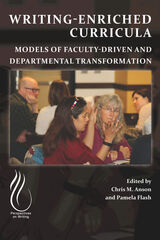 Writing-Enriched Curricula: Models of Faculty-Driven and Departmental Transformation
edited by Chris M. Anson, and Pamela Flash
University Press of Colorado, 2022 This edited collection explores theoretical and practical applications of the Writing-Enriched Curriculum (WEC) approach, an innovative and sustainable alternative to writing across the curriculum and writing in the disciplines. The collection’s purpose is to inform writing program administrators, teachers, scholars, and university officials about the model’s potential to transform the way writing is used and supported across courses and curricula in higher education. To this end, contributors offer theoretically grounded accounts of WEC or WEC-like programs and localized research that demonstrate the model’s impact and effectiveness within and across institutional contexts. The book has three sections: “The WEC Approach,” which describes the theoretical and practical basis informing WEC programs; “Accounts of Departmentally-Focused Implementation,” which considers specific campus initiatives to build WEC programs; and “Extensions and Contextual Variation,” which showcases ways in which the approach has led to cross-unit collaborations and varieties of implementation. Contributors bring scholarly and administrative experience to their investigations of WEC, and each has a track record of research and publication. Writing-Enriched Curricula: Models of Faculty-Driven and Departmental Transformation is the first collection dedicated to this innovative and tested approach.
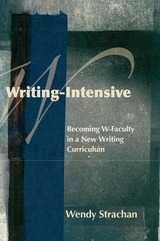 Writing-Intensive: Becoming W-Faculty in a New Writing Curriculum
Wendy Strachan
Utah State University Press, 2008 In one of the few book-length studies of a major post-secondary writing-across-the-curriculum initiative from concept to implementation, Writing-Intensive traces the process of preparation for new writing requirements across the undergraduate curriculum at Simon Fraser University, a mid-sized Canadian research university. As faculty members across campus were selected to pilot writing-intensive courses, and as administrators and committees adjusted the process toward full implementation, planners grounded their pedagogy in genre theory—a new approach for many non-composition faculty. So doing, the initiative aimed to establish a coherent yet rhetorically flexible framework through which students might improve their writing in all disciplines.
Wendy Strachan documents this campus cultural transformation, exploring successes and impasses with equal interest. The study identifies factors to be considered to avoid isolating the teaching of writing in writing-intensive courses; to engender a university-wide culture that naturalizes writing as a vital part of learning across all disciplines; and to keep the teaching of writing organic and reflected upon in a scholarly manner across campus.
A valuable case history for scholars in writing studies, WAC/WID, and curricular change studies.
Writings
Saint John of Damascus
Catholic University of America Press, 1958 St. John of Damascus (ca. 675-749) is generally regarded as the last great figure of Greek Patrology
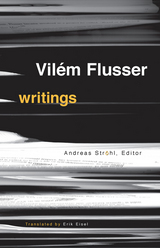 Writings
Vilem Flusser
University of Minnesota Press, 2004 Ten years after his death, Vilém Flusser’s reputation as one of Europe’s most original modern philosophers continues to grow. Increasingly influential in Europe and Latin America, the Prague-born intellectual’s thought has until now remained largely unknown in the English-speaking world. His innovative writings theorize—and ultimately embrace—the epochal shift that humanity is undergoing from what he termed "linear thinking" (based on writing) toward a new form of multidimensional, visual thinking embodied by digital culture. For Flusser, these new modes and technologies of communication make possible a society (the "telematic" society) in which dialogue between people becomes the supreme value.The first English-language anthology of Flusser’s work, this volume displays the extraordinary range and subtlety of his intellect. A number of the essays collected here introduce and elaborate his theory of communication, influenced by thinkers as diverse as Martin Buber, Edmund Husserl, and Thomas Kuhn. While taking dystopian, posthuman visions of communication technologies into account, Flusser celebrates their liberatory and humanizing aspects. For Flusser, existence was akin to being thrown into an abyss of absurd experience or "bottomlessness"; becoming human required creating meaning out of this painful event by consciously connecting with others, in part through such technologies. Other essays present Flusser’s thoughts on the future of writing, the revolutionary nature of photography, the relationship between exile and creativity, and his unconventional concept of posthistory. Taken together, these essays confirm Flusser’s importance and prescience within contemporary philosophy.Vilém Flusser (1920–1991) was born in Prague and taught philosophy in Brazil. Andreas Ströhl is director of the film department at the Goethe-Institut Inter Nationes in Munich. Erik Eisel works for a software technology company in Southern California.
 Writings
Vilem Flusser
University of Minnesota Press, 2002 Ten years after his death, Vilém Flusser’s reputation as one of Europe’s most original modern philosophers continues to grow. Increasingly influential in Europe and Latin America, the Prague-born intellectual’s thought has until now remained largely unknown in the English-speaking world. His innovative writings theorize—and ultimately embrace—the epochal shift that humanity is undergoing from what he termed "linear thinking" (based on writing) toward a new form of multidimensional, visual thinking embodied by digital culture. For Flusser, these new modes and technologies of communication make possible a society (the "telematic" society) in which dialogue between people becomes the supreme value. The first English-language anthology of Flusser’s work, this volume displays the extraordinary range and subtlety of his intellect. A number of the essays collected here introduce and elaborate his theory of communication, influenced by thinkers as diverse as Martin Buber, Edmund Husserl, and Thomas Kuhn. While taking dystopian, posthuman visions of communication technologies into account, Flusser celebrates their liberatory and humanizing aspects. For Flusser, existence was akin to being thrown into an abyss of absurd experience or "bottomlessness;" becoming human required creating meaning out of this painful event by consciously connecting with others, in part through such technologies. Other essays present Flusser’s thoughts on the future of writing, the revolutionary nature of photography, the relationship between exile and creativity, and his unconventional concept of posthistory. Taken together, these essays confirm Flusser’s importance and prescience within contemporary philosophy.
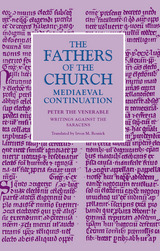 Writings Against the Saracens
Peter the Venerable
Catholic University of America Press, 2016 Peter the Venerable's extensive literary legacy includes poems, a large epistolary collection, and polemical treatises. The first of his four major polemics targeted a Christian heresy, the Petrobrussians (Against the Petrobrusians); the rest took aim at Jews and Saracens. Catholic University of America Press has published his Against the Inveterate Obduracy of the Jews. This present volume will make available in their entirety Peter the Venerable's twin polemics against Islam - A Summary of the entire heresy of the Saracens and Against the sect of the Saracens - as well as related correspondence. These works resulted from a sustained engagement with Islam begun during Peter's journey to Spain in 1142-43. There the abbot commissioned a translation of sources from the Arabic, the so-called Toledan Collection, that include the Letter of a Saracen with a Christian Response (from the Apology of [Ps.] Al-Kindi ); Fables of the Saracens (a potpourri of Islamic hadith traditions); and Robert of Ketton's first Latin translation of the whole of the Qur'an. Thanks to Peter's efforts, from the second half of the twelfth century Christians could acquire a far better understanding of the teachings of Islam, and Peter may rightly be viewed as the initiator of Islamic studies in the West.
The Writings and Later Wisdom Books
Christl M. Maier
SBL Press, 2014 An international collection of ecumenical, gender-sensitive interpretations
The latest volume in the Bible and Women series seeks to provide an ecumenical, gender-sensitive interpretation and reception history of the Writings and later wisdom traditions including Ben Sira and the Wisdom of Solomon. Articles trace the living conditions of women, examine the presentation of female figures in the Israelite wisdom tradition, discuss women and gender relations in single books, and explore narratives about great female protagonists, such as Ruth, Esther, and Susanna, who prove their wit and strength in situations of conflict.
Features:
- Essays by scholars from five European countries, Israel, and the United States
- An introduction and fourteen essays focused on women and gender relations
- Coverage of power relations and ideologies within the texts and in current interpretations.
 Writings by Western Icelandic Women
Kirsten Wolf
University of Manitoba Press, 1997 There are two Icelands. One is the island in the North Sea, occupied since before the arrival of the Vikings. The other is "Western Iceland," the communities throughout North America, settled by Icelandic immigrants in the 19th and 20th centuries, and still maintaining strong ties to their mother country. While the prominent role of women in the development of Western Iceland has long been acknowledged, there is little recognition of their contribution to its literary life.This collection of short stories and poems spans 75 years of writings. It includes translated work by little-known authors such as Undina - "a modest poet," as well as works in English by prominent writers such as Laura Goodman Salverson, twice a winner of the Governor-General's Award. From the hopefulness of the early immigration in the 1870s to the conflict of assimilation in the 1950s, the pieces reflect a range of experiences common to immigrant women from many cultures.Writings by Western Icelandic Women includes many works translated for the first time from their original Icelandic, and rescues from obscurity the voices and experiences of women as they struggled in a new country. It offers insight into the many obstacles, both personal and professional, that faced these pioneering writers. An introduction by Kirsten Wolf provides a literary and historical context, and is complemented by photographs and brief author biographies.
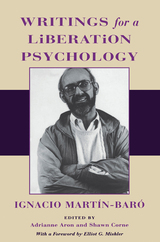 Writings for a Liberation Psychology
Ignacio Martín-Baró
Harvard University Press, 1996 “In your country,” Ignacio Martín-Baró remarked to a North American colleague, “it’s publish or perish. In ours, it’s publish and perish.” In November 1989 a Salvadoran death squad extinguished his eloquent voice, raised so often and so passionately against oppression in his adopted country. A Spanish-born Jesuit priest trained in psychology at the University of Chicago, Martín-Baró devoted much of his career to making psychology speak to the community as well as to the individual. This collection of his writings, the first in English translation, clarifies Martín-Baró’s importance in Latin American psychology and reveals a major force in the field of social theory.
Gathering essays from an array of professional journals, this volume introduces readers to the questions and concerns that shaped Martín-Baró’s thinking over several decades: the psychological dimensions of political repression, the impact of violence and trauma on child development and mental health, the use of psychology for political ends, religion as a tool of ideology, and defining the “real” and the “normal” under conditions of state-sponsored violence and oppression, among others. Though grounded in the harsh realities of civil conflict in Central America, these essays have broad relevance in a world where political and social turmoil determines the conditions of daily life for so many. In them we encounter Martín-Baró’s humane, impassioned voice, reaffirming the essential connections among mental health, human rights, and the struggle against injustice. His analysis of contemporary social problems, and of the failure of the social sciences to address those problems, permits us to understand not only the substance of his contribution to social thought but also his lifelong commitment to the campesinos of El Salvador.
 Writings of a Well-Learned Gentlewoman
Margaret More Roper
Iter Press, 2024 The collected writings of Margaret More Roper, presented and annotated for classroom use.
Margaret More Roper (1505–44) was, at the age of nineteen, the first early modern woman writer in Tudor England and the first nonroyal woman to have a book printed in the English language. As the eldest daughter of Sir Thomas More, Roper received a cutting-edge education in Latin and Greek that was virtually unprecedented for a woman. Besides gaining an international reputation for her outstanding erudition, Roper served as More’s confidante during his imprisonment. Her correspondence from this period offers valuable insight into a key moment in English history.
This Other Voice series edition recognizes Margaret More Roper as a notable historical figure in her own right and as one of the most learned women of her time. It publishes all her extant writings in modernized spelling, with annotations, a glossary, and a current bibliography of studies about her.
 The Writings Of Agnes Of Harcourt: The Life of Isabelle of France and the Letter on Louis IX and Longchamp
Sean L. Field
University of Notre Dame Press, 2003 Agnes of Harcourt is an important though little known thirteenth-century author. Born into a leading Norman noble family, she became an abbess at the new royal Franciscan abbey of Longchamp, founded just outside of Paris by Isabelle of France, sister of Louis IX. In the 1280s Agnes wrote a substantial biography of Isabelle of France, as well as a brief letter detailing Louis IX's involvement with the abbey. These texts were based on Agnes's first-hand observations and contained many lively stories about their royal subjects.
Agnes's writings provide a fascinating window on religious life at the court of St. Louis and on the lives of some of the most interesting and powerful men and women of the day. More significantly, they preserve one of the very few female perspectives we have for this period, and, in The Life of Isabelle, offer what is probably the first biography of one woman by another in French.
Based on new research into the surviving archives of Longchamp, The Writing of Agnes of Harcourt presents the first English translation of her texts, and the first substantial introduction to her life and work. This critical edition includes both the old French and English versions of the text.
----------
"Isabelle of France was the sister of King Louis IX (Saint Louis) and the founder of Longchamp abbey near Paris. The third abbess, Agnes of Harcourt, wrote a Life of Isabelle which has hitherto been virtually unknown, as well as a Letter on Louis IX and Longchamp which has never before appeared in print. In this pioneering book Sean Field provides reliable texts and translations of the Life and the Letter. In his lucid introduction Field establishes the circumstances under which Agnes wrote. He demonstrates that the Life is, to the best of our knowledge, ‘the first life of a woman by a contemporary woman written in the languages of France,' and moreover that Agnes of Harcourt is ‘the first woman to have written an extant work of French prose.' This important publication will be of interest to historians of France and of religion, to literary scholars, and to anyone concerned with the lives of women in medieval France." --William D. Paden, Northwestern University
"Sean Field's book makes an original contribution. It is clearly written and readily accessible. The scholarship is outstanding in every respect. Field has complete mastery of the secondary and relevant primary sources." --William Chester Jordan, Princeton University
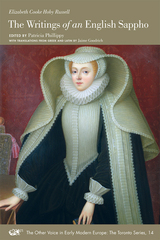 The Writings of an English Sappho
Elizabeth Cooke Hoby Russell
Iter Press, 2011 In this weighty edition of Elizabeth Cooke Hoby Russell’s works, based on extensive archival research, Patricia Phillippy brings together all known writings by her: letters, poems in English, Latin, and Greek, documents describing and planning christenings, weddings, and funerals, monumental inscriptions, entertainments, petitions, and Russell’s will. This ambitious and timely collection puts into practice recent critical arguments about the nature of women’s writings and the importance of occasional verse, familial poetry, letters, and petitions as characteristically women’s work. This collection also situates Russell, a woman, squarely and influentially in the humanist tradition, and explores her important place in English letters. This edition moves the field of early modern women’s studies into new territory, with its treatment of monumental verse as an integral part of Russell’s oeuvre.
—Jane Donawerth
Professor of English and affiliate faculty in women’s studies
University of Maryland
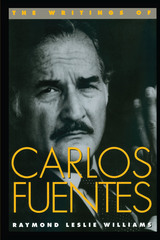 The Writings of Carlos Fuentes
By Raymond Leslie Williams
University of Texas Press, 1996 Smitten by the modernity of Cervantes and Borges at an early age, Carlos Fuentes has written extensively on the cultures of the Americas and elsewhere. His work includes over a dozen novels, among them The Death of Artemio Cruz, Christopher Unborn, The Old Gringo, and Terra Nostra, several volumes of short stories, numerous essays on literary, cultural, and political topics, and some theater. In this book, Raymond Leslie Williams traces the themes of history, culture, and identity in Fuentes' work, particularly in his complex, major novel Terra Nostra. He opens with a biography of Fuentes that links his works to his intellectual life. The heart of the study is Williams' extensive reading of the novel Terra Nostra, in which Fuentes explores the presence of Spanish culture and history in Latin America. Williams concludes with a look at how Fuentes' other fiction relates to Terra Nostra, including Fuentes' own division of his work into fourteen cycles that he calls "La Edad del Tiempo," and with an interview in which Fuentes discusses his concept of this cyclical division.
 The Writings of Charles De Koninck: Volume 1
Charles De Koninck
University of Notre Dame Press, 2008
The Writings of Charles De Koninck, Volume 1, introduces a projected three-volume series that presents the first English edition of the collected works of the Catholic Thomist philosopher Charles De Koninck (1906–1965). Ralph McInerny is the project editor and has prepared the excellent translations.
The first volume contains writings ranging from De Koninck’s 1934 dissertation at the University of Louvain on the philosophy of Sir Arthur Eddington, to two remarkable early essays on indeterminism and the unpublished book “The Cosmos.” The short essay “Are the Experimental Sciences Distinct from the Philosophy of Nature?” is also included and demonstrates for the first time De Koninck’s distinctive view on the relation between philosophy of nature and the experimental sciences. A comprehensive introductory essay by Leslie Armour outlines the structure and themes of De Koninck's philosophy. The volume begins with a biographical essay by De Koninck’s son, Thomas.
“Charles De Koninck, perhaps because of his untimely death, is not as well known to English-speaking readers as Etienne Gilson and Jacques Maritain, but his work belongs to that same world-class scholarship as his notable contemporaries. It is almost an understatement to say that his contribution to the philosophy of science remains timely. Readers are fortunate that his former student, Ralph McInerny, has seen fit to collect and to translate, where necessary, some of De Koninck's most important work for this volume.” —Jude P. Dougherty, The Catholic University of America
“Ralph McInerny is doing us the incalculable good of making available to a general public the writings of Charles De Koninck. This volume, the first of many to come, begins a chronological presentation of the books, articles, essays, and addresses of one of the strongest and most penetrating thinkers of the last century, who was at once an extraordinary philosopher and theologian, with the profound and simple faith of the proverbial peasant. May we continue now to learn from the great De Koninck, and include in our prayers the intentions of his gracious disciple, who is so felicitously discharging the office of piety to a revered and unforgettable master.” —Ronald P. Mc Arthur, President Emeritus, Thomas Aquinas College
 The Writings of Charles De Koninck: Volume Two
Charles De Koninck
University of Notre Dame Press, 2009
Volume 2 of The Writings of Charles De Koninckis part of the three-volume series presenting the first English edition of the collected works of the Catholic Thomist philosopher Charles De Koninck (1906–1965). Ralph McInerny is the project editor and has prepared the excellent translations.
The second volume begins with two works published in 1943: Ego Sapientia: The Wisdom That Is Mary, De Koninck's first study in Mariology, and The Primacy of the Common Good Against the Personalists (with The Principle of the New Order), which generated a strong critical reaction. Included in this volume are two reviews of The Primacy of the Common Good, by Yves R. Simon and I. Thomas Eschmann, O.P., and De Koninck's substantial response to Eschmann in his lengthy “In Defense of St. Thomas.” The volume concludes with a group of short essays: “The Dialectic of Limits as Critique of Reason,” “Notes on Marxism,” “This Is a Hard Saying,” “[Review of] Between Heaven and Earth,” and “Concept, Process, and Reality.”
“Volume Two of The Writings of Charles De Koninckreveals a Thomist at home not merely in the deepest questions of natural science and natural philosophy, but also in the highest reaches of ethical and political philosophy, and in the most wonderful realm of revealed theology. De Koninck combines a justified confidence in his wisdom about the highest things with humility and gratitude for the gift of that wisdom. The series edited by Dr. McInerny is taking shape as a recovered treasure of a philosopher who labored to receive, and to pass on, the gift of wisdom.“ —David Quackenbush, Thomas Aquinas College
The Writings of Jean-Paul Sartre Volume 2: Selected Prose
Jean-Paul Sartre
Northwestern University Press, 1974 The writings published here are not so much an epitome as episodes. But most do not digress. They mark the turns and turning points of a human style, the tropes of an expressive life embodying the changing tempos of an age. Until we fall silent, all of us are trying to say. These fragmentary efforts to speak to, rejoin, and help create a new community of liberated human beings constitute the epigraphs of Sartre's historical inscription.
The Writings of Jesmyn Ward: Matters of Black Southern Life and Death
Martyn Bone
University of Iowa Press, 2025 Since the publication of her first novel in 2008, Jesmyn Ward has established herself as arguably the most important U.S. author of the twenty-first century. This book considers the full range of her career thus far, including National Book Award–winning novels Salvage the Bones and Sing, Unburied, Sing, as well as Ward’s widely acclaimed memoir, Men We Reaped.
Martyn Bone thoughtfully examines key themes running throughout Ward’s writing: Black life in the U.S. South; the legacies of slavery and segregation; neoliberalism as the contemporary form of capitalism; environmental crisis in the Anthropocene; and human-animal relations. Bone also connects Ward’s work to major figures in the U.S. literary canon, with particular focus on William Faulkner, Zora Neale Hurston, and Toni Morrison.
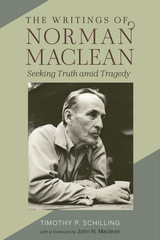 The Writings of Norman Maclean: Seeking Truth amid Tragedy
Timothy P. Schilling
University of Nevada Press, 2024 With a foreword by John N. Maclean, son of Norman Maclean
The Writings of Norman Maclean: Seeking Truth amid Tragedy provides the first critical reassessment of this celebrated author’s work in more than a decade. In his study, Timothy P. Schilling focuses on Maclean’s attempt, in A River Runs through It and Other Stories and Young Men and Fire, to come to grips with the tragic side of human existence. From the 1938 death of his brother Paul to the 1949 deaths of thirteen firefighters in Montana’s Mann Gulch wildfire, Maclean is driven by a desire to discover ultimate meaning—the truth—in the face of haunting tragedy. Through careful analysis of all of Maclean’s published works, Schilling highlights the audaciousness of Maclean’s quest to wrest free an answer from “the universe.”
Ever open to scientific, literary, philosophical, and theological ways of viewing reality, Maclean found ambiguity, paradoxically, to be an essential tool for probing the truth. Beyond exploring Maclean’s use of this tool, Schilling breaks new ground by considering Maclean’s invocation of the Transcendentals in “A River Runs through It,” noting the sly homage Maclean pays to Izaak Walton, examining Maclean’s often-neglected “Other Stories,” assessing Robert Redford’s film adaptation of “A River Runs through It,” and providing the most thorough exploration of Young Men and Fire yet available.
With this book, Schilling offers a current and complete analysis of Maclean—one of the most iconic figures in Western American literature.
Writings of Resistance
Angélique de Saint-Jean Arnauld d’Andilly
Iter Press, 2015 An erudite abbess of Port-Royal, Angélique de Saint-Jean Arnauld d’Andilly (1624 – 1684) resisted the demands of church and state to condemn the Jansenist theological doctrines which the convent had long upheld. In her autobiographical Report on Captivity, Angélique de Saint-Jean recounts her personal methods of spiritual resistance as she and her fellow nuns underwent waves of persecution resulting in exile, house arrest, interdict, and excommunication. Her voluminous theological writings present the theoretical basis for this resistance, limiting the claims of political and ecclesiastical authorities over the conscience of the individual. In particular, she defends the right of women to refuse to surrender their convictions due to specious appeals to obedience and humility.
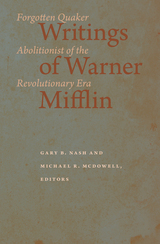 Writings of Warner Mifflin: Forgotten Quaker Abolitionist of the Revolutionary Era
Gary B. Nash
University of Delaware Press, 2021 In The Writings of Warner Mifflin, Gary Nash and Michael McDowell present the correspondence, petitions, and memorials to state and federal legislative bodies, semi-autobiographical essays, and other materials of the key figure in the U.S. abolitionist movement between the end of the American Revolution and the Jefferson presidency. Virtually unknown to Americans, Mifflin has been brought to life in Nash’s recent biography, Warner Mifflin: Unflinching Quaker Abolitionist (2017). This volume provides an array of insights into the mind of this conscience-bound pacifist Quaker who became instrumental in making Kent County, Delaware, a bastion of free blacks liberated from slavery and a seedbed of a reparationist doctrine that insisted that enslavers owed “restitution” to manumitted Africans and their descendants. Mifflin's writings also show how he became the most skilled lobbyist of the antislavery campaigners who haunted the legislative chambers of North Carolina, Virginia, Maryland, Delaware, and Pennsylvania as well as the halls of the Continental Congress and the First and Second Federal Congresses. An opening introduction and introductions to each of the five chronologically arranged parts of the book provide context for the documents and a narrative of the life of this remarkable American.
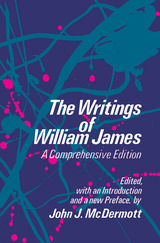 The Writings of William James: A Comprehensive Edition
William James
University of Chicago Press, 1978 In his introduction to this collection, John McDermott presents James's thinking in all its manifestations, stressing the importance of radical empiricism and placing into perspective the doctrines of pragmatism and the will to believe. The critical periods of James's life are highlighted to illuminate the development of his philosophical and psychological thought.
The anthology features representive selections from The Principles of Psychology, The Will to Believe, and The Variety of Religious Experience in addition to the complete Essays in Radical Empiricism and A Pluralistic Universe. The original 1907 edition of Pragmatism is included, as well as classic selections from all of James's other major works. Of particular significance for James scholarship is the supplemented version of Ralph Barton Perry's Annotated Bibliography of the Writings of William James, with additions bringing it up to 1976.
 Writings on Body and Soul
Aelred of Rievaulx
Harvard University Press, 2021 Aelred (1110–1167), abbot of Rievaulx Abbey in Yorkshire, has always been a controversial figure. He was beloved by his monks and widely admired, but also sharply criticized for his frankness about his own sinfulness and what some considered his favoritism and excessive leniency.
Writings on Body and Soul includes a selection of the prolific abbot’s theological, historical, and devotional works. Each contains autobiographical elements, showing Aelred at turns confident and fearful, tormented and serene. In A Pastoral Prayer, he asserts his unworthiness and pleads for divine aid in leading his monks wisely and compassionately. Spiritual Friendship adapts Cicero’s dialogue on friendship for Christian purposes. A Certain Marvelous Miracle offers a riveting account of a pregnant teenage nun, the bloody vengeance wreaked on her seducer, and the miracle of her release from her fetters. Finally, Teachings for Recluses, addressed to Aelred’s sister, is a guide for women pursuing solitary religious perfection.
Freshly revised editions of the Latin texts appear here alongside new English translations.
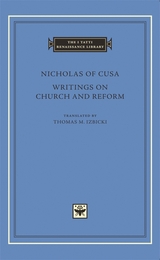 Writings on Church and Reform
Nicholas of CusaTranslated by Thomas M. Izbicki
Harvard University Press, 2008 Nicholas of Cusa (1401–1464), widely considered the most important original philosopher of the Renaissance, was born in Kues on the Moselle River. A polymath who studied canon law and became a cardinal of the Roman Catholic Church, he wrote principally on speculative theology, philosophy, and church politics. As a political thinker he is best known for De concordantia catholica, which presented a blueprint for peace in an age of ecclesiastical discord.
This volume makes most of Nicholas’s other writings on Church and reform available in English for the first time, including legal tracts arguing the case of Pope Eugenius IV against the conciliarists, theological examinations of the nature of the Church, and writings on reform of the papacy and curia. Among the works translated are an early draft of De concordantia catholica and the Letter to Rodrigo Sanchez de Arevalo, which discusses the Church in light of the Cusan idea of “learned ignorance.”
 Writings on Grace: The Complete Ecrits sur la grace
Blaise Pascal
Catholic University of America Press A few years before he died in 1662, Blaise Pascal wrote fifteen interconnected essays on grace, which have collectively come to be known as the Écrits sur la grâce. These were not published before his death, and were not polished and revised by him with an eye to publication, which means that they show his mind at work experimentally, trying out lines of argument and engagements with magisterial and patristic texts without resolving them into anything like a final system. The Écrits are replete with experimental formulations and bursts of literary and intellectual energy; taken together, they provide an intense and extreme presentation of Pascal's version of Augustinianism with respect to grace, election, and predestination, the meaning of the Council of Trent, and much else. These essays provide one of the keys to the entirety of Pascal's thought, and they provide a view of grace's workings -- perhaps better, a grammar of grace -- which still warrants serious attention by Catholic theologians.
Less than one-fifth of the Écrits has yet been published in English. This book provides a complete translation, made from the French text provided in Michel Le Guern's edition (1998, 2000) of Pascal's Oeuvres complètes, and annotated to provide full information about Pascal's sources and how he used them. The translation is followed by a substantial interpretive essay in which Pascal's positions and approaches are restated and argued with.
Writings on Media: History of the Present
Stuart Hall
Duke University Press, 2021 Writings on Media gathers more than twenty of Stuart Hall's media analyses, from scholarly essays such as “Encoding and Decoding in the Television Discourse” (1973) to other writings addressed to wider publics. Hall explores the practices of news photography, the development of media and cultural studies, the changing role of television, and how the nation imagines itself through popular media. He attends to Britain's imperial history and the politics of race and cultural identity as well as the media's relationship to the political project of the state. Testifying to the range and agility of Hall's critical and pedagogic engagement with contemporary media culture—and also to his collaborative mode of working—this volume reaffirms his stature as an innovative media theorist while demonstrating the continuing relevance of his methods of analysis.
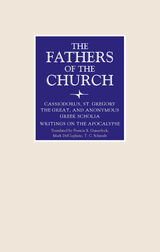 Writings on the Apocalypse
Francis X. Gumerlock
Catholic University of America Press, 2022 The Apocalypse or Book of Revelation is one of the most frequently discussed books of the biblical canon and arguably one of the most difficult to interpret. This volume contains three texts as examples of late ancient Christian interpretation of its intriguing visions. It also includes a comprehensive introduction to each text by its respective translator. Brief Explanations of the Apocalypse by Cassiodorus (c. 580), translated by Francis X. Gumerlock from Latin and published in English for the first time in this volume, served as an introduction to the Book of Revelation for Cassiodorus’s students at the Vivarium, a monastery in southern Italy. Cassiodorus divided the Apocalypse into 33 sections, corresponding to the age of Jesus at his Passion, and expressed his belief that John’s visions were revelations of the end of the world, including the Second Coming of Christ for judgment, the defeat of the Antichrist, the general resurrection, and the arrival of the heavenly Kingdom. Testimonies of Gregory the Great on the Apocalypse, translated from Latin by Mark DelCogliano and also published here for the first time in English, is a collection of 55 excerpts on the Apocalypse from the writings of St. Gregory the Great (d. 604) compiled by an anonymous author. Drawn mainly from Gregory’s Moralia, but also from his Book on Pastoral Care and homilies, the excerpts, which are arranged from Revelation 1.4 to 22.17, illustrate Gregory’s grammatical exegesis of the Apocalypse, his interpretation of various figures in the Apocalypse, and his attempt to reconcile certain passages in the Apocalypse with seemingly contradictory texts from other parts of Scripture. The anonymous Greek Scholia on the Apocalypse contains 39 exegetical notes on chapters 1-14 of the Apocalypse, which reveal influences of Origen and Didymus the Blind, among others. The notes provide “spiritual” interpretations of the various passages and give attention to the interpretation of certain words that appear in the Book of Revelation. This new translation from the Greek by T. C. Schmidt utilizes all the Greek editions. Furthermore, its introductory matter contains updates on the Scholia from the latest scholarship and compares each scholion with interpretations found in various patristic authors, mainly of Alexandrian heritage.
Writings on the Sisters of San Luca and Their Miraculous Madonna
Diodata Malvasia
Iter Press, 2015 The Bolognese nun Diodata Malvasia was presumed to have authored only one work, The Arrival and the Miraculous Workings of the Glorious Image of the Virgin (1617). In her recently discovered second manuscript chronicle, A Brief Discourse on What Occurred to the Most Reverend Sisters of the Joined Convents of San Mattia and San Luca (1575), her writing demonstrates active resistance to Tridentine convent reform. Together, Malvasia’s works read as the bookends to a lifelong crusade on behalf of her convent.
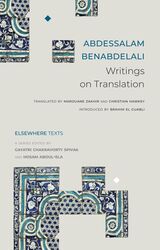 Writings on Translation
Abdessalam Benabdelali
Seagull Books, 2025 An exploration of the philosophical dimensions of translation, celebrating it as a practice that preserves and proliferates cultural differences.
Abdessalam Benabdelali is a revered Moroccan philosopher and translator whose work maps an invaluable history of the status of translation in contemporary Arabic thought and language. Bringing together essays from two linked Arabic works by Benabdelali—On Translation and Hosting the Stranger—this volume represents one of the first extended philosophical explorations of translation by a contemporary Arab philosopher. These works reframe Arabic and European cultural histories around translation to counter hegemonic discourses and celebrate translation as a form of philosophical thought and practice, one that both preserves and proliferates difference.
Whether discussing eighteenth-century European perceptions of Arabic culture, classical Arabic literature and its express intent to resist all translation, or contemporary Arabic authors who write in anticipation of translation, Writings on Translation nimbly outlines the key philosophical questions at stake in translation. It concludes with an impassioned argument for translations that “host the stranger” and allow texts to “lift off and migrate.”
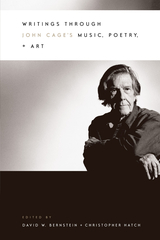 Writings through John Cage's Music, Poetry, and Art
Edited by David W. Bernstein and Christopher Hatch
University of Chicago Press, 2001 This volume looks at the creative work of the great avant-gardist John Cage from an exciting interdisciplinary perspective, exploring his activities as a composer, performer, thinker, and artist.
The essays in this collection grew out of a pivotal gathering during which a spectrum of participants including composers, music scholars, and visual artists, literary critics, poets, and filmmakers convened to examine Cage's extraordinary artistic legacy. Beginning with David Bernstein's introductory essay on the reception of Cage's music, the volume addresses topics ranging from Cage's reluctance to discuss his homosexuality, to his work as a performer and musician, and his forward-looking, provocative experimentation with electronic and other media. Several of the essays draw upon previously unseen sketches and other source materials. Also included are transcripts of lively panel discussions among some of Cage's former colleagues. Taken together, this collection is a much-needed contribution to the study of one of the most significant American artists of the twentieth century.
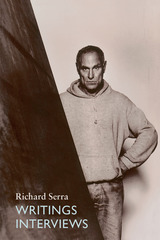 Writings/Interviews
Richard Serra
University of Chicago Press, 1994 One of the most important sculptors of this century, Richard Serra has been a spokesman on the nature and status of art in our day. Best known for site-specific works in steel, Serra has much to say about the relation of sculpture to place, whether urban, natural, or architectural, and about the nature of art itself, whether political, decorative, or personal. In interviews with writers including Douglas and Davis Sylvester, he discusses specific installations and offers insights into his approach to the problem each presents. Interviews by Peter Eisenman and Alan Colquhoun elicit Serra's thoughts on the relation of architecture to contemporary sculpture, a primary component in his own work. From essays like "Extended Notes from Sight Point Road" to Serra's extended commentary on the Tilted Arc fiasco, the pieces in this volume comprise a document of one artist's engagement with the practical, philosophical, and political problems of art.
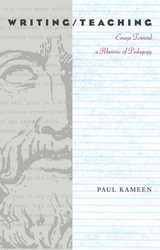 Writing/Teaching: Essays Toward a Rhetoric of Pedagogy
Paul Kameen
University of Pittsburgh Press, 2000
2001 CCCC Outstanding Book Award
The vast majority of academic books are written from the scholar’s position, even those that primarily concern teaching. Writing/Teaching, on the other hand, is a book about teaching written from the position of the teacher. As the title suggests, Kameen’s book is split into two halves—yet both, in different ways and through different discourses, are derived from his work in the classroom, and his own struggle with issues and problems all teachers of writing must face.
The first half is a series of essays originating from a graduate seminar Kameen team-taught with professor and poet Toi Derricotte in 1994. Included are essays Kameen wrote, a selection of pieces written by other members of the group, and a reflective “postscript.” These essays combine personal narrative, reflective meditation, and critical inquiry—all used as discourse to depict and examine the process of teaching.
The second half of the book contains essays on Plato’s dialogues—primarily Phaedrus and Protagoras—as a means to interrogate the position of teacher through the lens of the most famous of Western pedagogues—Socrates. Here, Socrates is used as a tool to examine and critique both Kameen’s own teacherly identity and, in a wider sense, the set of cultural forces that pre-figure the available positions for both “teacher” and “student” in contemporary education.
What unites both halves is the way Kameen approaches each—the “personal” and the “scholarly”—from his position as teacher. The texts presented provide the occasion for a complex and nuanced meditation on the classroom as a legitimate arena for the production of knowledge and research. Sure to be timely and controversial, Writing/Teaching will enter into the debate on whether to reconfigure the relationship between research and teaching currently taking place among teachers of composition, cultural studies, and rhetoric. Compelling reading for teachers or those contemplating a career in the profession.
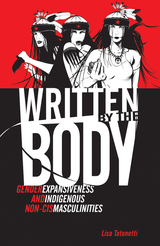 Written by the Body: Gender Expansiveness and Indigenous Non-Cis Masculinities
Lisa Tatonetti
University of Minnesota Press, 2021 Examining the expansive nature of Indigenous gender representations in history, literature, and film
Within Native American and Indigenous studies, the rise of Indigenous masculinities has engendered both productive conversations and critiques. Lisa Tatonetti intervenes in this conversation with Written by the Body by centering how female, queer, and/or Two-Spirit Indigenous people take up or refute masculinity, and, in the process, offer more expansive understandings of gender. Written by the Body moves from the eighteenth- and nineteenth-century archive to turn-of-the-century and late-twentieth-century fiction to documentaries, HIV/AIDS activism, and, finally, recent experimental film and literature. Across it all, Tatonetti shows how Indigenous gender expansiveness, and particularly queer and non-cis gender articulations, moves between and among Native peoples to forge kinship, offer protection, and make change. She charts how the body functions as a somatic archive of Indigenous knowledge in Native histories, literatures, and activisms—exploring representations of Idle No More in the documentary Trick or Treaty, the all-female wildland firefighting crew depicted in Apache 8, Chief Theresa Spence, activist Carole laFavor, S. Alice Callahan, Thirza Cuthand, Joshua Whitehead, Carrie House, and more. In response to criticisms of Indigenous masculinity studies, Written by the Body de-sutures masculinity from the cis-gendered body and investigates the ways in which female, trans, and otherwise nonconforming masculinities carry the traces of Two-Spirit histories and exceed the limitations of settler colonial imaginings of gender.
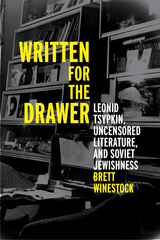 Written for the Drawer: Leonid Tsypkin, Uncensored Literature, and Soviet Jewishness
Brett Winestock
University of Wisconsin Press, 2024 Russian-Jewish writer Leonid Tsypkin (1926–82), a doctor by trade, wrote primarily “for the drawer,” fearing professional consequences if he were to publish his fiction. Despite Tsypkin’s almost complete lack of readership during his lifetime, his work has received international posthumous recognition, with Susan Sontag calling his work “among the most beautiful, exalting, and original achievements of a century’s worth of fiction.”
Tsypkin’s autobiographical writing explored the impossibility of being both a Russian writer and a Soviet Jew, employing indirection and referentiality. In the first book-length appraisal of Tsypkin and his work, Brett Winestock considers Tsypkin’s fiction as part of a transnational literary response to the horrors of the twentieth century, a reception that helps explain his much-belated international readership. Through close readings of Tsypkin’s work in the context of late-Soviet cultural worlds, Winestock makes an important contribution to studies of Jewish Soviet writing and identity.
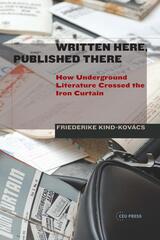 Written Here, Published There: How Underground Literature Crossed the Iron Curtain
Friederike Kind-Kovács
Central European University Press, 2015 Written Here, Published There offers a new perspective on the role of underground literature in the Cold War and challenges us to recognize gaps in the Iron Curtain. The book identifies a transnational undertaking that reinforced détente, dialogue, and cultural transfer, and thus counterbalanced the persistent belief in Europe's irreversible division. It analyzes a cultural practice that attracted extensive attention during the Cold War but has largely been ignored in recent scholarship: tamizdat, or the unauthorized migration of underground literature across the Iron Curtain. Through this cultural practice, I offer a new reading of Cold War Europe's history. Investigating the transfer of underground literature from the 'Other Europe' to Western Europe, the United States, and back illuminates the intertwined fabrics of Cold War literary cultures. Perceiving tamizdat as both a literary and a social phenomenon, the book focuses on how individuals participated in this border-crossing activity and used secretive channels to guarantee the free flow of literature.
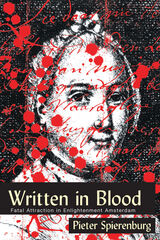 WRITTEN IN BLOOD: FATAL ATTRACTION IN ENLIGHTENMENT AMSTERDAM
Pieter Spierenburg
Ohio State University Press, 2004 Pieter Spierenburg narrates two sensational murder cases among intimates in eighteenth-century Amsterdam. The cases recounted here both resulted from fatal attraction. They represented the darker side of the eighteenth-century revolution in love. This period witnessed great cultural changes affecting personal relationships and emotions. The new ideal of love demanded that couples spend much of their time together and explore each other’s feelings. But this new ideal was meant for married and engaged couples only; for others it meant disaster. Love gone wrong was the theme of the sentimental novels of the age, but it also happened to real people, with fatal consequences. Written in Blood traces the lives and ultimate fate of Nathaniel Donker, who, together with the help of his mistress, brutally murders and dismembers the wife. The second tale focuses on J. B. F. van Gogh, who falls in love with a prostitute; she later rejects him and, when a letter written with his own blood fails to change her mind, he stabs her to death in a fit of passionate rage. In Written in Blood, the reader gets two stories for the price of one. And, whereas earlier microhistories have been situated in a village or a small town, the scene here is Amsterdam and its canals. Spierenburg reveals in detail what concepts like honor and gender roles came down to in individual lives. He also shows that these murders produced a strange mixture of modern romantic feelings and traditional notions of honor and shame.
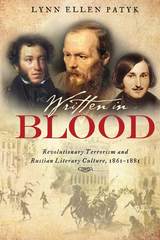 Written in Blood: Revolutionary Terrorism and Russian Literary Culture, 1861–1881
Lynn Ellen Patyk
University of Wisconsin Press, 2017 Written in Blood offers a fundamentally new interpretation of the emergence of modern terrorism, arguing that it formed in the Russian literary imagination well before any shot was fired or bomb exploded. In March 1881, Russia stunned the world when a small band of revolutionaries calling themselves "terrorists" assassinated the Tsar-Liberator, Alexander II. Horrified Russians blamed the influence of European political and social ideas, while shocked Europeans perceived something new and distinctly Russian in a strategy of political violence that became known the world over as "terrorism" or "the Russian method."
Lynn Ellen Patyk contends that the prototype for the terrorist was the Russian writer, whose seditious word was interpreted as an audacious deed—and a violent assault on autocratic authority. The interplay and interchangeability of word and deed, Patyk argues, laid the semiotic groundwork for the symbolic act of violence at the center of revolutionary terrorism. While demonstrating how literary culture fostered the ethos, pathos, and image of the revolutionary terrorist and terrorism, she spotlights Fyodor Dostoevsky and his "terrorism trilogy"—Crime and Punishment (1866), Demons (1870–73), and The Brothers Karamazov (1878–80)—as novels that uniquely illuminate terrorism's methods and trajectory. Deftly combining riveting historical narrative with penetrating literary analysis of major and minor works, Patyk's groundbreaking book reveals the power of the word to spawn deeds and the power of literature to usher new realities into the world.
Written in Blood: Revolutionary Terrorism and Russian Literary Culture, 1861–1881
Lynn Ellen Patyk
University of Wisconsin Press, 2020 Written in Blood offers a fundamentally new interpretation of the emergence of modern terrorism, arguing that it formed in the Russian literary imagination well before any shot was fired or bomb exploded. Lynn Ellen Patyk contends that the prototype for the terrorist was the Russian writer, whose seditious word was interpreted as an audacious deed—and a violent assault on autocratic authority. Deftly combining riveting historical narrative with penetrating literary analysis of major and minor works, Patyk’s groundbreaking book reveals the power of the word to spawn deeds and the power of literature to usher new realities into the world.
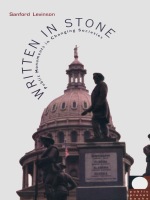 Written in Stone: Public Monuments in Changing Societies
Sanford Levinson
Duke University Press, 1998 Is it “Stalinist” for a formerly communist country to tear down a statue of Stalin? Should the Confederate flag be allowed to fly over the South Carolina state capitol? Is it possible for America to honor General Custer and the Sioux Nation, Jefferson Davis and Abraham Lincoln? Indeed, can a liberal, multicultural society memorialize anyone at all, or is it committed to a strict neutrality about the quality of the lives led by its citizens? In Written in Stone, legal scholar Sanford Levinson considers the tangled responses of ever-changing societies to the monuments and commemorations created by past regimes or outmoded cultural and political systems. Drawing on examples from Albania to Zimbabwe, from Moscow to Managua, and paying particular attention to examples throughout the American South, Levinson looks at social and legal arguments regarding the display, construction, modification, and destruction of public monuments. He asks what kinds of claims the past has on the present, particularly if the present is defined in dramatic opposition to its past values. In addition, he addresses the possibilities for responding to the use and abuse of public spaces and explores how a culture might memorialize its historical figures and events in ways that are beneficial to all its members. Written in Stone is a meditation on how national cultures have been or may yet be defined through the deployment of public monuments. It adds a thoughtful and crucial voice into debates surrounding historical accuracy and representation, and will be welcomed by the many readers concerned with such issues.
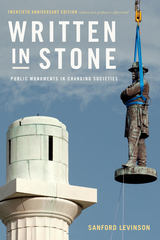 Written in Stone: Public Monuments in Changing Societies
Sanford Levinson
Duke University Press, 1998 Twentieth Anniversary Edition with a new preface and afterword
From the removal of Confederate monuments in New Orleans in the spring of 2017 to the violent aftermath of the white nationalist march on the Robert E. Lee monument in Charlottesville later that summer, debates and conflicts over the memorialization of Confederate “heroes” have stormed to the forefront of popular American political and cultural discourse. In Written in Stone Sanford Levinson considers the tangled responses to controversial monuments and commemorations while examining how those with political power configure public spaces in ways that shape public memory and politics. Paying particular attention to the American South, though drawing examples as well from elsewhere in the United States and throughout the world, Levinson shows how the social and legal arguments regarding the display, construction, modification, and destruction of public monuments mark the seemingly endless confrontation over the symbolism attached to public space.
This twentieth anniversary edition of Written in Stone includes a new preface and an extensive afterword that takes account of recent events in cities, schools and universities, and public spaces throughout the United States and elsewhere. Twenty years on, Levinson's work is more timely and relevant than ever.
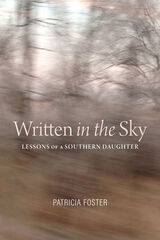 Written in the Sky: Lessons of a Southern Daughter
Patricia Foster
University of Alabama Press, 2023 "A powerful, often heart-wrenching collection of essays tackling the history of the American South." —Kirkus Reviews
In Written in the Sky: Lessons of a Southern Daughter, Patricia Foster presents a double portrait of place and family, a book of deeply personal essays that interrogate the legacy of racial tensions in the South, the constriction of caste and gender, and the ways race, class, and white privilege are entwined in her family story. After interviewing girls at Booker T. Washington High School in Tuskegee, Alabama, visiting the National Memorial for Peace and Justice in Montgomery, Alabama, and exploring Africatown in Plateau, Alabama, Patricia Foster was moved to reflect on the racial scars and crossroads in her southern past as well as to reckon with the intimate places of her own wounding and grief.
The story of place, she discovers, emerges not only from family histories and cultural traditions but also from wrestling with a culture’s irreconcilable ideas: the hard push to determine what matters. What matters to her are the shadow stories beneath our mythologies, the complicated and radiant narratives that must be excavated and reckoned with, stories that have no neat or binary resolution, stories full of luminous moments and riveting facts, and stories where the secrets hide. Written in the Sky presents the best of nonfiction storytelling: searingly honest portraits, dramatic encounters, and lyrical narratives that will interest teachers and students as well as social justice advocates, policymakers, and readers compelled by stories of awakening and the white-hot beauty of language.
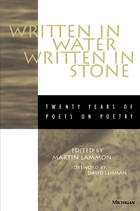 Written in Water, Written in Stone: Twenty Years of Poets on Poetry
Martin Lammon, Editor
University of Michigan Press, 1996 For twenty years, the Poets on Poetry series, under the editorship of Donald Hall, has provided readers with a variety of prose reflections, interviews, essays, and other works by America's leading contemporary poets. With Written in Water, Written in Stone, Martin Lammon celebrates the longevity and literary success of the series by gathering together exemplary selections from many of its volumes. Organized by theme ranging from language and form, politics and poetry, to the literary industry, Written in Water, Written in Stone offers a remarkable survey of the salient issues that concern contemporary poets and their readers.
Included are selections from, among others, Robert Bly, Hayden Carruth, Amy Clampitt, Robert Creeley, Tess Gallagher, Donald Hall, Robert Hayden, Galway Kinnell, Richard Kostelanetz, Maxine Kumin, Philip Levine, Marge Piercy, Anne Sexton, Charles Simic, Louis Simpson, William Stafford, Diane Wakoski, Charles Wright, and James Wright. This diverse collection of popular contemporary poets is sure to appeal to a wide range of readers.
Martin Lammon teaches creative writing at Fairmont State College. He is a poet and editor of the literary magazine Kestrel.
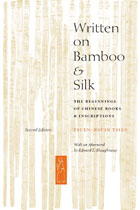 Written on Bamboo and Silk: The Beginnings of Chinese Books and Inscriptions, Second Edition
Tsuen-Hsuin Tsien
University of Chicago Press, 2004 Paleography, which often overlaps with archaeology, deciphers ancient inscriptions and modes of writing to reveal the knowledge and workings of earlier societies. In this now-classic paleographic study of China, Tsuen-Hsuin Tsien traces the development of Chinese writing from the earliest inscriptions to the advent of printing, with specific attention to the tools and media used. This edition includes material that treats the many major documents and ancient Chinese artifacts uncovered over the forty years since the book’s first publication, as well as an afterword by Edward L. Shaughnessy. Written on Bamboo and Silk has long been considered a landmark in its field. Critical in this regard is the excavation of numerous sites throughout China, where hundreds of thousands of documents written on bamboo and silk—as well as other media—were found, including some of the earliest copies of historical, medical, astronomical, military, and religious texts that are now essential to the study of early Chinese literature, history, and philosophy. Discoveries such as these have made the amount of material evidence on the origins and evolution of communication throughout Chinese history exceedingly broad and rich, and yet Tsien succeeds in tackling it all and building on the earlier classic work that changed
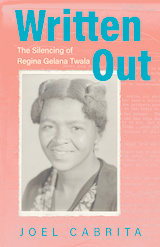 Written Out: The Silencing of Regina Gelana Twala
Joel Cabrita
Ohio University Press, 2023 Systemic racism and sexism caused one of South Africa’s most important writers to disappear from public consciousness. Is it possible to justly restore her historical presence? Regina Gelana Twala, a Black South African woman who died in 1968 in Swaziland (now Eswatini), was an extraordinarily prolific writer of books, columns, articles, and letters. Yet today Twala’s name is largely unknown. Her literary achievements are forgotten. Her books are unpublished. Her letters languish in the dusty study of a deceased South African academic. Her articles are buried in discontinued publications. Joel Cabrita argues that Twala’s posthumous obscurity has not developed accidentally as she exposes the ways prejudices around race and gender blocked Black African women like Twala from establishing themselves as successful writers. Drawing upon Twala’s family papers, interviews, newspapers, and archival records from Pretoria, Uppsala, and Los Angeles, Cabrita argues that an entire cast of characters—censorious editors, territorial White academics, apartheid officials, and male African politicians whose politics were at odds with her own—conspired to erase Twala’s legacy. Through her unique documentary output, Twala marked herself as a radical voice on issues of gender, race, and class. The literary gatekeepers of the racist and sexist society of twentieth-century southern Africa clamped down by literally writing her out of the region’s history. Written Out also scrutinizes the troubled racial politics of African history as a discipline that has been historically dominated by White academics, a situation that many people within the field are now examining critically. Inspired by this recent movement, Cabrita interrogates what it means for her—a White historian based in the Northern Hemisphere—to tell the story of a Black African woman. Far from a laudable “recovery” of an important lost figure, Cabrita acknowledges that her biography inevitably reproduces old dynamics of White scholarly privilege and dominance. Cabrita’s narration of Twala’s career resurrects it but also reminds us that Twala, tragically, is still not the author of her own life story.
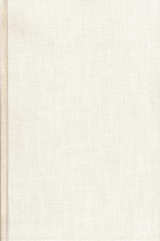 Written Voices, Spoken Signs: Tradition, Performance, and the Epic Text
Egbert J. Bakker
Harvard University Press, 1997 Written Voices, Spoken Signs is a stimulating introduction to new perspectives on Homer and other traditional epics. Taking advantage of recent research on language and social exchange, the nine essays in this volume focus on performance and audience reception of oral poetry.
These innovative essays by leading scholars of Homer, oral poetics, and epic invite us to rethink some key concepts for an understanding of traditional epic poetry. Egbert Bakker examines the epic performer's use of time and tense in recounting a past that is alive. Tackling the question of full-length performance of the monumental Iliad, Andrew Ford considers the extent to which the work was perceived as a coherent whole in the archaic age. John Miles Foley addresses questions about spoken signs and the process of reference in epic discourse, and Ahuvia Kahane studies rhythm as a semantic factor in the Homeric performance. Richard Martin suggests a new range of performance functions for the Homeric simile. And Gregory Nagy establishes the importance of one feature of epic language, the ellipsis. These six essays centered on Homer engage with fundamental issues that are addressed by three essays primarily concerned with medieval epic: those by Franz Bäuml on the concept of fact; by Wulf Oesterreicher on types of orality; and by Ursula Schaefer on written and spoken media. In their Introduction the editors highlight the underlying approach and viewpoints of this collaborative volume.
 The Written World: Past and Place in the Work of Orderic Vitalis
Amanda Jane Hingst
University of Notre Dame Press, 2009
The Anglo-Norman monk Orderic Vitalis (1075-c.1142) wrote his monumental, highly individual Historia Ecclesiastica as an exercise in monastic discipline intended to preserve the events and character of Christendom for future generations. Though cloistered since childhood in a Benedictine monastery near Normandy's southern border, Orderic gained access to an intellectual world that extended from Scotland to Jerusalem through his engagement with texts and travelers that made their way into his monastic milieu. His Historia Ecclesiastica, with a breadth of vision unparalleled in its time, is a particularly fertile source for an investigation of concepts of space and historiography in the high Middle Ages.
In The Written World: Past and Place in the Work of Orderic Vitalis, Amanda Jane Hingst draws on the blend of intellectual intimacy and historiographical breadth in Orderic's writings to investigate the ways in which high medieval historians understood geographical space to be a temporally meaningful framework for human affairs. Hingst explores Orderic's manipulation of the classical geographical tradition, his balancing of spatial scale between the local and the universal, and his sophisticated and original utilization of the new intellectual currents of the twelfth century. She argues that Orderic, along with some of his contemporaries, interpreted Christendom's terrain not merely as a static stage for human action but as a meaningful element in human history. Using a theoretical framework marrying modern spatial theory with medieval philosophical traditions, Hingst suggests that, at its most nuanced, medieval historiography affirmed the symbolic topography of Christendom by linking history and geography in such a way that they mutually forged and reinforced each other. With a clarity of style and ideas, Hingst makes available to both students and trained scholars a fascinating account of a heretofore underappreciated medieval figure and his work.
“Amanda Hingst has written a wonderful book—learned, brilliant in concept, and graceful in execution. She provides the most thorough reading of the full text of the most interesting historian of the twelfth century, Orderic Vitalis, and, in so doing, contributes significantly to the study of historiography and the reading of the history of the period.” —Robert M. Stein, Doris and Carl Kempner Distinguished Professor of Humanities, Purchase College
“Orderic Vitalis is one of the great twelfth-century historians who is both cursorily well-known and hardly known at all in any deep sense. Amanda Hingst offers us a substantial remedy for that lack by taking seriously an aspect of reality that Orderic (but not his modern readers) took seriously: the readable natural world of landscape, traversable space, and dramatic weather, all fraught with meaning for history. Hingst writes from a well-chosen critical place uniting the historian's specificity with the literary critic's sensitivity to map the topography of meanings that Orderic inscribed into the physical settings for the historical events he narrated. Hingst's clever choice of interpretive focus respects both medieval and modern senses of historical reality, and contributes
significantly to our still growing awareness of the depth and complexity of medieval historical writing.” —Nancy Partner, McGill University
“The Written Worldlives up to its audacious title. Wry, cool, and unflappably alert, it makes brilliant sense of Orderic Vitalis's baffling and luxuriant composition. We have here the work of a historian who can teach literary scholars something about how to read.” —Steven Justice, University of California, Berkeley
“The Written Worldis a wonderful, innovative, and beautifully written study of Orderic Vitalis’s Historia Ecclesiastica. Amanda Hingst vividly evokes the meaning and function of history for an Anglo-Norman monk at the end of the eleventh century and the beginning of the twelfth. She emphasizes how geographical space provided a temporal framework through which Orderic Vitalis narrated and experienced historical events. The landscape of Christendom, far from being an unchanging backdrop to human deeds, actively participated in the history of the world. Heaven was glimpsed on earth as God manipulated fields and streams, trees and clouds, tempests and dirt with a divine purpose. This book is a major contribution to the intellectual history of the High Middle Ages.” —Mark Gregory Pegg, Washington University
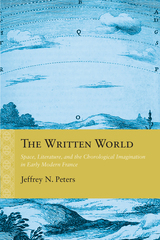 The Written World: Space, Literature, and the Chorological Imagination in Early Modern France
Jeffrey N. Peters
Northwestern University Press, 2018 In The Written World: Space, Literature, and the Chorological Imagination in Early Modern France, Jeffrey N. Peters argues that geographic space may be understood as a foundational, originating principle of literary creation. By way of an innovative reading of chora, a concept developed by Plato in the Timaeus and often construed by philosophical tradition as “space,” Peters shows that canonical literary works of the French seventeenth century are guided by what he calls a “chorological” approach to artistic invention. The chorological imagination describes the poetic as a cosmological event that gives location to—or, more accurately, in Plato’s terms, receives—the world as an object of thought.
In analyses of well-known authors such as Corneille, Molière, Racine, and Madame de Lafayette, Peters demonstrates that the apparent absence of physical space in seventeenth-century literary depiction indicates a subtle engagement with, rather than a rejection of, evolving principles of cosmological understanding. Space is not absent in these works so much as transformed in keeping with contemporaneous developments in early modern natural philosophy. The Written World will appeal to philosophers of literature and literary theorists as well as scholars of early modern Europe and historians of science and geography
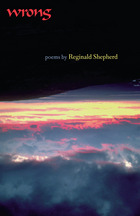 Wrong
Reginald Shepherd
University of Pittsburgh Press, 1999 The poems of Reginald Shepherd’s third book move among, mix, and manufacture stories, seeking to redefine the meaning of mythology. From the ruined representatives of Greek divinity (broken statues and fragmented stories), and the dazzling extravagances of predecessors like Hart Crane and Wallace Stevens, to the fleeting promises of popular music and the laconic demigods of the contemporary gay subculture, they sketch maps of a world in which desire may find a restless home. But desire leads the maps astray and maps mislead desire. The poems poems both enact language’s powers to create a world and enforce the world’s insistence (material, social, sexual, racial, historical) that mind (and body) surrender to circumstance. The struggle between these two halves that will never make a whole produces new myths of occasion, “packing the rifts/with sleeplessness, filling the gaps with lack.” In that space between promise and deprivation, Wrong builds its song.
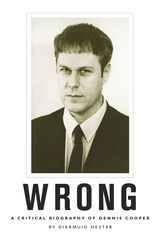 Wrong: A Critical Biography of Dennis Cooper
Diarmuid Hester
University of Iowa Press, 2020 Dennis Cooper is one of the most inventive and prolific artists of our time. Working in a variety of forms and media since he first exploded onto the scene in the early 1970s, he has been a punk poet, a queercore novelist, a transgressive blogger, an indie filmmaker—each successive incarnation more ingenious and surprising than the last. Cooper’s unflinching determination to probe the obscure, often violent recesses of the human psyche have seen him compared with literary outlaws like Rimbaud, Genet, and the Marquis de Sade. In this, the first book-length study of Cooper’s life and work, Diarmuid Hester shows that such comparisons hardly scratch the surface. A lively retrospective appraisal of Cooper’s fifty-year career, Wrong tracks the emergence of Cooper’s singular style alongside his participation in a number of American subcultural movements like New York School poetry, punk rock, and radical queercore music and zines. Using extensive archival research, close readings of texts, and new interviews with Cooper and his contemporaries, Hester weaves a complex and often thrilling biographical narrative that attests to Cooper’s status as a leading figure of the American post–War avant-garde.
 "The Wrong Side of Privilege": Advocacy, Community, and Politics: The Collected Essays of Stephen J. Parks, 2000–2020
Stephen J. Parks
University Press of Colorado, 2025 “The Wrong Side of Privilege” explores the historical development of community partnership frameworks in composition and rhetoric. It begins by situating partnership work within the political and cultural frameworks of the late 20th and early 21st century, including the rise of the conservative right and neoliberal economic policies. Following this introduction, Stephen J. Parks presents a series of essays which provides case studies of what “political work” implied during this period. The essays move in focus from local community contexts, such a neighborhood struggle against gentrification, to global contexts, such as the Syrian conflict and the larger Arab Spring. These essays engage with the leading scholars of community partnership work, such as Eli Goldblatt, Ellen Cushman, Linda Flower, and Paula Mathieu. The book concludes with a dialogue between the author and two global democratic advocates, Eli Goldblatt and Srdja Popović, on the necessity of public work in the face of declining global governance.
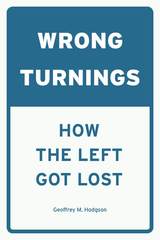 Wrong Turnings: How the Left Got Lost
Geoffrey M. Hodgson
University of Chicago Press, 2017 The Left is in crisis. Despite global economic turbulence, left-wing political parties in many countries have failed to make progress in part because they have grown too ideologically fragmented. Today, the term Left is associated with state intervention and public ownership, but this has little in common with the original meaning of the term. What caused what we mean by the Left to change, and how has that hindered progress?
With Wrong-Turnings, Geoffrey M. Hodgson tracks changes in the meaning of the Left and offers suggestions for how the Left might reclaim some of its core values. The term Left originated during the French Revolution, when revolutionaries sought to abolish the monarchy and privilege and to introduce a new society based on liberty, equality, fraternity, and universal rights. Over time, however, the meaning radically changed, especially through the influence of socialism and collectivism. Hodgson argues that the Left must rediscover its roots in the Enlightenment and readopt Enlightenment values it has abandoned, such as those concerning democracy and universal human rights. Only then will it be prepared to address contemporary problems of inequality and the survival of democracy. Possible measures could include enhanced educational provisions, a guaranteed basic income, and a viable mechanism for fair distribution of wealth.
Wrong-Turnings is a truly pathbreaking work from one of our most prolific and respected institutional theorists. It will change our understanding of how the left got lost.
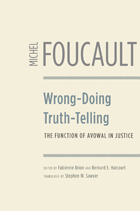 Wrong-Doing, Truth-Telling: The Function of Avowal in Justice
Michel Foucault
University of Chicago Press, 2014 Three years before his death, Michel Foucault delivered a series of lectures at the Catholic University of Louvain that until recently remained almost unknown. These lectures—which focus on the role of avowal, or confession, in the determination of truth and justice—provide the missing link between Foucault’s early work on madness, delinquency, and sexuality and his later explorations of subjectivity in Greek and Roman antiquity. Ranging broadly from Homer to the twentieth century, Foucault traces the early use of truth-telling in ancient Greece and follows it through to practices of self-examination in monastic times. By the nineteenth century, the avowal of wrongdoing was no longer sufficient to satisfy the call for justice; there remained the question of who the “criminal” was and what formative factors contributed to his wrong-doing. The call for psychiatric expertise marked the birth of the discipline of psychiatry in the nineteenth and twentieth centuries as well as its widespread recognition as the foundation of criminology and modern criminal justice. Published here for the first time, the 1981 lectures have been superbly translated by Stephen W. Sawyer and expertly edited and extensively annotated by Fabienne Brion and Bernard E. Harcourt. They are accompanied by two contemporaneous interviews with Foucault in which he elaborates on a number of the key themes. An essential companion to Discipline and Punish, Wrong-Doing, Truth-Telling will take its place as one of the most significant works of Foucault to appear in decades, and will be necessary reading for all those interested in his thought.
Wrongful Conviction: International Perspectives on Miscarriages of Justice
edited by C. Ronald Huff and Martin Killias
Temple University Press, 2009 Imperfections in the criminal justice system have long intrigued the general public and worried scholars and legal practitioners. In Wrongful Conviction, criminologists C. Ronald Huff and Martin Killias present an important collection of essays that analyzes cases of injustice across an array of legal systems, with contributors from North America, Europe and Israel. This collection includes a number of well-developed public-policy recommendations intended to reduce the instances of courts punishing innocents. It also offers suggestions for compensating more fairly those who are wrongfully convicted.
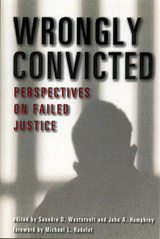 Wrongly Convicted: Perspectives on Failed Justice
Westervelt, Saundra D
Rutgers University Press, 2001 The American criminal justice system contains numerous safeguards to prevent the conviction of innocent persons. The Bill of Rights provides nineteen separate rights for the alleged criminal offender, including the right to effective legal representation and the right to be judged without regard to race or creed. Despite these safeguards, wrongful convictions persist, and the issue has reverberated in the national debate over capital punishment.
The essays in this volume are written from a cross-disciplinary perspective by some of the most eminent lawyers, criminologists, and social scientists in the field today. The articles are divided into four sections: the causes of wrongful convictions, the social characteristics of the wrongly convicted, case studies and personal histories, and suggestions for changes in the criminal justice system to prevent wrongful convictions. Contributors examine a broad range of issues, including the fallibility of eyewitness testimony, particularly in cross-racial identifications; the disadvantages faced by racial and ethnic minorities in the criminal justice system; and the impact of new technologies, especially DNA evidence, in freeing the innocent and bringing the guilty to justice. The book also asks such questions as: What legal characteristics do wrongful convictions share? What are the mechanisms that defendants and their attorneys use to overturn wrongful convictions? The book also provides case studies that offer specific examples of what can and does go wrong in the criminal justice system.
 Wrongs and Rights Come Apart
Nicolas Cornell
Harvard University Press, 2025 A bold challenge to a central assumption in modern moral and legal thinking, showing that wrongs and rights are not flip sides of the same coin but instead represent fundamentally distinct moral phenomena.
It is commonplace to regard rights and wrongs as mirror images of each other: to be wronged, we think, is to have one’s rights violated. According to this familiar picture of the moral landscape, there is an inescapable relationship between our claims on others and our complaints against them. Indeed, if to have a right means just that one can reasonably claim redress for being wronged, then there is really nothing separating wrongs and rights.
Legal scholar and philosopher Nicolas Cornell rejects this view. He argues that although wrongs and rights often correspond and overlap, they diverge systematically in a range of contexts and play substantively different roles in our lives. Wrongs are not merely the outline left where rights have been taken away, and rights are more than just the glimmer of future liability.
To make its case, Wrongs and Rights Come Apart engages a variety of examples from literature, legal cases, moral philosophy, and contemporary culture. In accessible, lively prose, Cornell explores topics such as illicit promises, forgiveness, animal rights, and economic exploitation. It turns out that potential wrongs—unlike rights—do not determine how we ought to conduct ourselves. And crucially, rights—unlike wrongs—do not tell us what corrective action is appropriate after a violation. Only by seeing rights and wrongs as distinct concepts, Cornell concludes, can we do justice to the richness of our interpersonal obligations.
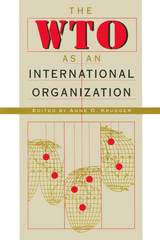 The WTO as an International Organization
Edited by Anne O. Krueger
University of Chicago Press, 1997 In this volume, some of the world's foremost authorities analyze the many challenges and opportunities confronting the WTO, addressing issues such as national policies, labor standards, and the environment. Presuming no technical background in economics, this is a comprehensive introduction to the WTO's place in the global economy and will appeal to anyone interested in world trade.
"[T]his book is a tour de force, with consistently fine papers by leading experts, and it is worthy of any bookshelf." —Joel P. Trachtman, American Journal of International Law
"This latest conference volume from the National Bureau of Economic Research is likely to be the definitive reference work on the WTO for years to come. . . . Specialists and non-specialists alike will gain a great deal from a careful reading of this impressive volume." —John Ravenhill, Australian Journal of Political Science
"For anyone who is interested in the further development of the rule system for the world economy, this book is a must." —Horst Siebert, Review of World Economics
Wûf
By Kemal Varol; translated by Dayla Rogers
University of Texas Press, 2020 Told through the voice of a canine narrator, Wûf is a surrealist wartime love story set in Turkey in the 1990s. The novel follows Mikasa, a street dog who recounts a tale of tragic wartime love at a kennel where he finds solace in storytelling and cigarettes. A book that took the Turkish literary world by storm, Kemal Varol’s Wûf tackles universal themes of love and loss with both humor and pathos. Translated by PEN/Heim Award winner Dayla Rogers, the novel renders in English a one-of-a-kind love story with a narrator its readers won’t soon forget.
Wunderkammer
Cynthia Cruz
Four Way Books, 2014 Within the world of Wunderkammer, or “cabinet of curiosities,” Cynthia Cruz archives the ruinous, the sparkling, the traumatic, and the decadent. These poems, through sensuous impressions, mimic what it’s like to wake from a dream only to realize you are still inside the dream. We encounter gluttony pinned against starvation—“ceiling high cream cakes, / I ran twelve miles in my ballet leotard” — and the glamorous mixed with the grotesque —“I follow a sequin / Thread of dead things.” Through “brutal music,” Wunderkammer grips at the edges of memory and chaos; these poems have “found the kill / And entered it.”
Wuthering Heights: A Study
U.C. Knoepflmacher
Ohio University Press, 1994 Wuthering Heights at once fascinates and frustrates the reader with the highly charged, passionate and problematic relationships it portrays. This study provides a key to the text by examining the temporal and narrative rhythms through which Brontë presents the dualities by which we commonly define our selfhood: child and adult, female and male, symbiosis and separateness, illogic and common sense, classlessness and classboundedness, play and power, free will and determinism. The novel’s concern with unitary and fragmentary selves has romantic antecedents in DeQuincey and Shelley and in Charlotte Brontë’s figuration of Emily as a lost other self. This concern is, in turn, reflected in the “after-life” of the text in the work of later artists such as George Eliot, Lawrence, Buñuel, and Truffaut.
Wuthering Heights on Film and Television: A Journey Across Time and Cultures
Valérie V. Hazette
Intellect Books, 2015 Emily Brontë’s beloved novel Wuthering Heights has been adapted countless times for film and television over the decades. Valérie V.Hazette offers here a historical and transnational study of those adaptations, presenting the afterlife of the book as a series of cultural journeys that focuses as much on the readers, filmmakers, and viewers as on the dramas themselves. Taking in the British silent film; French, Mexican, and Japanese versions; the British television serials; and more, this richly theoretical volume is the first comprehensive global analysis of the adaptation of Wuthering Heights for film and television.
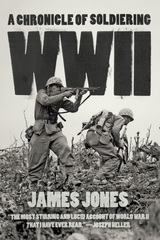 WWII: A Chronicle of Soldiering
James Jones
University of Chicago Press, 1975 In 1975, James Jones—the American author whose novels From Here to Eternity and The Thin Red Line had made him the preeminent voice of the enlisted man in World War II—was chosen to write the text for an oversized coffee table book edited by former Yank magazine art director Art Weithas and featuring visual art from World War II. The book was a best seller, praised for both its images and for Jones’s text, but in subsequent decades the artwork made it impossible for the book to be reproduced in its original form, and it fell out of print and was forgotten. This edition of WWII makes available for the first time in more than twenty years Jones’s stunning text, his only extended nonfiction writing on the war that defined his generation.
Moving chronologically and thematically through the complex history of the conflict, Jones interweaves his own vivid memories of soldiering in the Pacific—from the look on a Japanese fighter pilot’s face as he bombed Pearl Harbor, so close that Jones could see him smile and wave, to hitting the beach under fire in Guadalcanal—while always returning to resounding larger themes. Much of WWII can be read as a tribute to the commitment of American soldiers, but Jones also pulls no punches, bluntly chronicling resentment at the privilege of the officers, questionable strategic choices, wartime suffering, disorganization, the needless loss of life, and the brutal realization that a single soldier is ultimately nothing but a replaceable cog in a heartless machine. As the generation that fought and won World War II leaves the stage, James Jones’s book reminds us of what they accomplished—and what they sacrificed to do so.
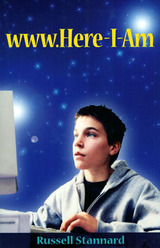 Www.Here I Am
Russell Stannard
Templeton Press, 2002
Sam didn't think much of religion. What with science being able to explain almost everything about us and about the world we live in, there didn't seem much point to believing in God any more. But then came the day Sam was exploring the Internet, and stumbled across God's website! At least, that was what it claimed to be.
Sam decides to investigate, and becomes engrossed in conversations with the mysterious person on the other end. Together they explore the great questions arising out of evolution, astronomy, cosmology, the laws of nature, and the possibility of miracles. Not that Sam knew much science. Fortunately the stranger was able to explain the science from scratch in a way that Sam could understand. They also tackled the problems of evil, suffering, and death; that really set Sam thinking.
Readers will be challenged to form their own personal responses to the issues raised based on a listing of forty questions at the back of the book. Sample questions include:
•What do you hope to achieve in your lifetime?
•Does belief in God play a part in that?
•Do you believe in evolution—that you came from animals?
•Do you think there is life on other planets?
•If so, does that make human beings less important?
•Do the world religions contradict each other, or are they simply talking about the same God in somewhat different ways?
•How should belief in an afterlife affect the way you live this life?
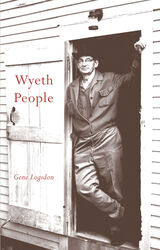 Wyeth People
Gene Logsdon
Ohio University Press, 2003 In the 1960s, just beginning his career as a writer, Gene Logsdon read a magazine article about Andrew Wyeth in which the artist commented at length on his own creative impulse. What he said seemed so true and right and so directly applicable to writing as well as to painting that the young writer was transfixed. He was resolved to talk to Andrew Wyeth, even though warned that the artist could be as elusive as a wild rabbit. Not quite by accident, the writer and the painter met in a roadside diner, and what happened from then on is what Wyeth People is about—an effort to explain a famous artist, his work, and the people who love it, by an intrigued outsider. Wyeth People is the result of Gene Logsdon’s search to find the colorful people Wyeth painted and to interview them. Originally published in 1969, Wyeth People describes how the author solved the mystery of the creative impulse, at least to his own satisfaction. As Logsdon writes: “The story of my search for why I (and millions of other people) find Wyeth’s art among the greatest that human culture has produced, is ongoing. I may never fully end my quest. But this I know. I was lucky enough to have participated in some small way in the cultural process by which an artist and his work became a classic part of American tradition. "That I was able to talk to people like Karl Kuerner and Forrest Wall produced in me the same kind of knowledge and exhilaration that I would gain if I were viewing Michelangelo’s David and David came alive and spoke to me.”
Wyndmere
Carol Muske
University of Pittsburgh Press, 2023 Wyndmere is a town in North Dakota where Carol Muske’s mother was born, and where she visited as a child. Muske’s grandparents are buried there, and it is where her mother met and married her father. Now almost a ghost town, Wyndmere is the source of imagery in many of these poems, as well as the idea of Wynd-mere, wind-mother, both inspiration and principle of separation.
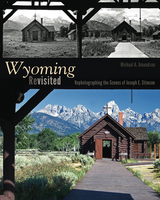 Wyoming Revisited: Rephotographing the Scenes of Joseph E. Stimson
Michael A. Amundson
University Press of Colorado, 2014 In Wyoming Revisited, Michael A. Amundson uses the power of rephotography to show how landscapes across the state have endured over the last century. Three sets of photographs—the original black-and-white photographs taken by famed Wyoming photographer Joseph E. Stimson more than a century ago, repeat black-and-white images taken by Amundson in the 1980s, and a third view in color taken by the author in 2007–2008—are accompanied by captions explaining the history and importance of each site as well as information on the process of repeat photographic fieldwork. The 117 locations feature street views of Wyoming towns and cities, as well as views from the state's famous natural landmarks like Yellowstone National Park, Grand Teton National Park, Devil's Tower National Monument, Hot Springs State Park, and Big Horn and Shoshone National Forests. In addition, Amundson provides six in-depth essays that explore the life of Joseph E. Stimson, the rephotographic process and how it has evolved, and how repeat photography can be used to understand history, landscape, historic preservation, and globalization. Wyoming Revisited highlights the historic evolution of the American West over the past century and showcases the significant changes that have occurred over the past twenty-five years. This book will appeal to photographers, historians of the American West, and anyone interested in Wyoming's history or landscape.
The publication of this book is supported in part by the Wyoming Cultural Trust Fund.
|
|
